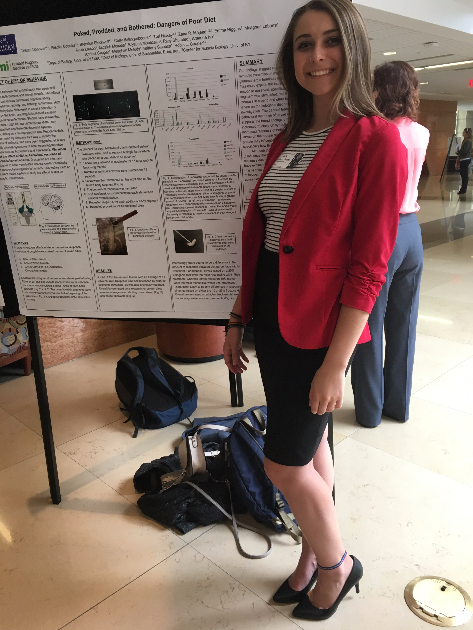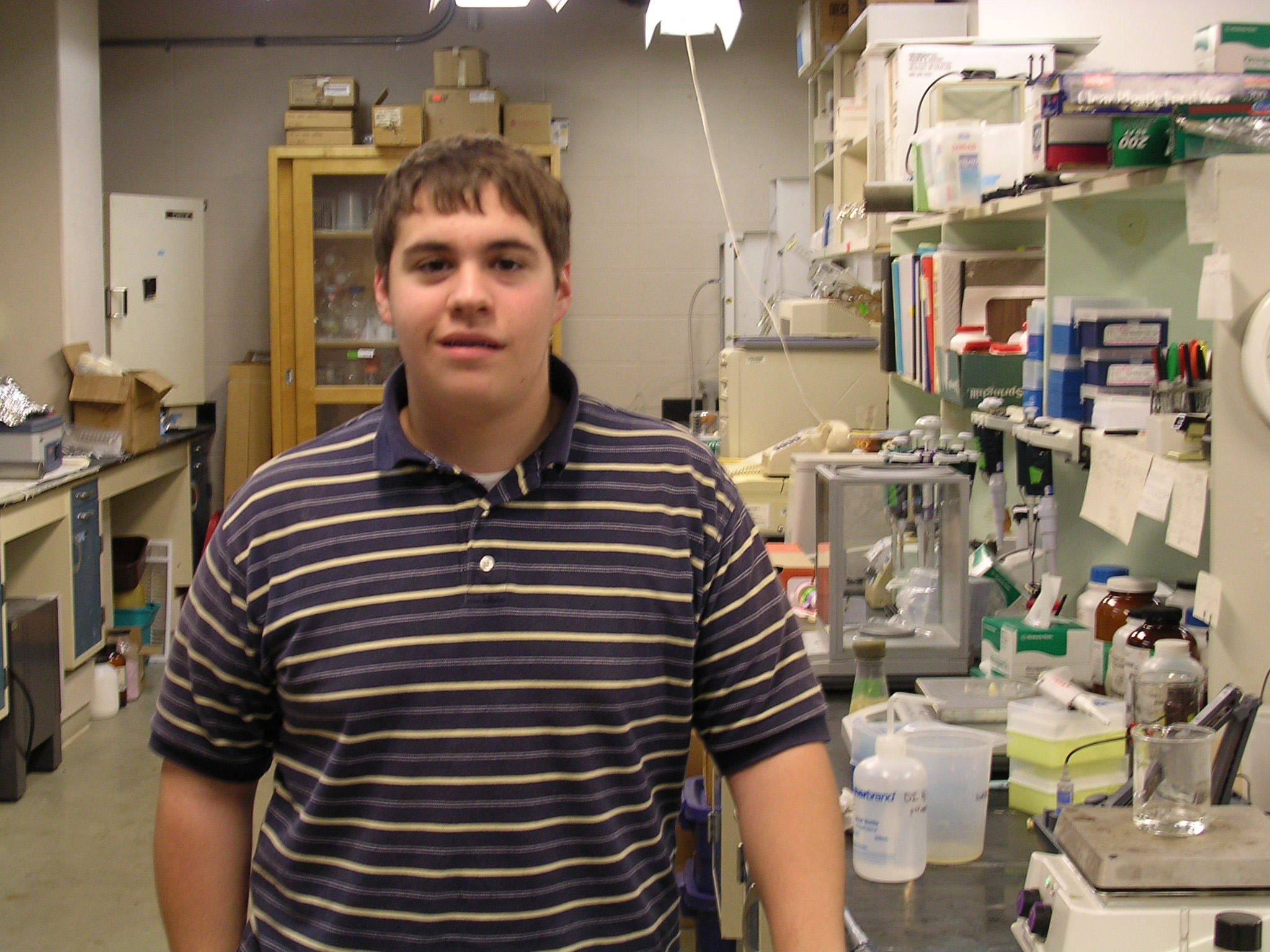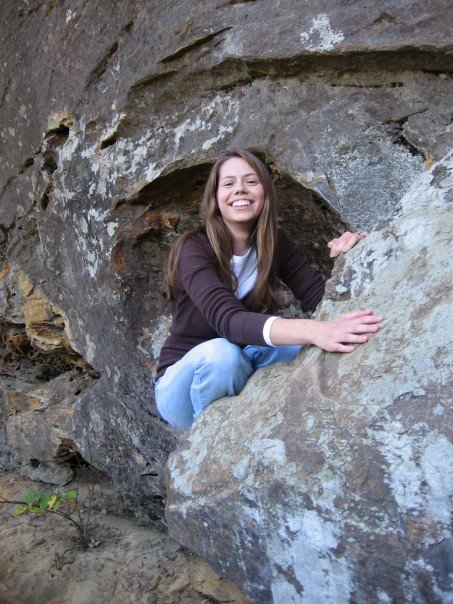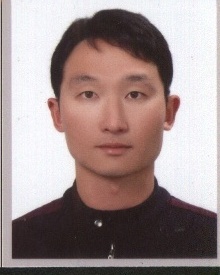Students prior to Spring 2022
Students that recently worked in the lab and have now moved on:
Kaitlyn Brock
.
Bio 394 research..(Spring 2022-Spring 2024)
...Kaitlyn E. Brock- Beckman Fellow 18K Award !!! 2023-2024 ....go to
Maria Hadjisavva
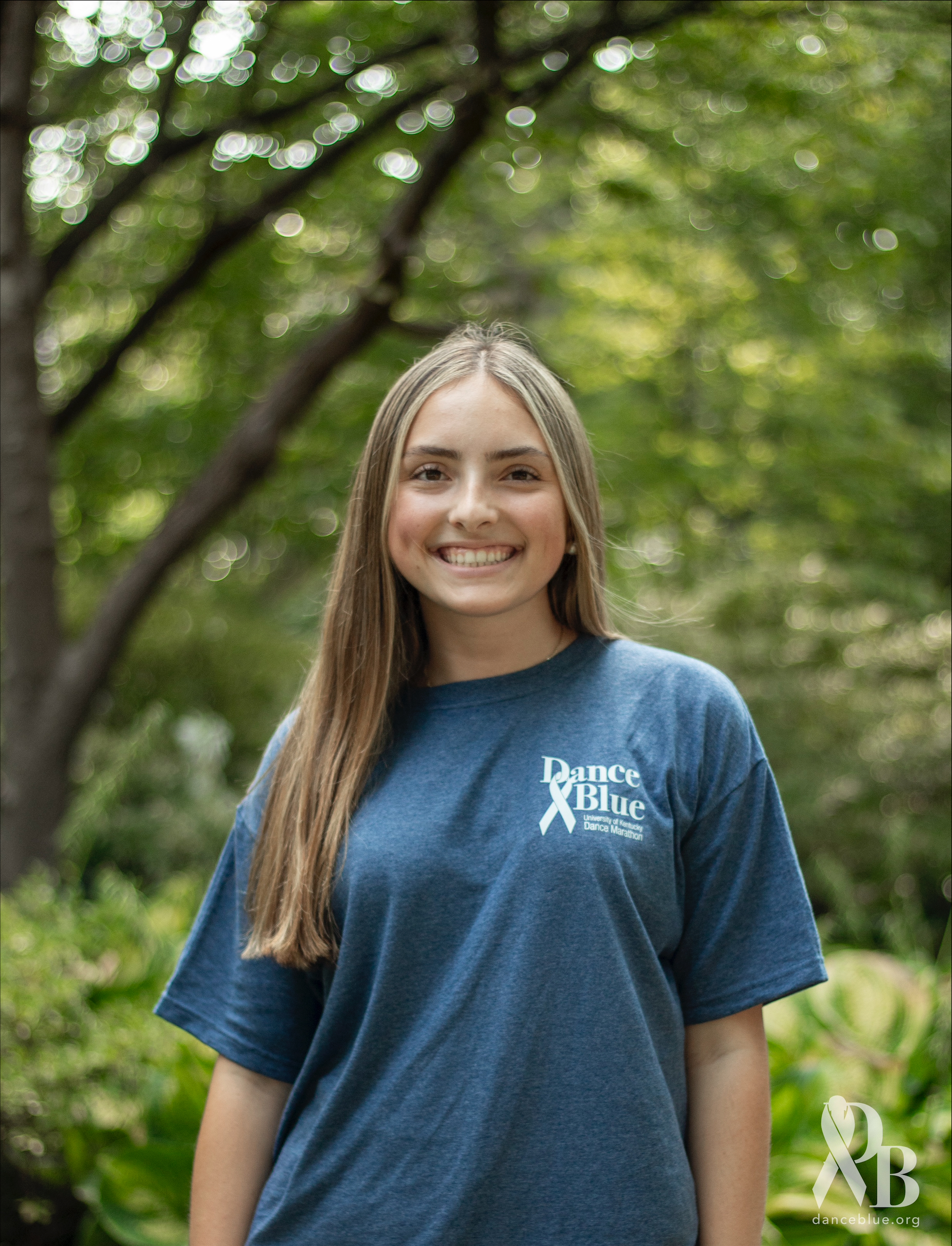
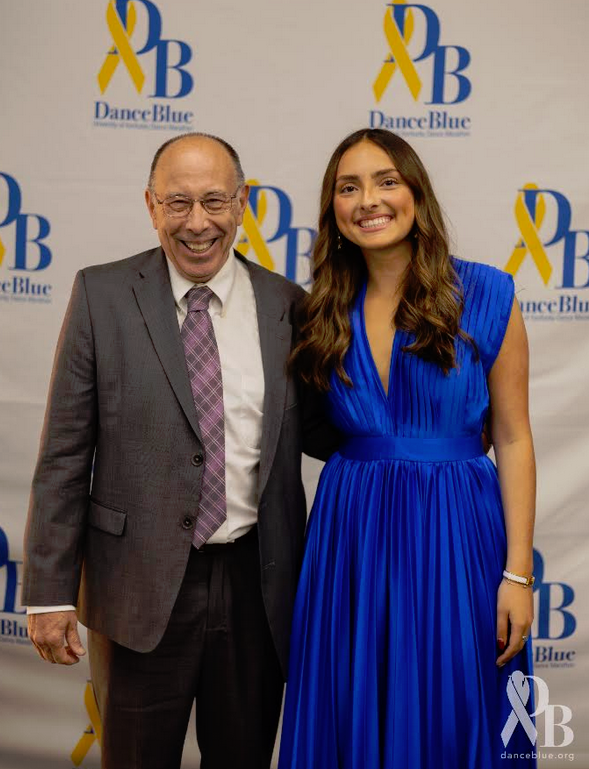
Fall 2024-Spring 2025
Elizabeth (Beth) Elliott

Bio 395 research and helping to mentor StemCats 2023
(Fall 2022)(Spring 2023 & 2024) Ribble fellowship $1,500
Write up on her sucesss in her 1st year at UK (PDF)
https://bio.as.uky.edu/elizabeth-%E2%80%9Cbeth%E2%80%9D-elliott
& Beckman Fellow 18K Award !!! 2024-2025
https://uknow.uky.edu/research/2-uk-undergraduate-students-named-beckman-scholars
Jaycie Gard
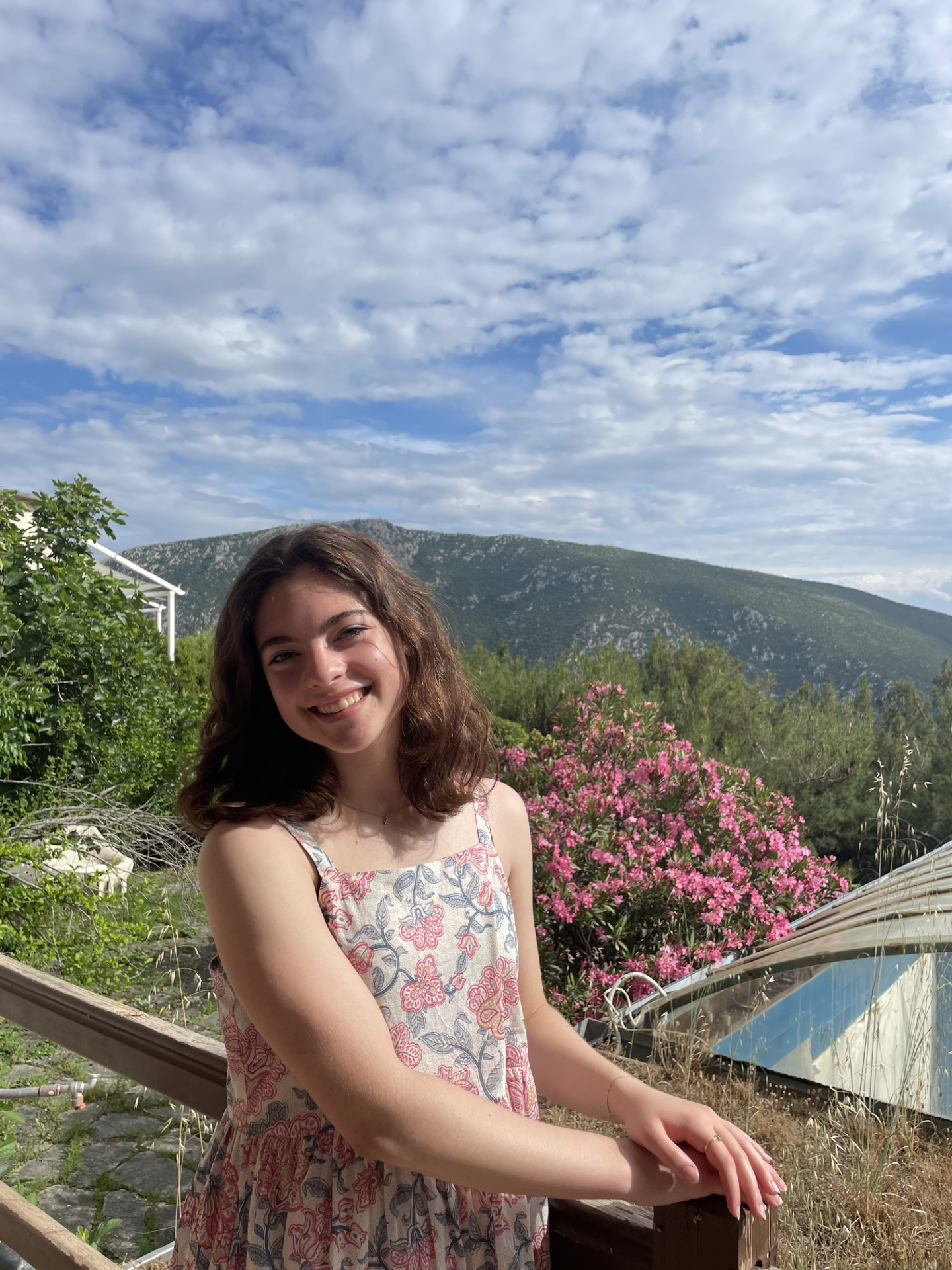
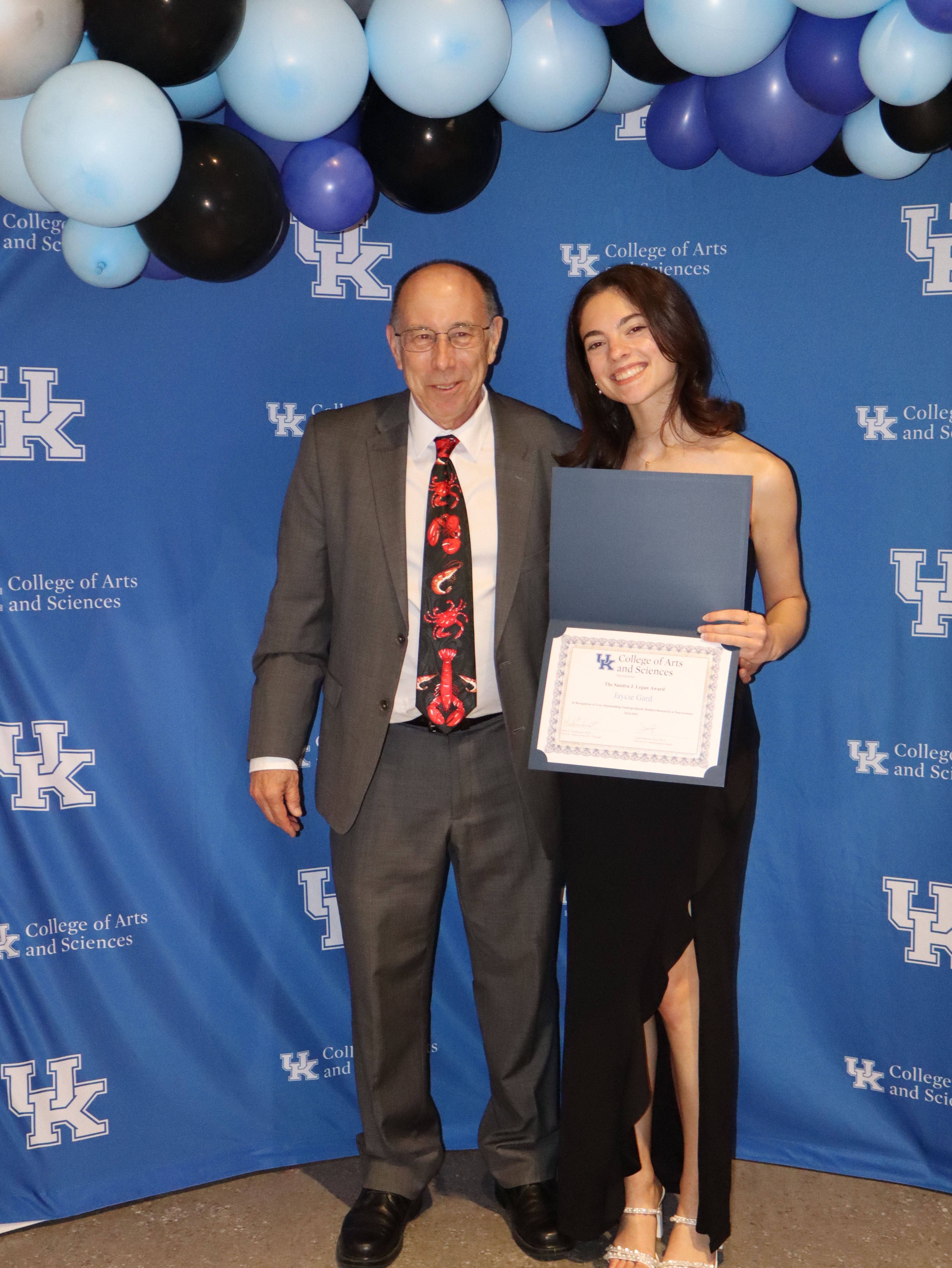
Bio 394 research
Alaina Taul
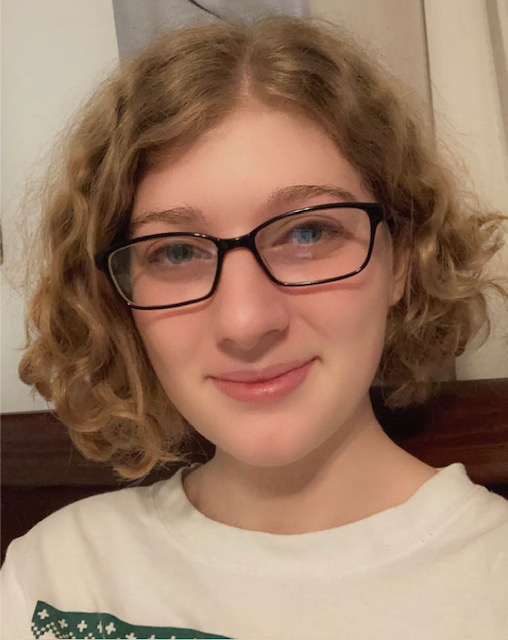
Bio 394 research - Fall 2023-Spring 2024
Shelby McCubbin 2020-2022- she is back 2024 summer

2nd year Med school summer fellowship 2024
Maya Abul-Khoudoud-Spring 2023

Bio 394 research- on going project even though she is in medical school
Christine Haddad
.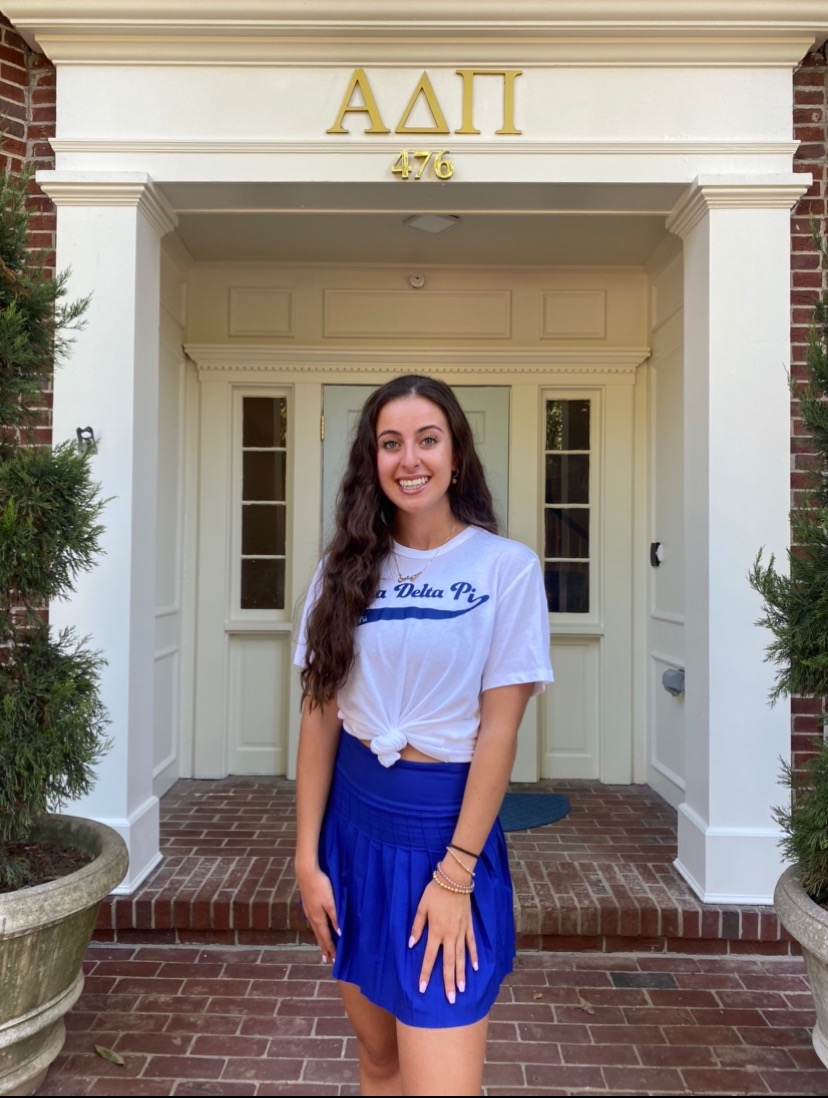
Bio 395 research- (Spring 2022- Fall 2023) Ribble fellowship $1,500
Chloe Farmer

Summer-fall & spring-2023/24 High school researcher
Ainjini Patra (Summer 2022-Fall 2022 - Fall 2024)
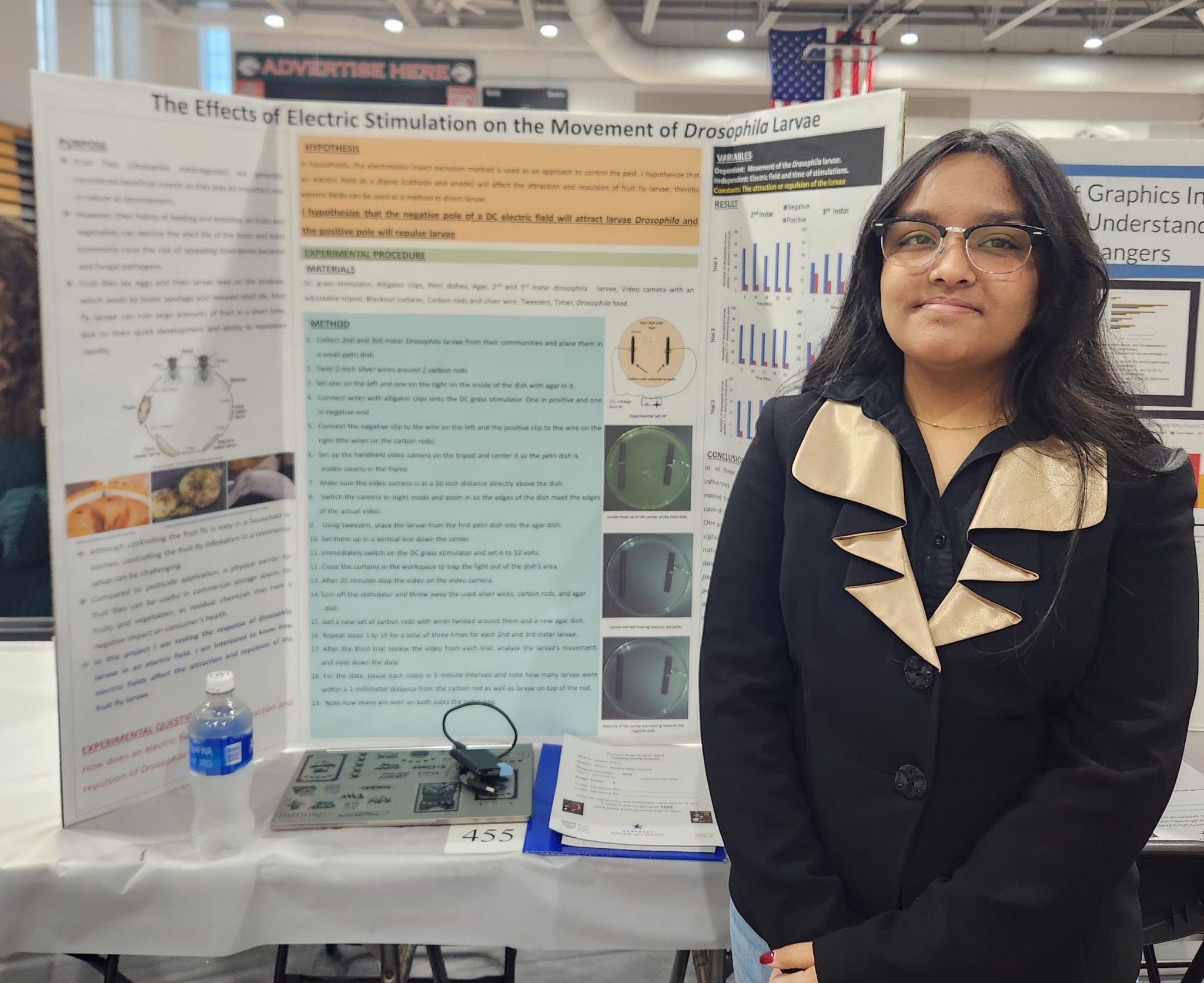
High School Student working on Science fair project
Tessa Burnette
Bio 394 research -Spring 2024
Hunter Rayens
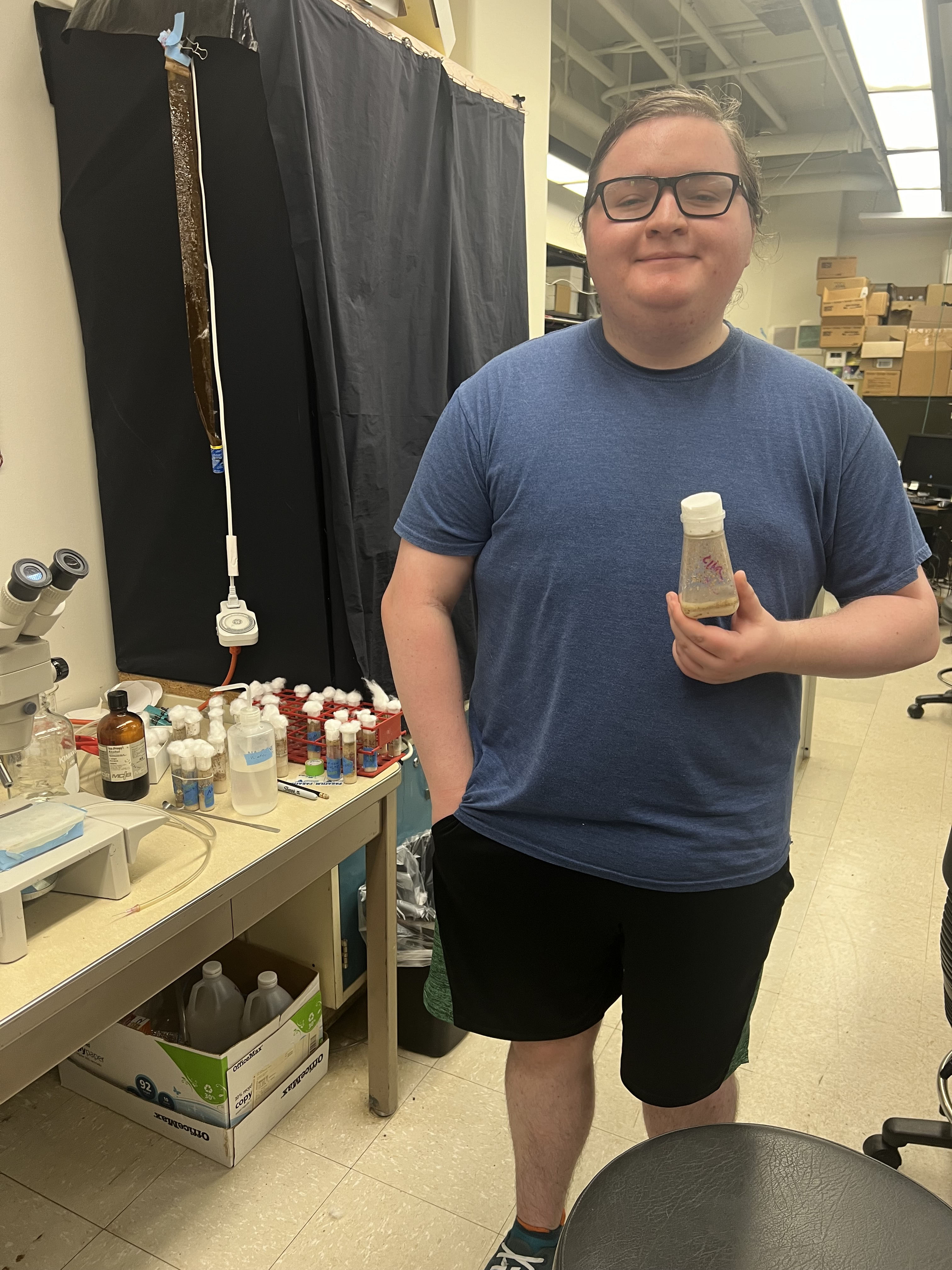
Summer research - 2024
Joshua Griffith

Bio 394 research -Spring 2024
Terra Yarbrough

Bio 394 research -Spring 2024
Devan Neely is back after 2 years. Fall 2023

Bio 394 research
Nicole Hensley (Fall 2022)

Bio395/398 research on larval Drosophila hearts
Jodi Ogle (Fall 2022)
Bio395/398 research on crayfish social behaviors
Mikaela Wagers (Summer & Fall 2022)

Bio 395 research working on the effects of Fe3+ on physiological functions
Amin Katanbaf - Spring 2023

Bio 395 research
Hannah Tanner (2022-2023- back as a MS student)

Master in Science in Medical Sciences student in the UK-Med School MSMS program
Grace Jacobs ( Summer 2021, Fall 2021 & Spring 2022)
Bio395 and volunteering on projects
Shelby McCubbin (lots of neat projects) 2020-2022
Neuro Fellow, UK Neuroscience Institute (Spring 2021)

Rachael Vascassenno (Summer 2022)

KBRIN research on many physiological functions
Lindsey Moffitt (Spring & Summer 2022)
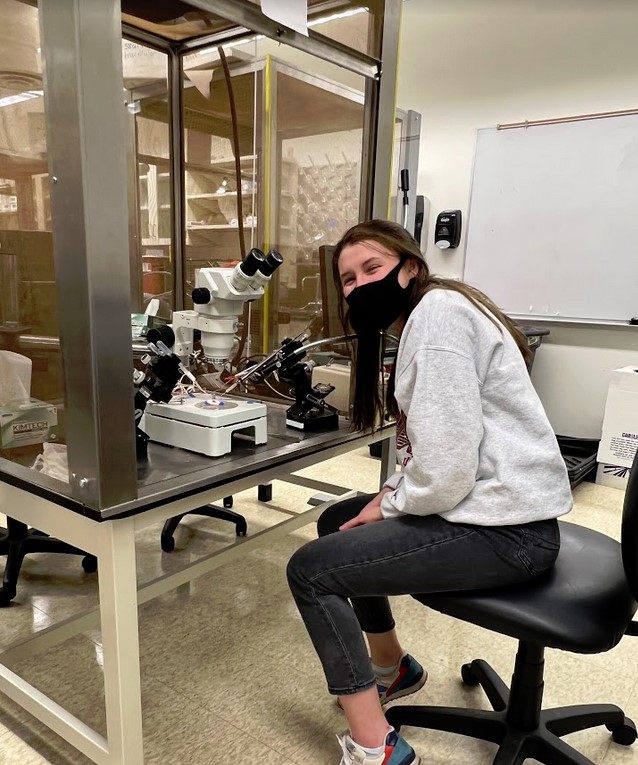
Bio 395 research worked with Drs. Nicholas McLetchie and Robin Cooper.
Ashley Starks (Spring 2022)
Bio 395 research.
Jawad Saleem (Spring 2022)
.
Bio 395 research
Rachel Potter (back in the lab after 3 years out Fall 2021 &Spring 2022)

4th year medical student at UKY (elective for research).
Alexis (Lexie) Meade (Fall 2021 and spring 2022)

Bio395 research. I am working with Rachel Potter on a project
Devan Neely (Fall 2021)

Bio 394 research
Bio 394 research
Nicole T. Marguerite (Researched on the effects of LPS and TRPA channels)
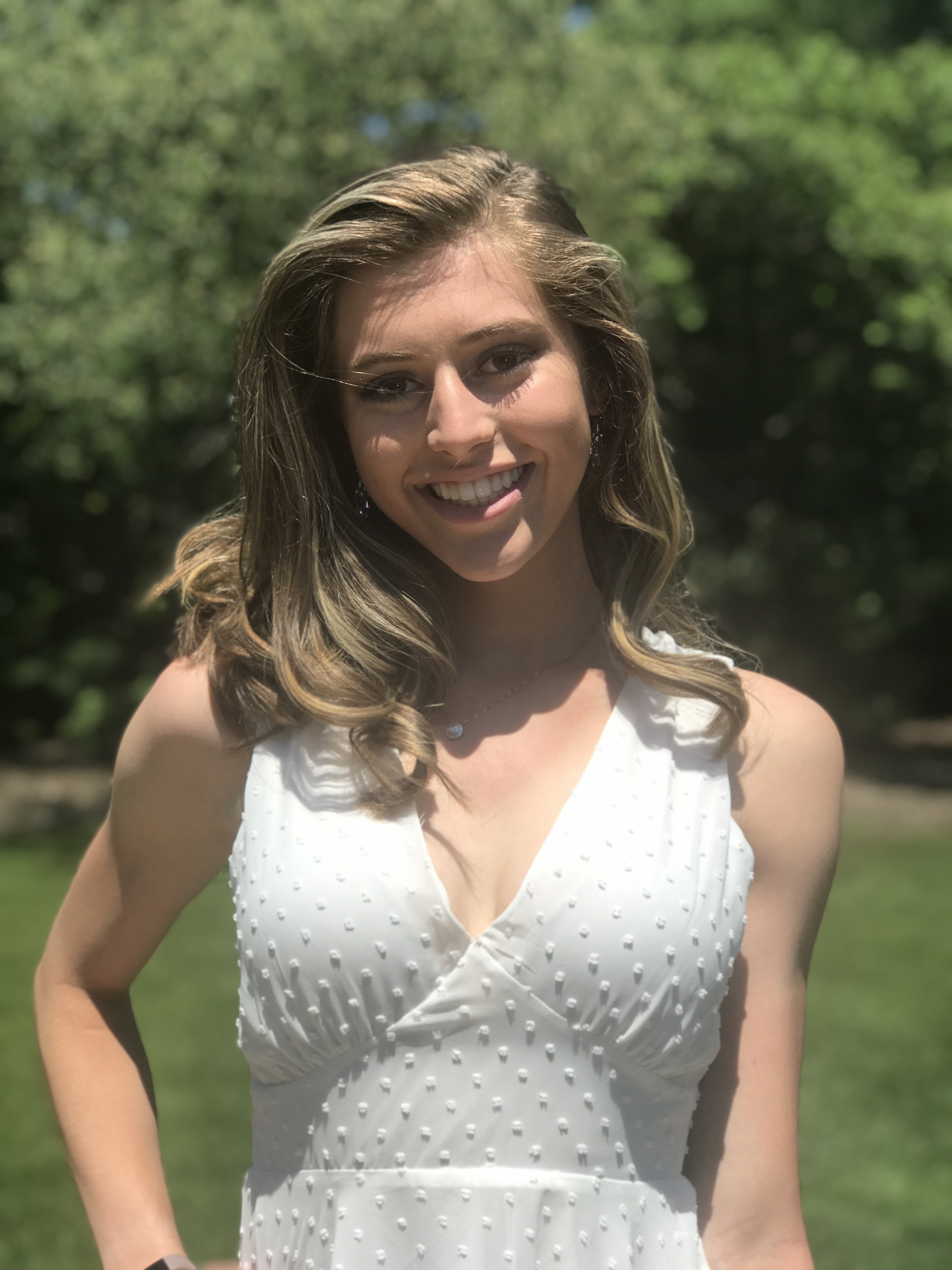
Cecilia Pankau (Spring, Summer & Fall2021)
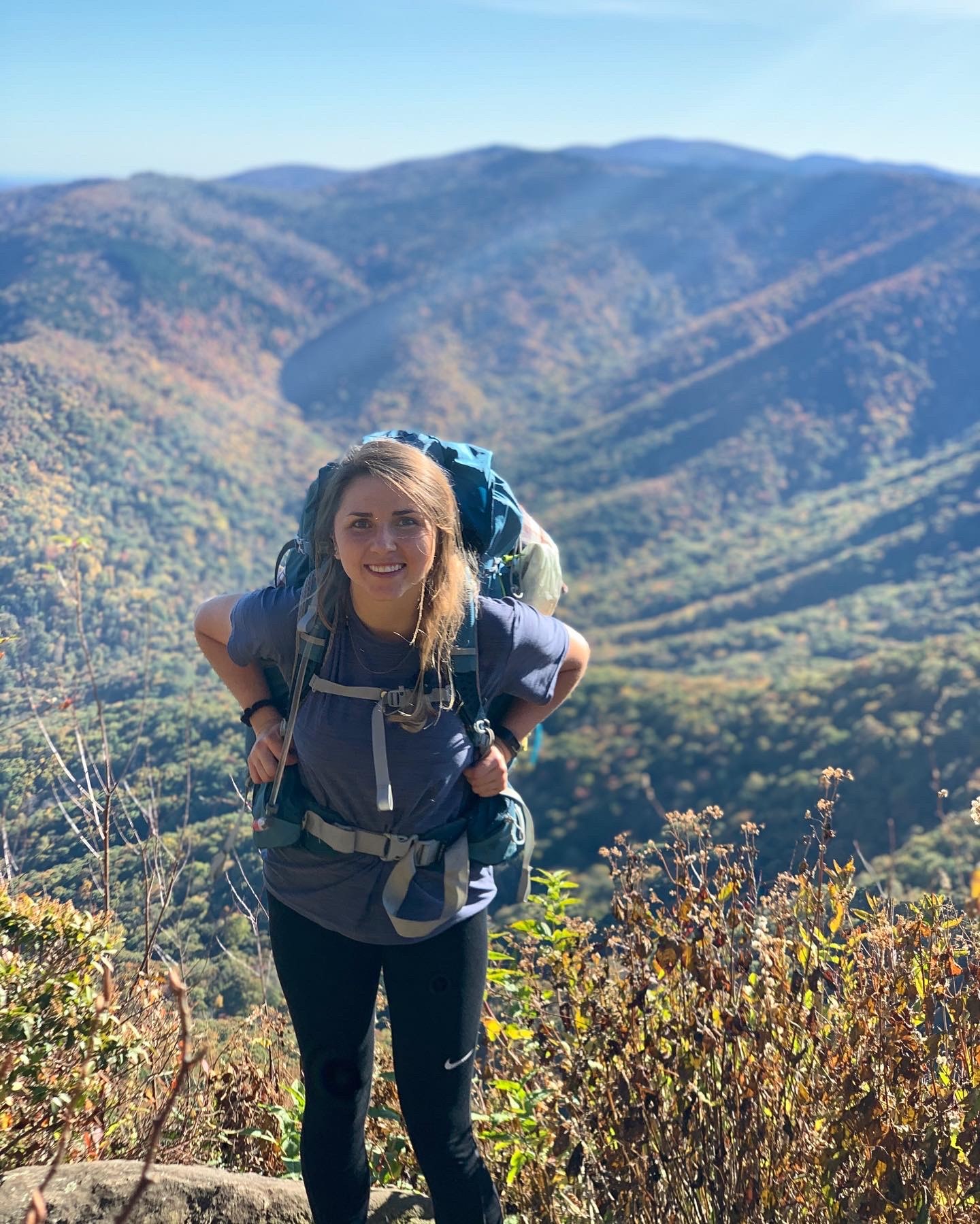
Bio 394 research
Nyla Parker (Summer 2021)
Neuro Fellow, UK Neuroscience Institute (Summer 2021)

Hannah Tanner (Summer 2021)

Summer KBRIN scholar 2021
Aubrey Wehry (Summer & Fall 2021)

Bio 395 research.
Tristan Donovan (2021... back from 2017)
The gang:


Abigail Greenhalgh

Fall 2018- 2021-
Vaaragie Subramaniam-2021

Noah de Castro 2019-2020
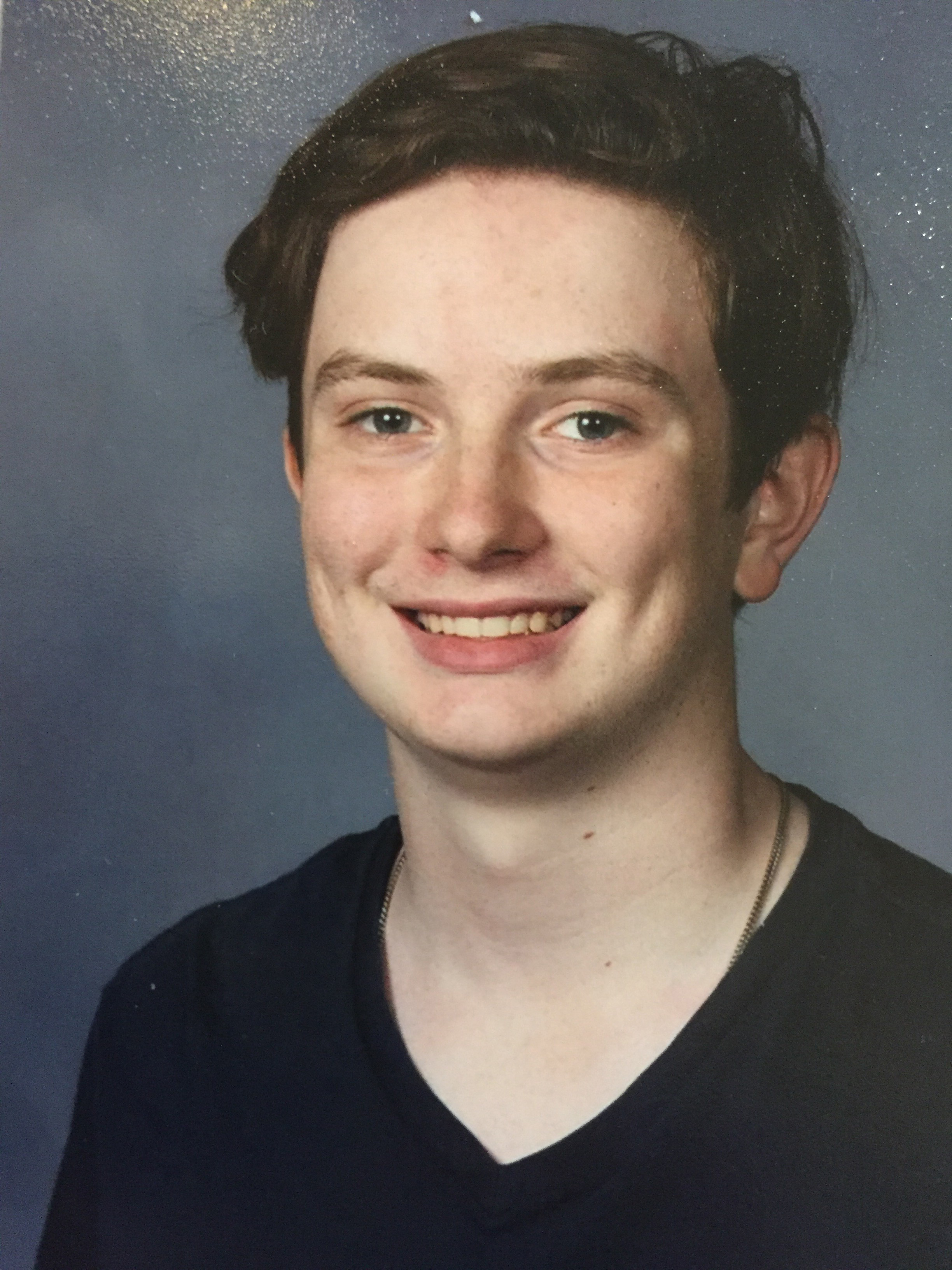
High school student working on cool projects.
Venky Suryadevara 2019-2020

High school student working on neat plant projects.
Dara Buendia Castillo-2020

Graduate rotational student
Blair Nethery (worked on a cool Bio446 project )
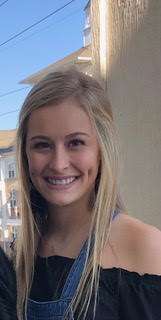
Jate Bernard (Researched on the effects of LPS and TRPA channels))

Oscar Istas (Fall 2018- 2020 )

Catherine Stanley (Spring 2019- 2020)
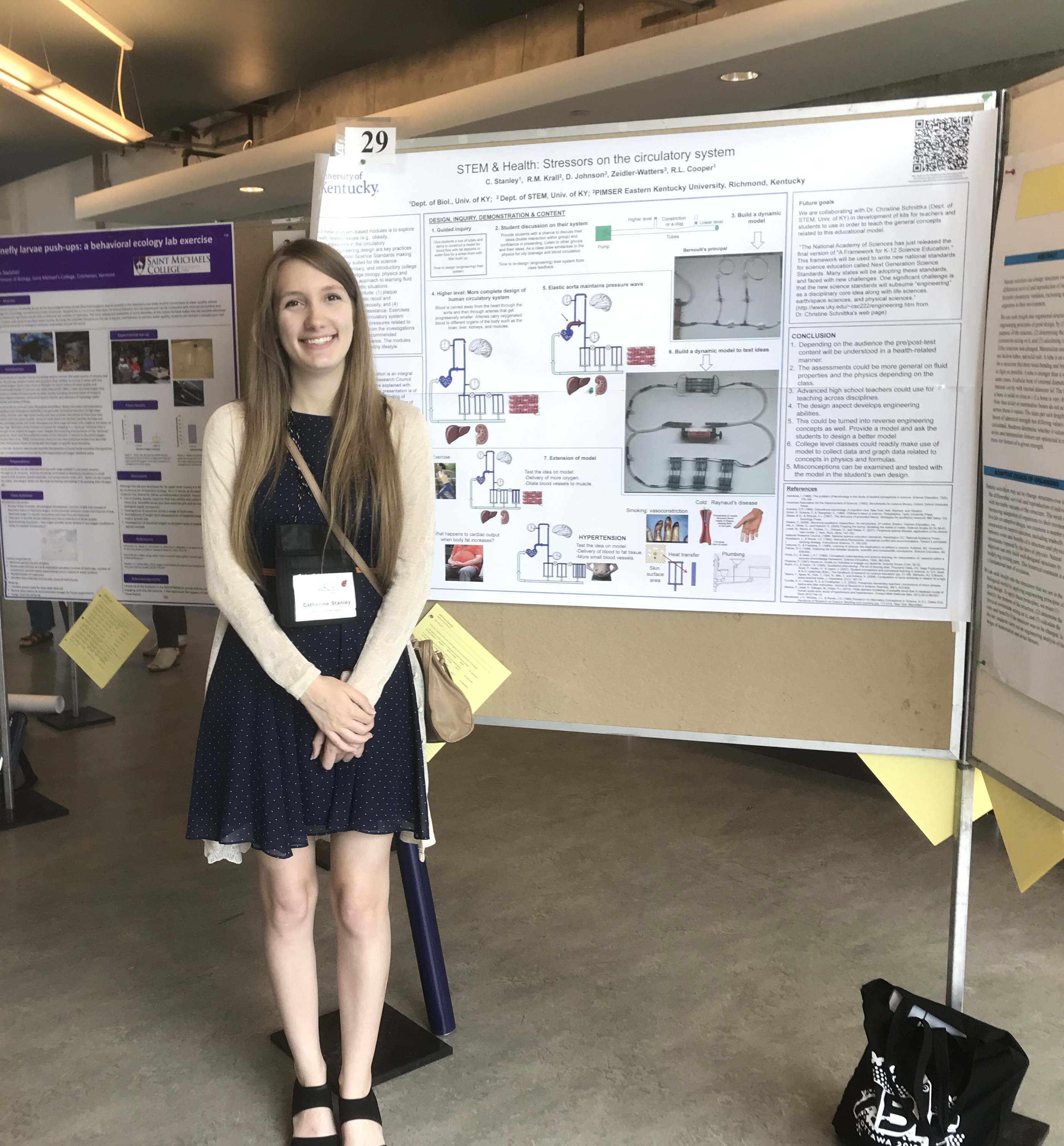
Gradaute student (Masters-Thesis)
Carly Ballinger Boone (Fall 2017-2020)
Check out her YouTube movie https://youtu.be/cgF14pvKOLw
Tawny Aguayo-Williams

Summer 2019. I was part of the STEM program.
Anna Jeoung
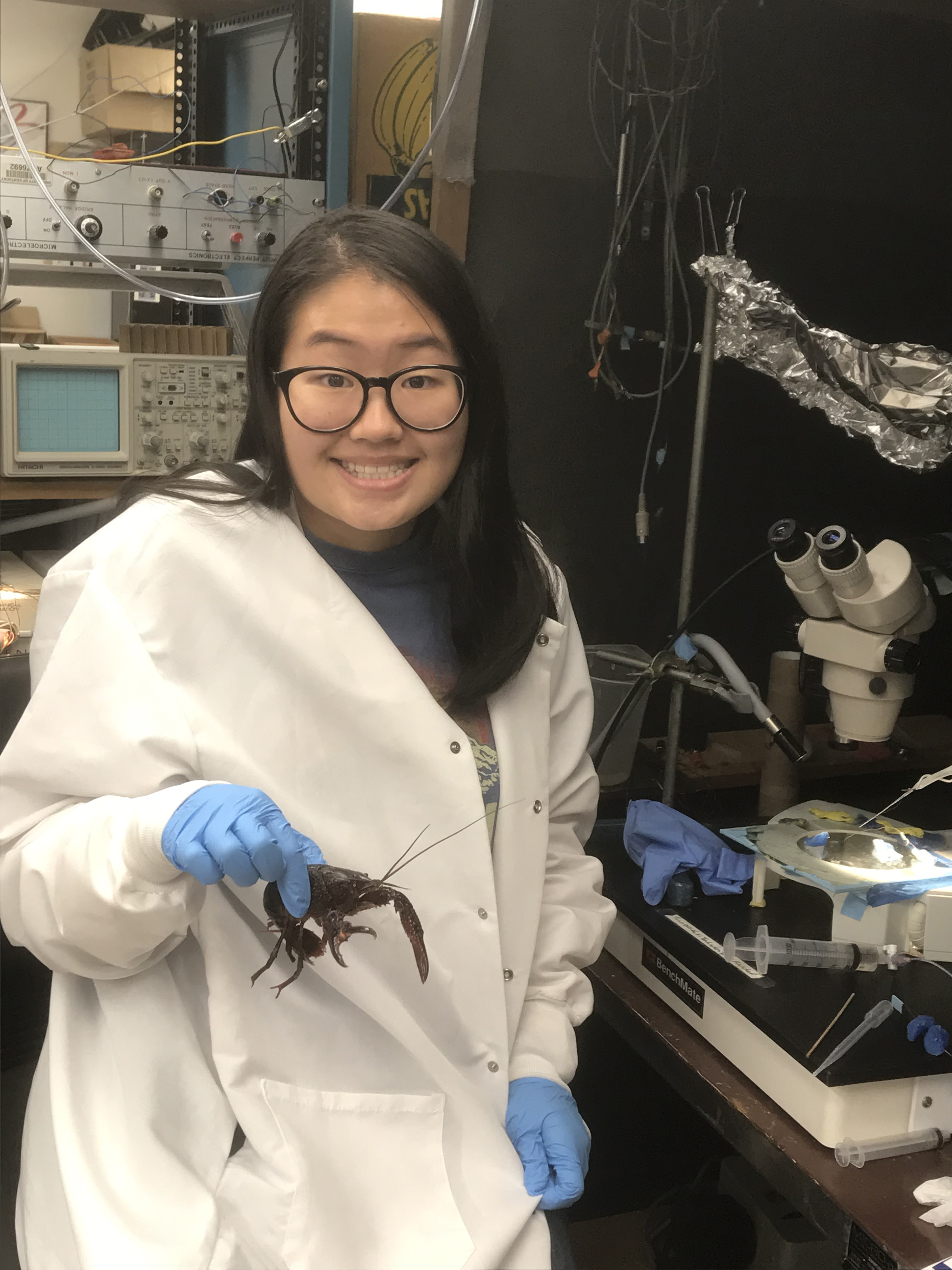
Fall 2019. I was a high school student working in the lab
Micaiah McNabb (Spring 2018, Fall 2019 Summer 2019)
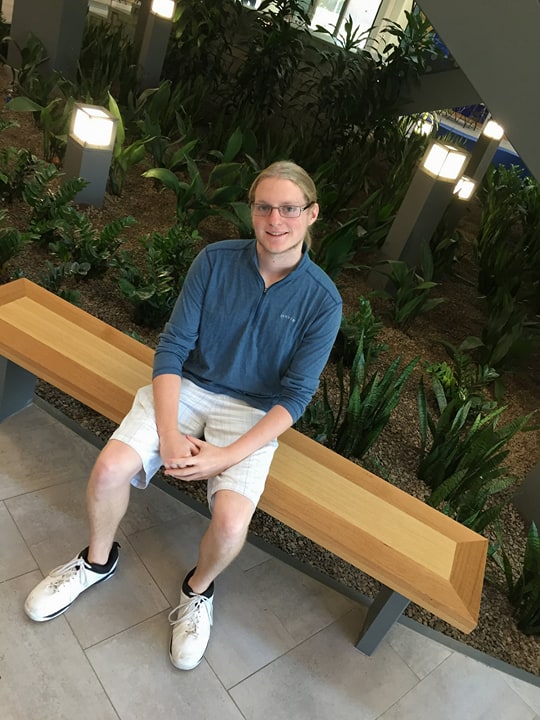
Umair Bhutto (Spring 2018 and many others)

Christa Saelinger (Fall 2018 and others)
Rebecca Adams
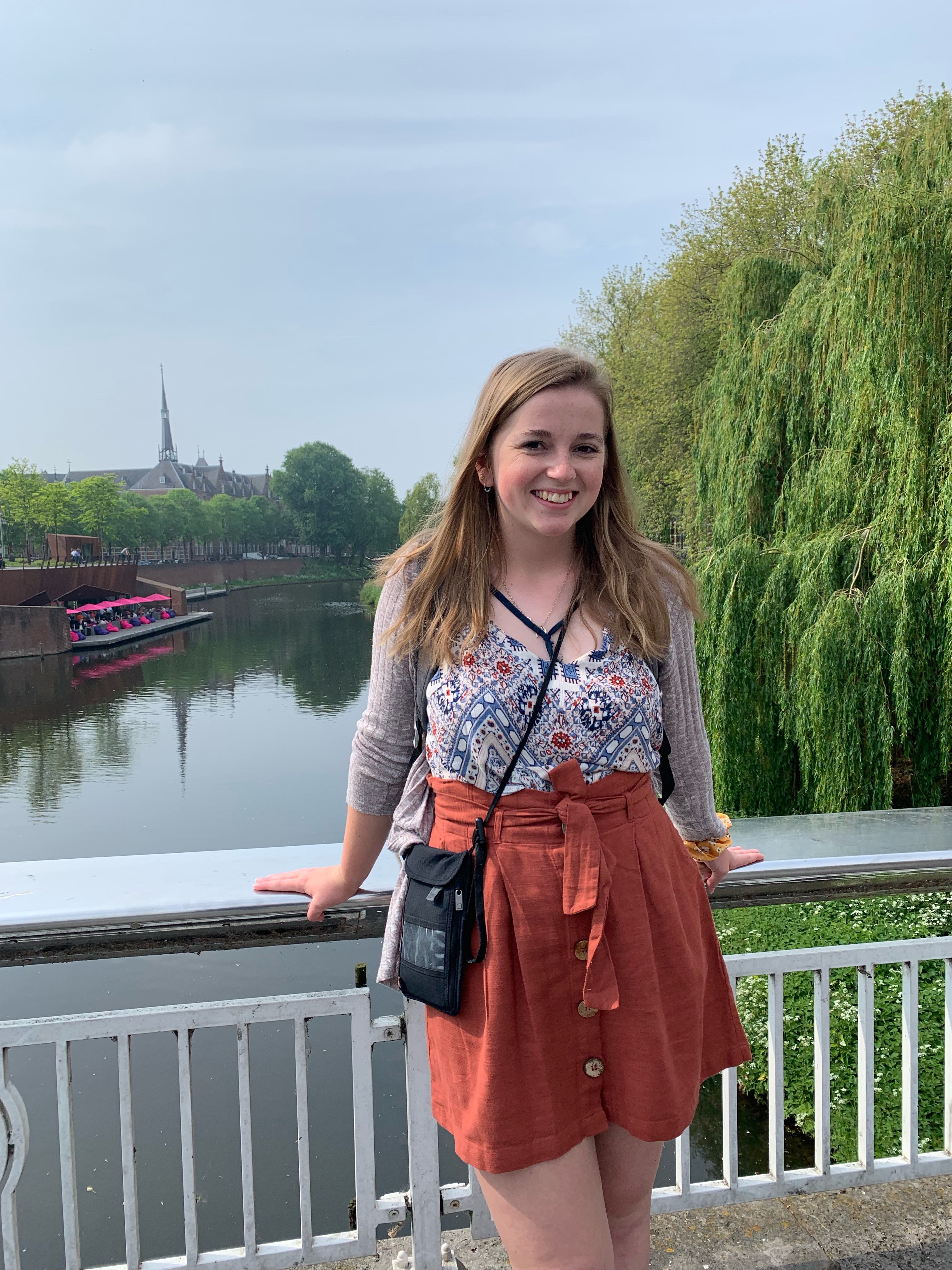
Summer 2019 KBRIN
Samuel
J. Potter is back for October 2019.
Wrapping up an old project.
Samuel Wycoff (for many years)
I was a high school student from Dunbar conducting research in the lab and now I am an undergraduate at UK working on the neural regulation and environmental issues in a crayfish model
Eashwar Somasundaram (for many years)

Spring 2016:The goal of this project is to obtain a better characterization of acetycholine (Ach) action and receptor subtypes in the Drosophila melanogaster nervous system.
Alex Stanback- Masters with a thesis (Fall 2017-Sping 2018)
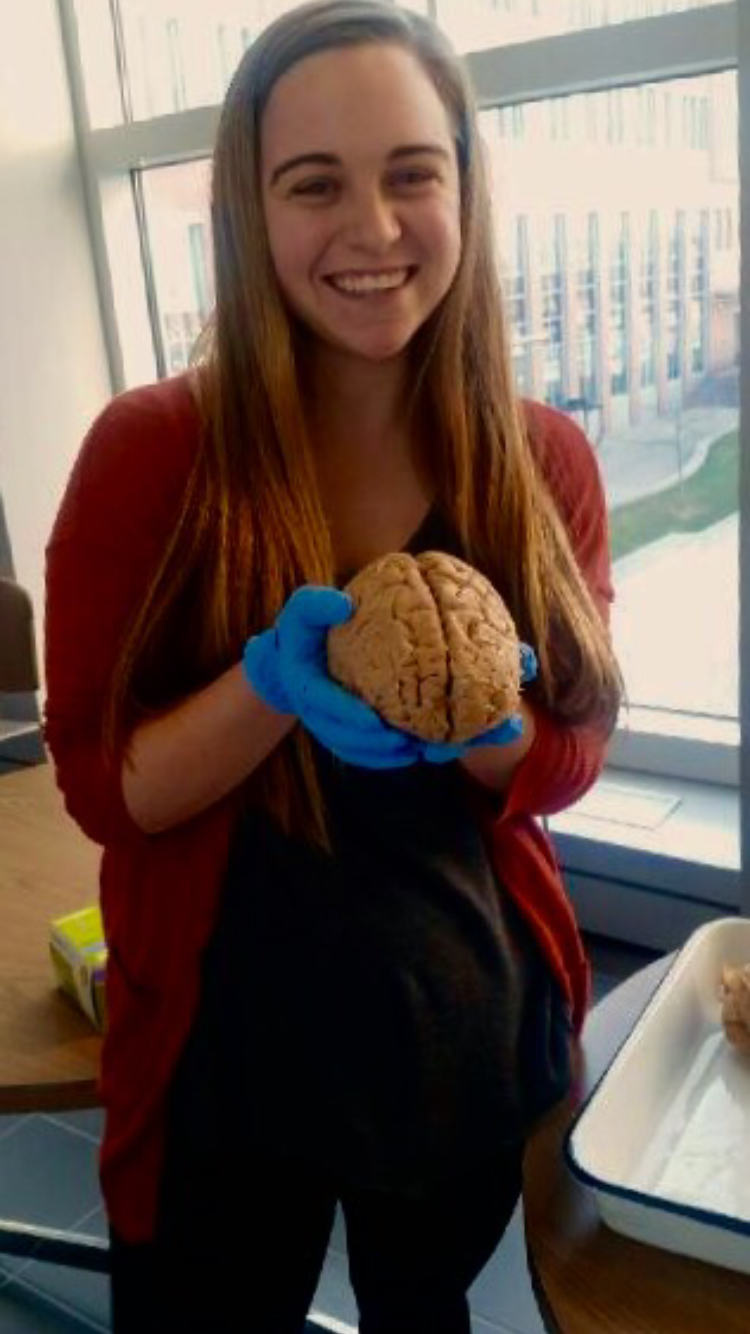
Maddie Stanback (Stanback sisters)

Spring 2018
Chinni Suryadevara

Fall 2018
Christina Hermanns (Spring 2017- Summer 2018)

Ogechi Anyagaligbo
Spring 2018- present.
Mohsin Akhtar

Summer 2018 - Sayre High school.....starting at UK this coming semester
Nicole Audia
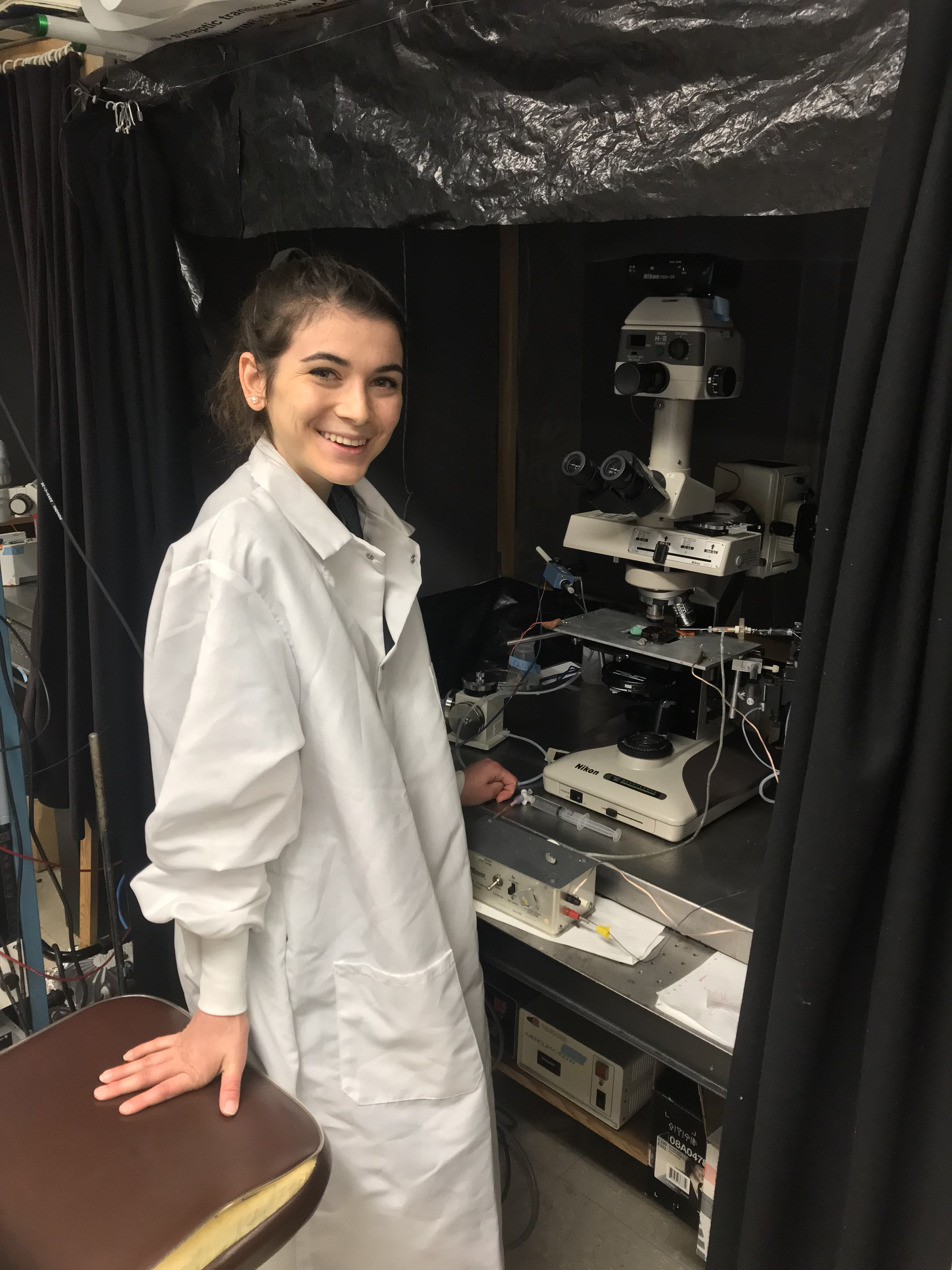
Summer 2018 - Visiting the lab and helping out on projects.
Juma Baryaa
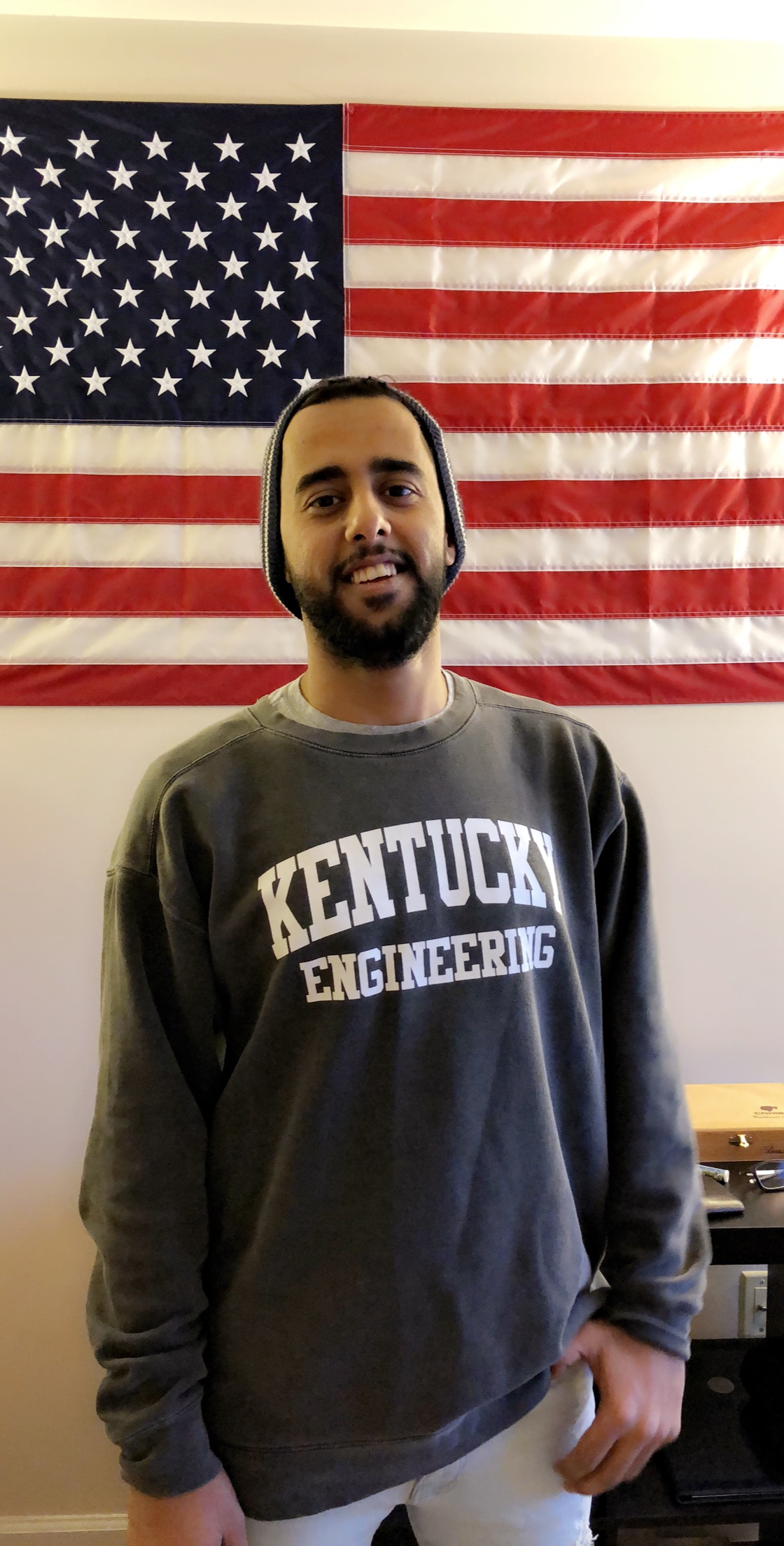
Summer 2018 - Working on quantal analysis projects.
Tristan Donovan (Fall 2017)
>>>>>>>>>>>>>
Awards from the Ky Academy of Sciences meeting:
http://www.kyacademyofscience.org/members/awards.php?page=undergrad_posters&year=2013
PHYSIOLOGY AND BIOCHEMISTRY - Undergrad
1st: Esraa A. Abdeljaber - University of Kentucky
2nd: Clara deCastro - University of Kentucky (Clara
is a really a high school student who competed as an undergrad ! )
http://www.kyacademyofscience.org/members/awards.php?page=grad&year=2013
PHYSIOLOGY AND BIOCHEMISTRY -Grad
2nd: Zana R. Majeed - University of Kentucky
SCIENCE EDUCATION -Grad
2nd: Josh Titlow - University of Kentucky
Ms. Stacy, Ms Burns and Mr. Potts awarded at a Ribble Dinner
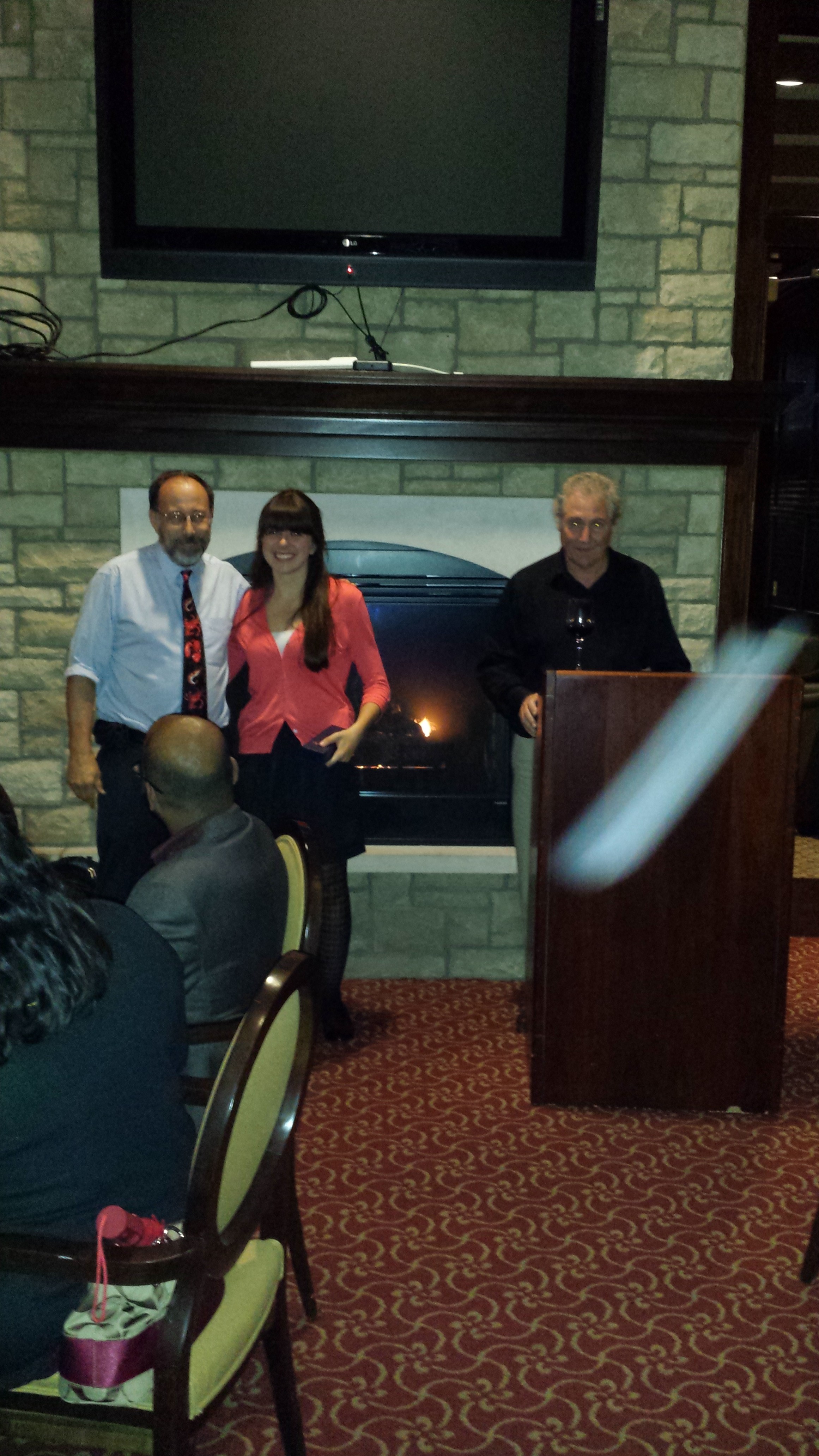
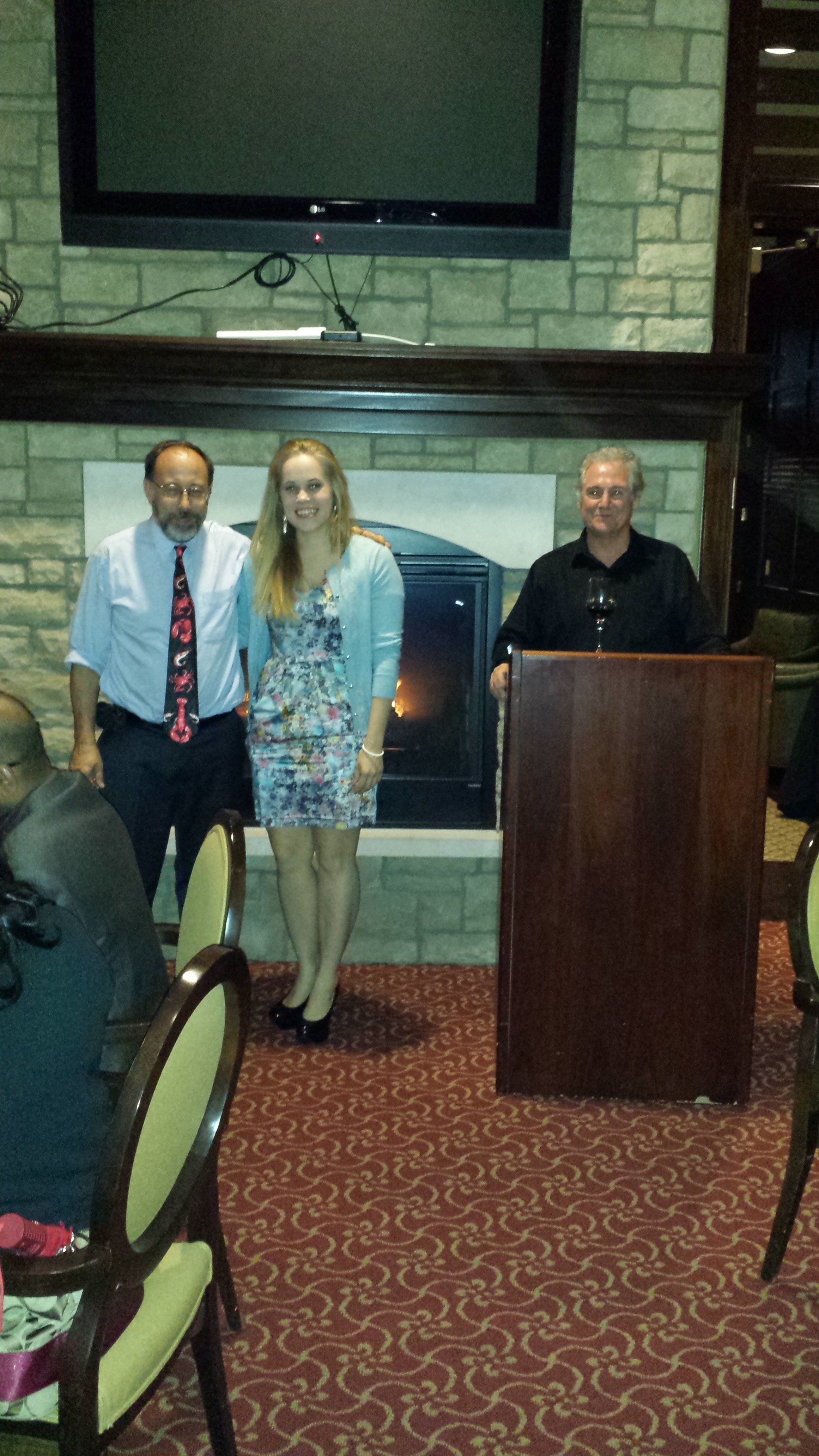
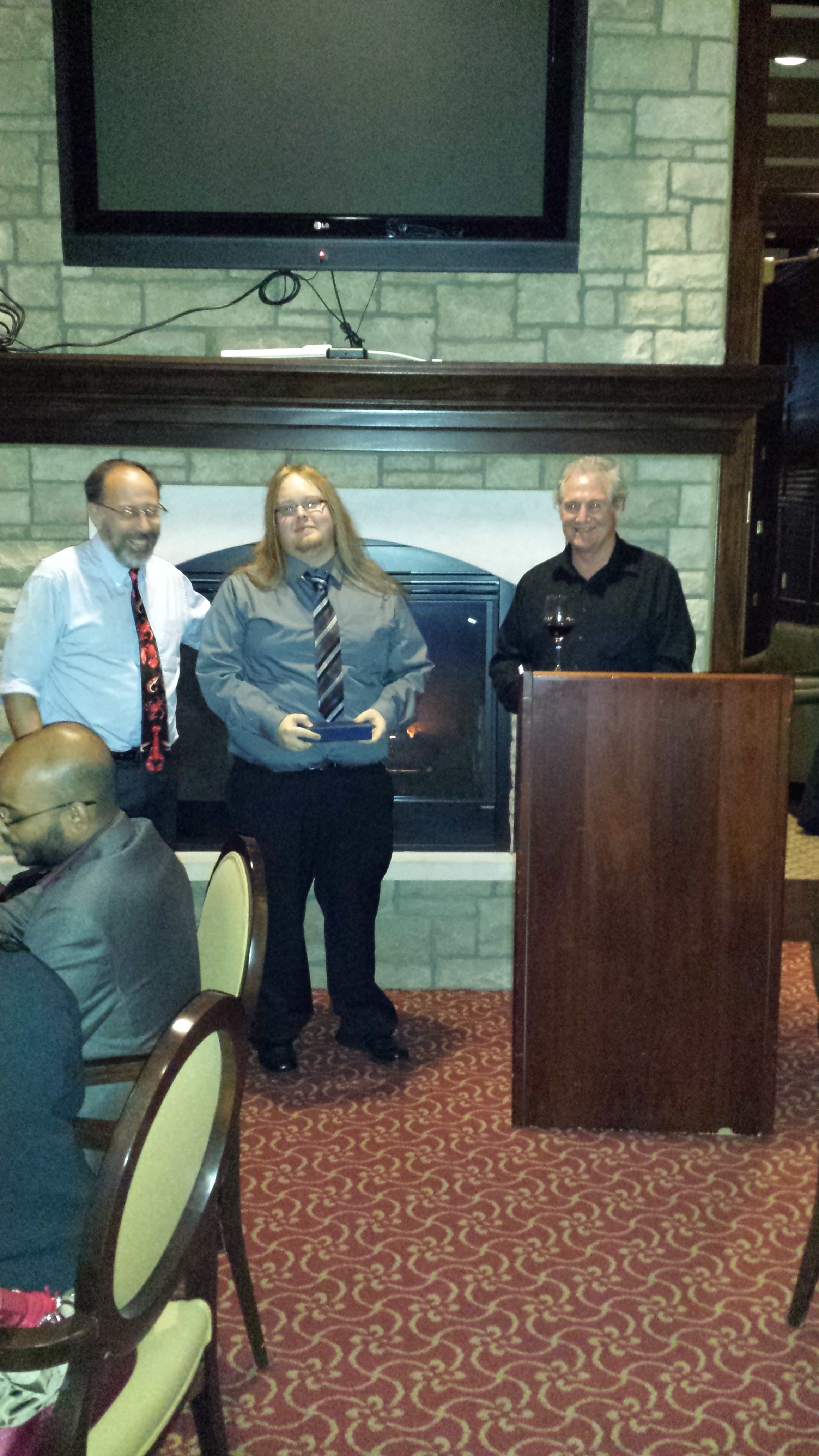
2013 grad student get together at Wang's home:
Kaylee Hall (Fall 2017- Spring 2018)

I conducted research on the GABA-ergic system in Drosophila.
La Shay Byrd (Fall 2017- Spring 2018)

lashay.byrd@uky.edu
Brittany Slabach
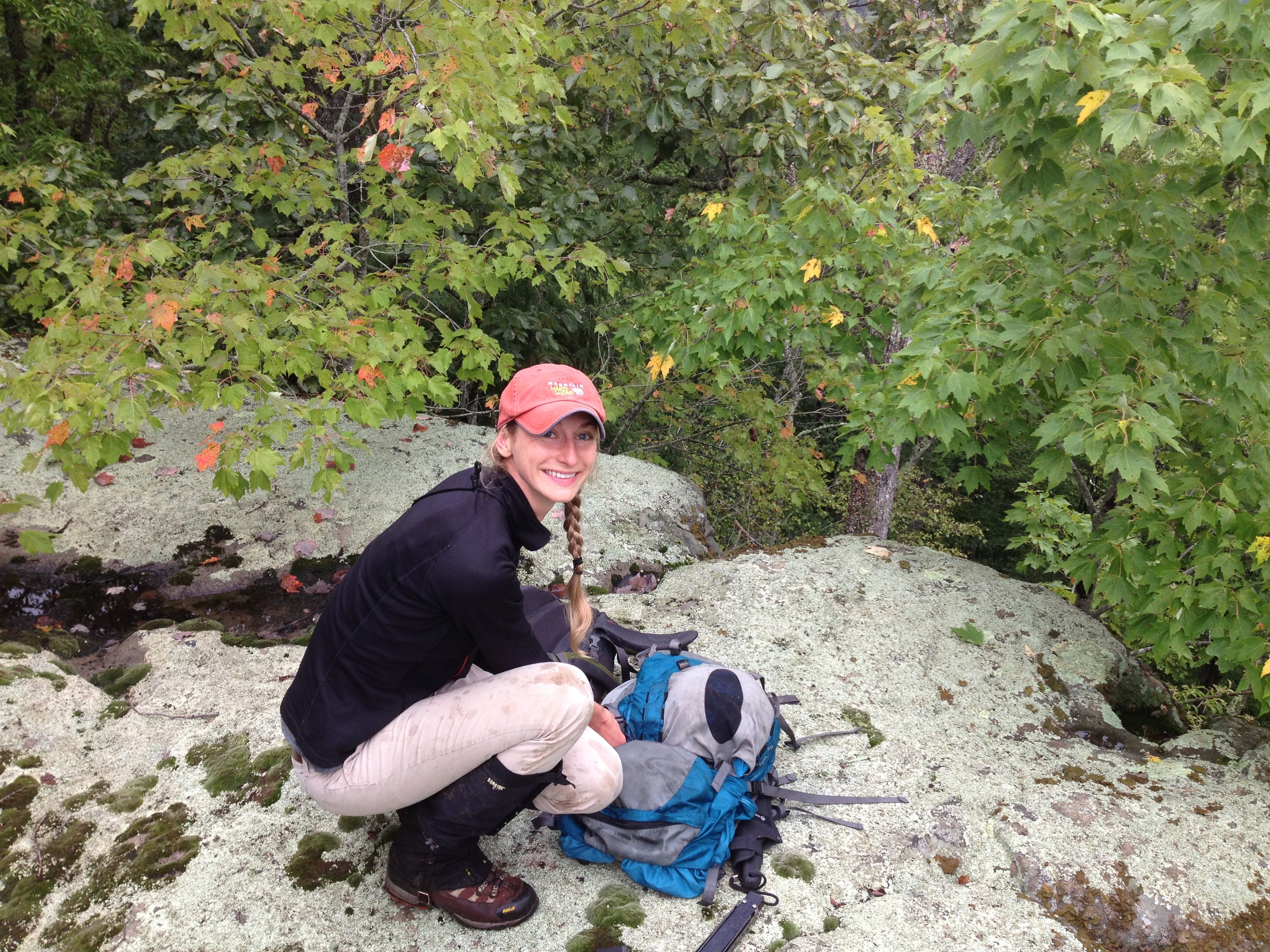
BSL223 at g.uky.edu
Jennifer Marie Costa (Fall 2017- Spring 2018)



These two are really not joined at the head. Jenny will be working on projects which involve effects on synaptic transmission with the potential of enhanced and dampened retrograde feedback of target tissue. She is starting in the summer 2017.
jennifer.m.mccall at gmail.com
MacKenzie Knabel & Ruger (Summer 2017, Fall 2017- Spring 2018))
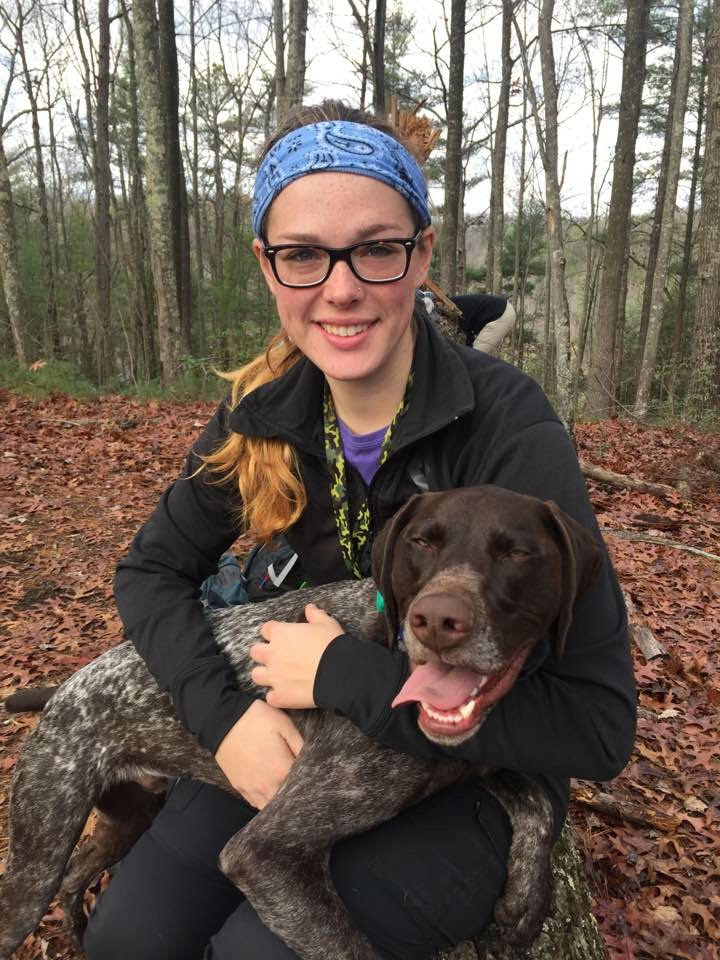
I am helping to construct an on-line Neurophysiology lab manual for Bio446/Bio650.
Victoria (Ali) Spedding (Fall 2017- Spring 2018)
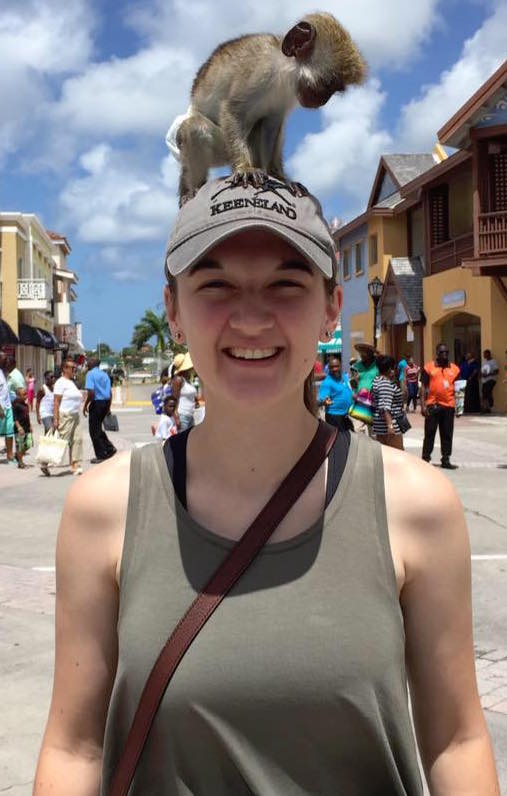
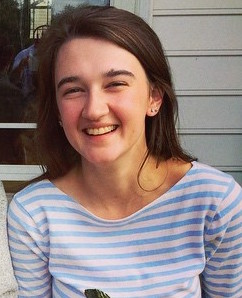
Rachel Potter

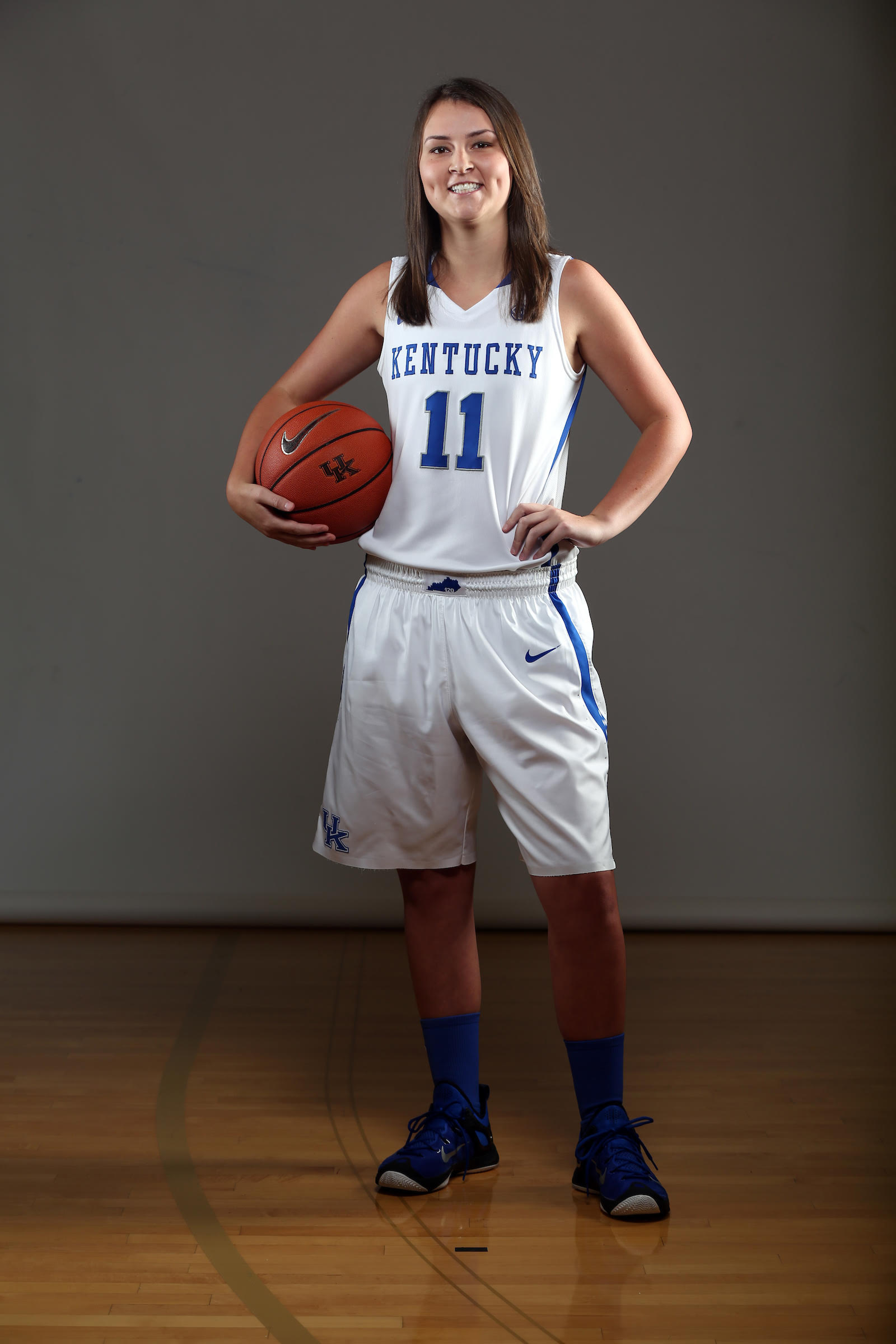
https://www.youtube.com/watch?v=3HFNuHZswxI&feature=youtu.be
I am addressing cellular functions in recruitment of synaptic vessicle pools in phasic and tonic motor nerve terminals.
Matthew Mattingly
mxmatt01 at gmail.com
Kristin Weineck
Exchange student from Germany for the summer of 2017
Dlovan
D. Mahmood
Completed a Masters in Biology
Cole Malloy
I am conducting research on the Drosophila larval heart and CNS as well as muscle biology research. (visit my web page)
See personal web page: http://malloycole.wixsite.com/website
http://uknowledge.uky.edu/biology_etds/47/
Yue Chen Zhu
I am a PhD student and I am now working on a project related to cold stress on muscle and synaptic transmission. Personal web site: http://georgeznice.wixsite.com/yuechenzhu
Nicole Dzubuk Pettersson
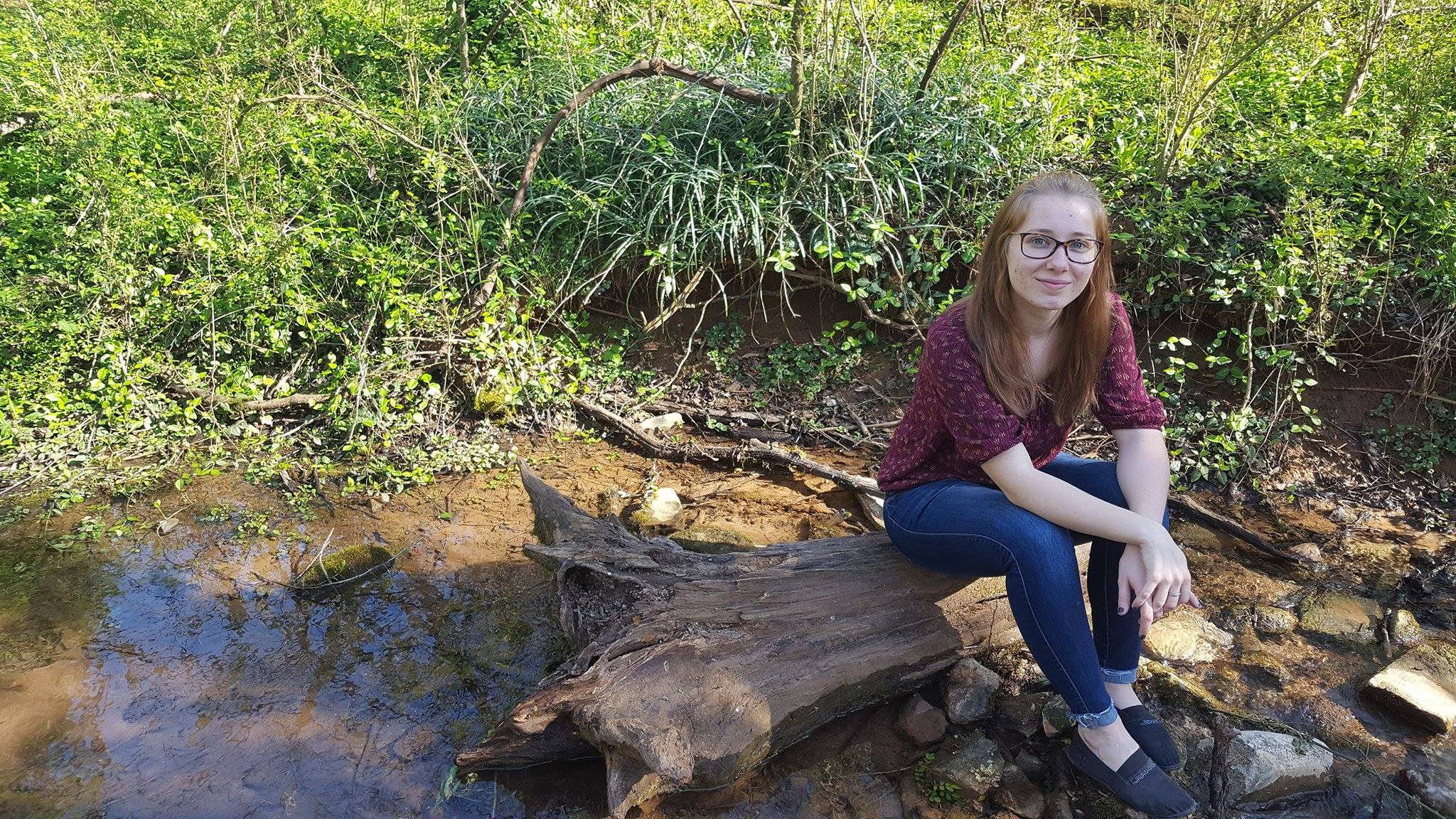
KBRIN Summer 2017. I joined the lab for the summer of 2017 to help out with various research projects.
Meagan Medley
KBRIN Summer 2017. I joined the lab for the summer of 2017 to help out with various research projects.
Jake Higgins, BSN, RN

Jake.Higgins at uky.edu
Tori Hickey
tnhi224 at g.uky.edu
Aya Omar
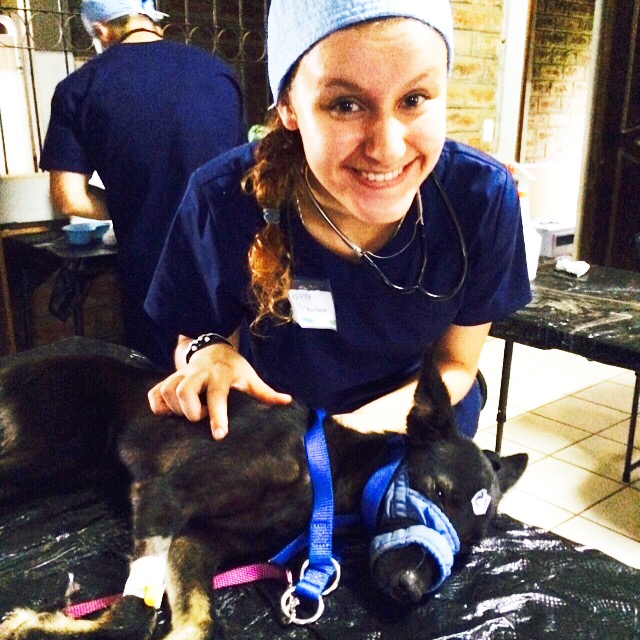
Spring 2016:The goal of this project is to obtain a better characterization of acetycholine (Ach) action and receptor subtypes in the Drosophila melanogaster nervous system. I am a Pre-Vet student.
Jenika Soni

jenikasoni@uky.edu
Jenni Ho

Spring 2016. I am working on how various diets alter the larval life span and how they produce alterations in the development and function of the neuromuscular junctions. I am also interested in how the developmental effects will be manifested in alterations in sensory-motor behaviors.
Samuel
J. Potter
Sam was back in Spring 2017.... He missed the lab so much during his 1st year of UK med School.
sjpo223 at g.uky.edu
Viresh Dayaram

vda223@g.uky.edu
Aya Samadi High School Student for 2016-2017
Andrea Cooper

Andrea.Cooper at uky.edu
Zana R. Majeed
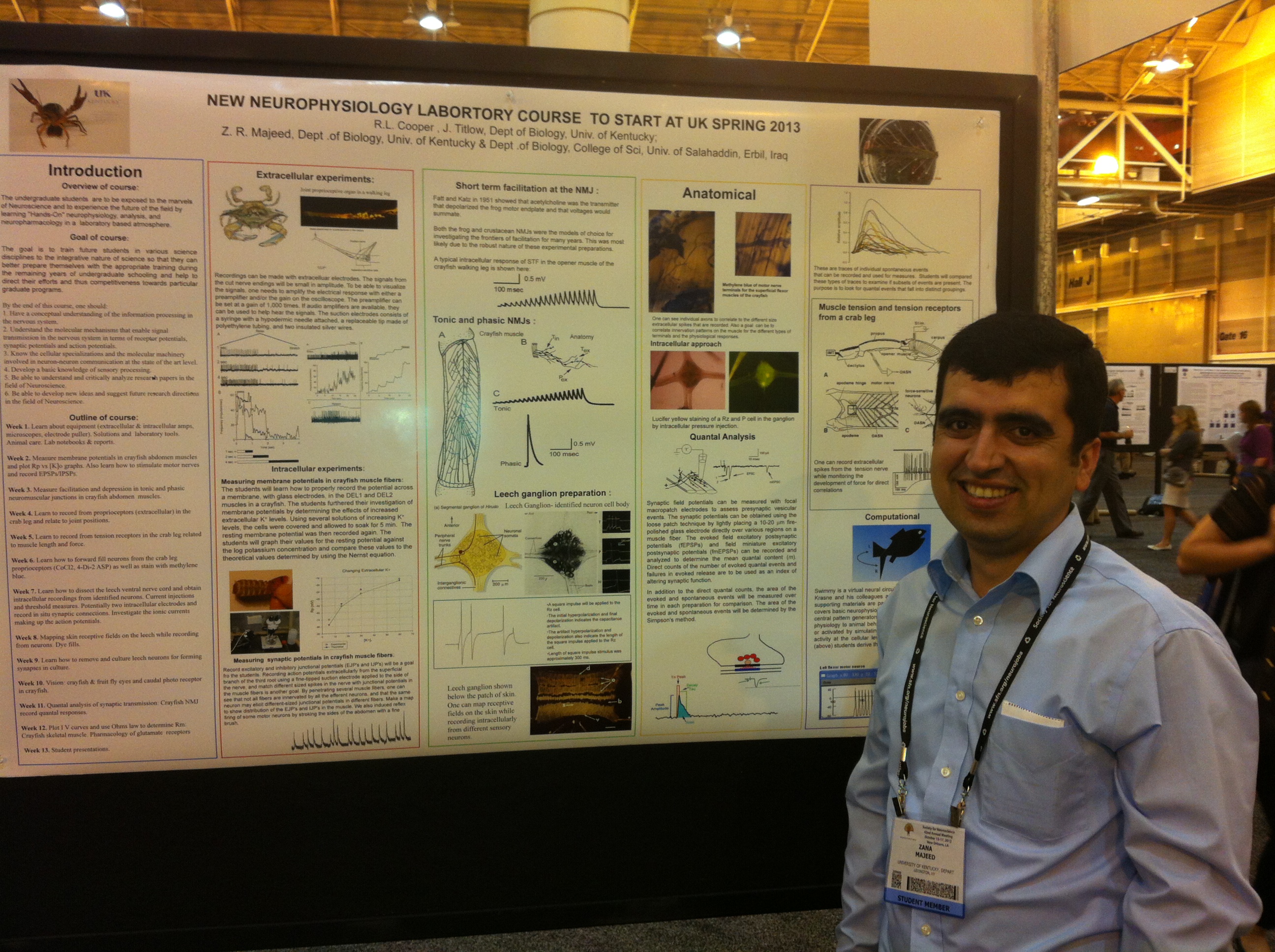
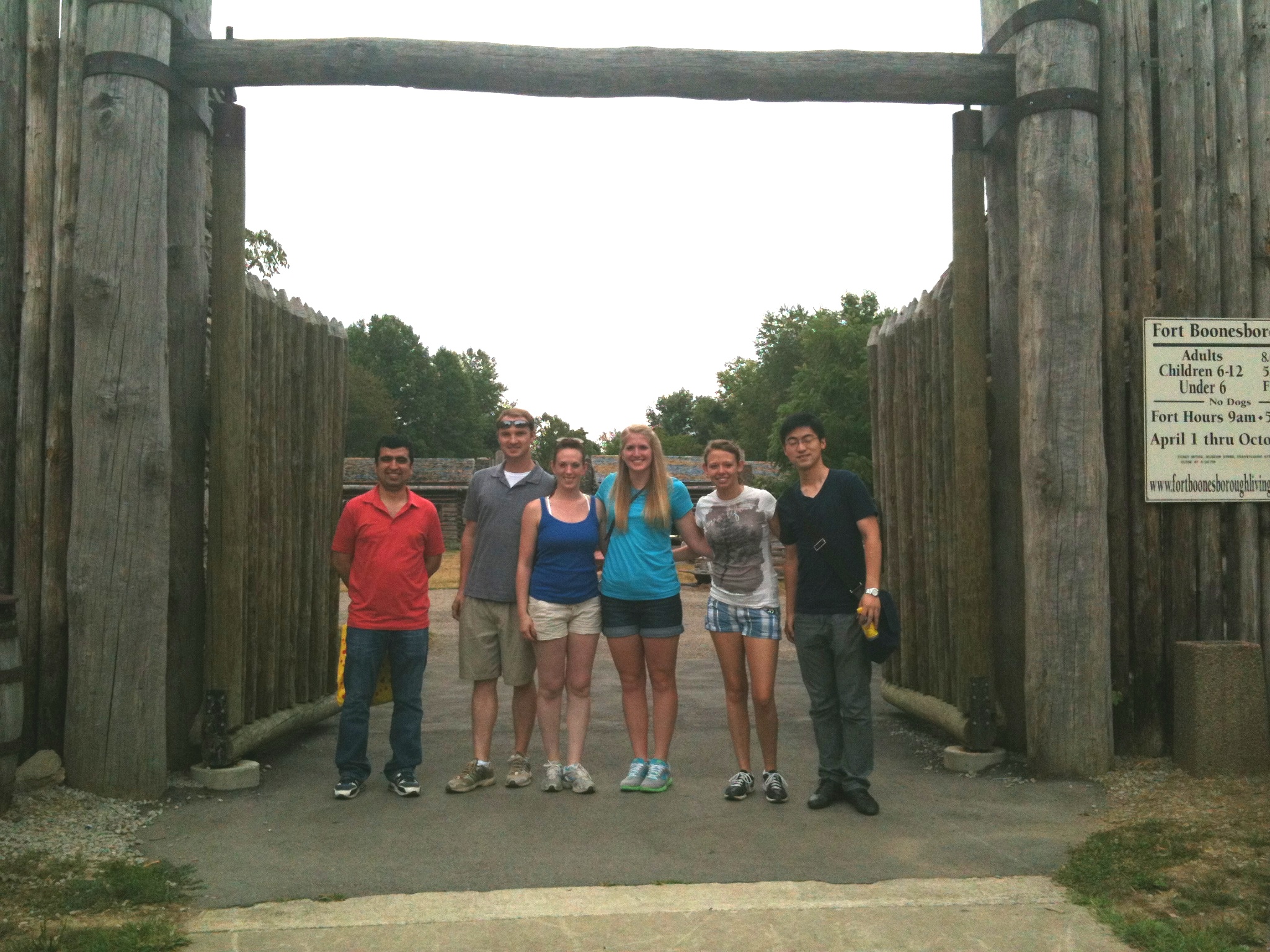
Zana obtaining 1st place award in oral presentation at KAS meeting.
I was studying the function of second messengers in Drosophila neuromuscular junctions & hearts in mutant strains.
Samuel
J. Potter
I hope to develop, along with collaboration of faculty in the College of Education and Biology, modules which will be cross-disciplinary. I plan to develop modules on fecundity curves of Drosophila with various numbers of females and mix in number of males, one male and various numbers of females and vary environmental factors such as temperature and types of food. With the data collected I will develop a means for teachers and students to use mathematical models to explain the collected observations. The mathematical models can be used to predict the impact of environmental disturbances which could influence fecundity (egg laying). Then experiments can be performed to test if the predictions in the mathematical model hold or if adjustments in the model need to be performed. sampotter@me.com
Clara deCastro
I am a high school student at Sayre. My research is on developing a good physiological saline for conducting physiological experiments with Drosophila. This is my 4th year working in the lab.
Brianna Demers
 and her look a like
and her look a like
I am working on the optogenetics projects in the lab with Joshua Morgan and Zana Majeed. I am a Pre-Vet student.
Warlen Pereira Piedade

Graduate rotation student: Differences in evoked and spontaneous release. warlen.pereira@gmail.com
Angie Mikos KBRIN student

amikos@georgetowncollege.edu
Jacob Sifers
He started in summer 2015 (KBRIN Student). He is back part time for summer 2016.
Jacob Van Doorn
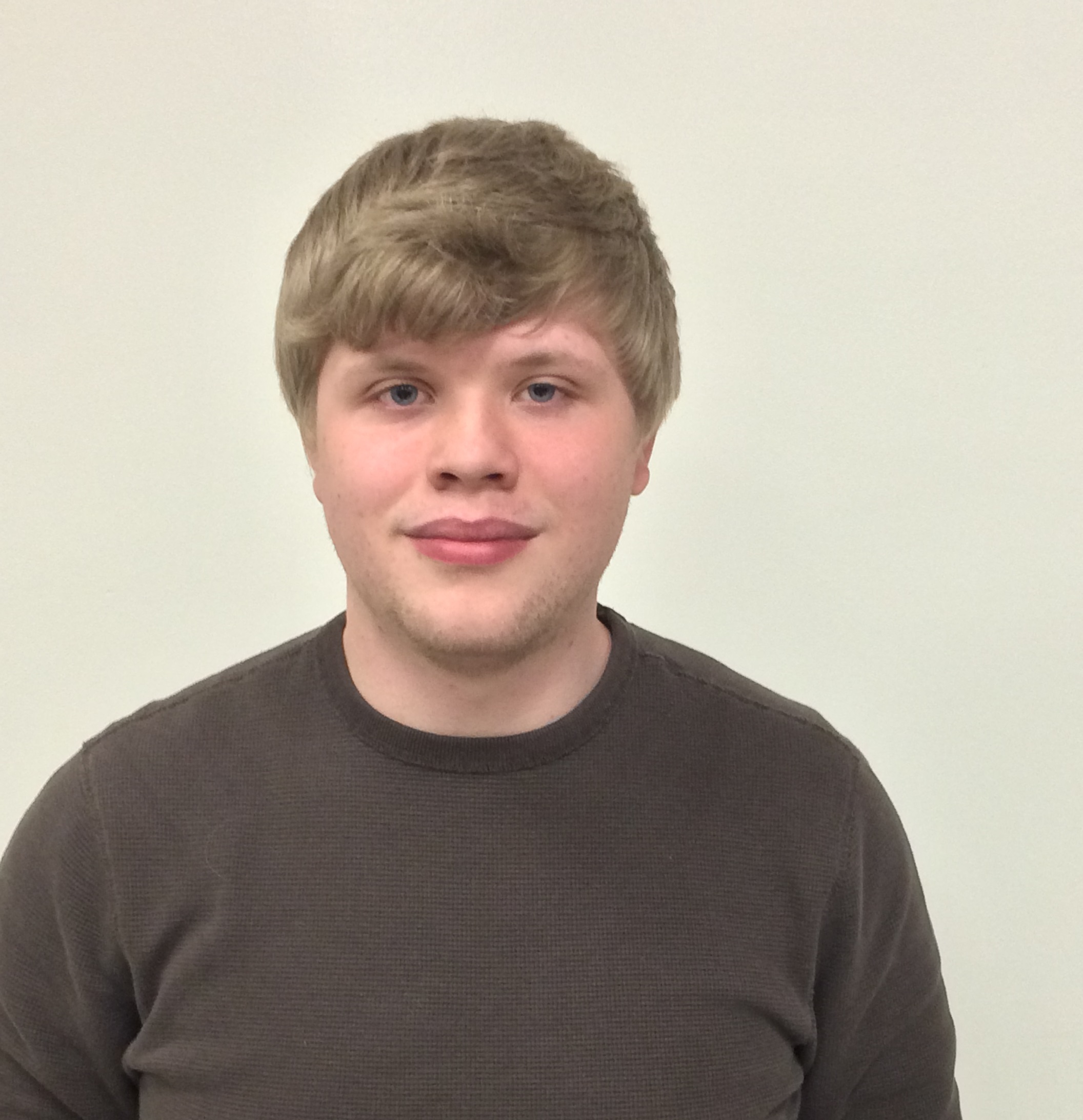
I am researching on the topic of plasticity in synaptic transmission. I am using Drosophila as a model organism with optogenetic approaches.
Henry Uradu
I am working on a project related to cold stress on Drosophila and the function of the heart as well as synaptic transmission. ( hsur222@g.uky.edu )
Ashwatha Thenappan

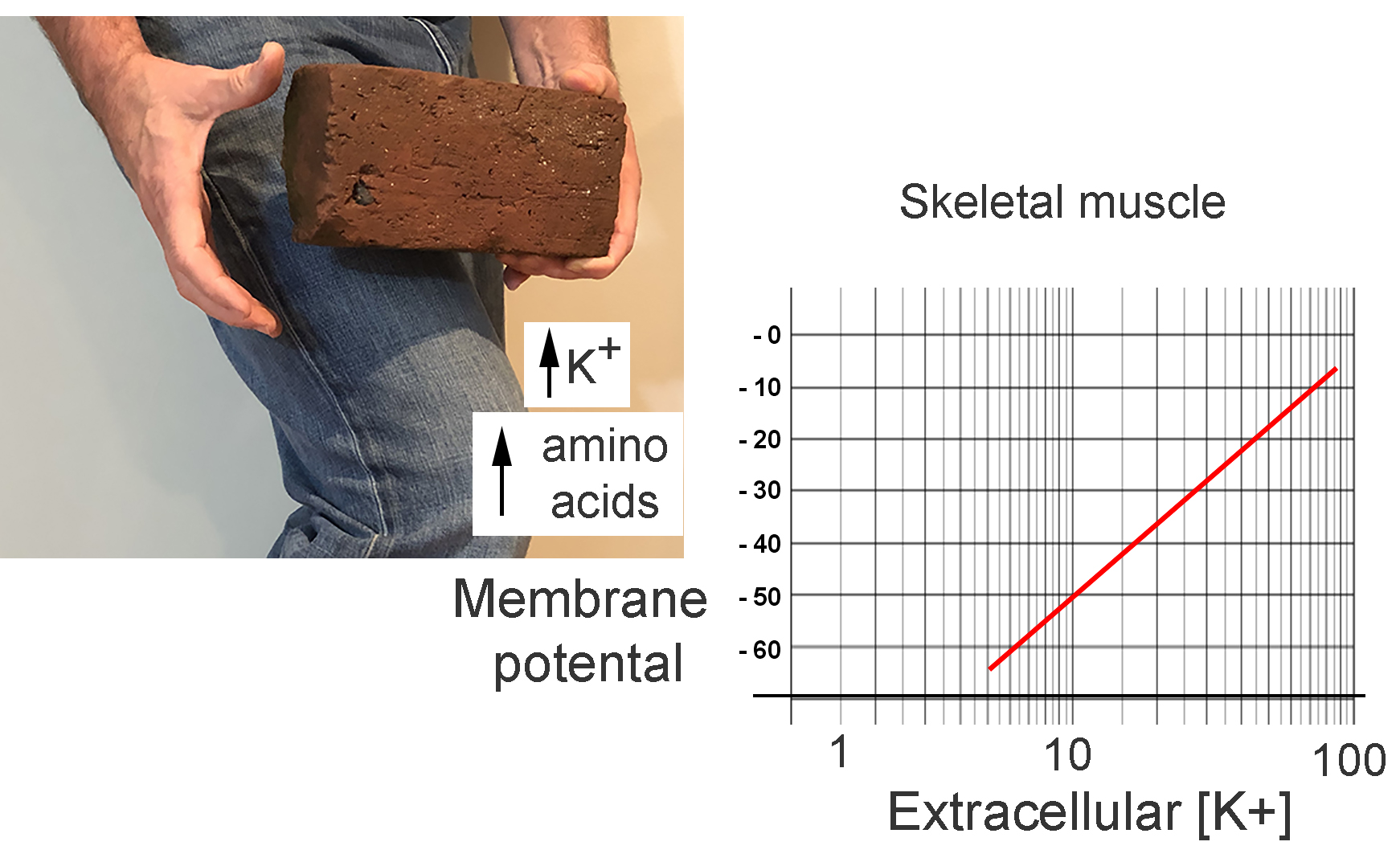
I am investigating the role of K+ spillage from injured muscle fibers having an effect on healthy surrounding tissue.
Jessica Nelson

Fall 2015 & Spring 2016: Working on my High School Science project with Natalie.
Natalie Fields
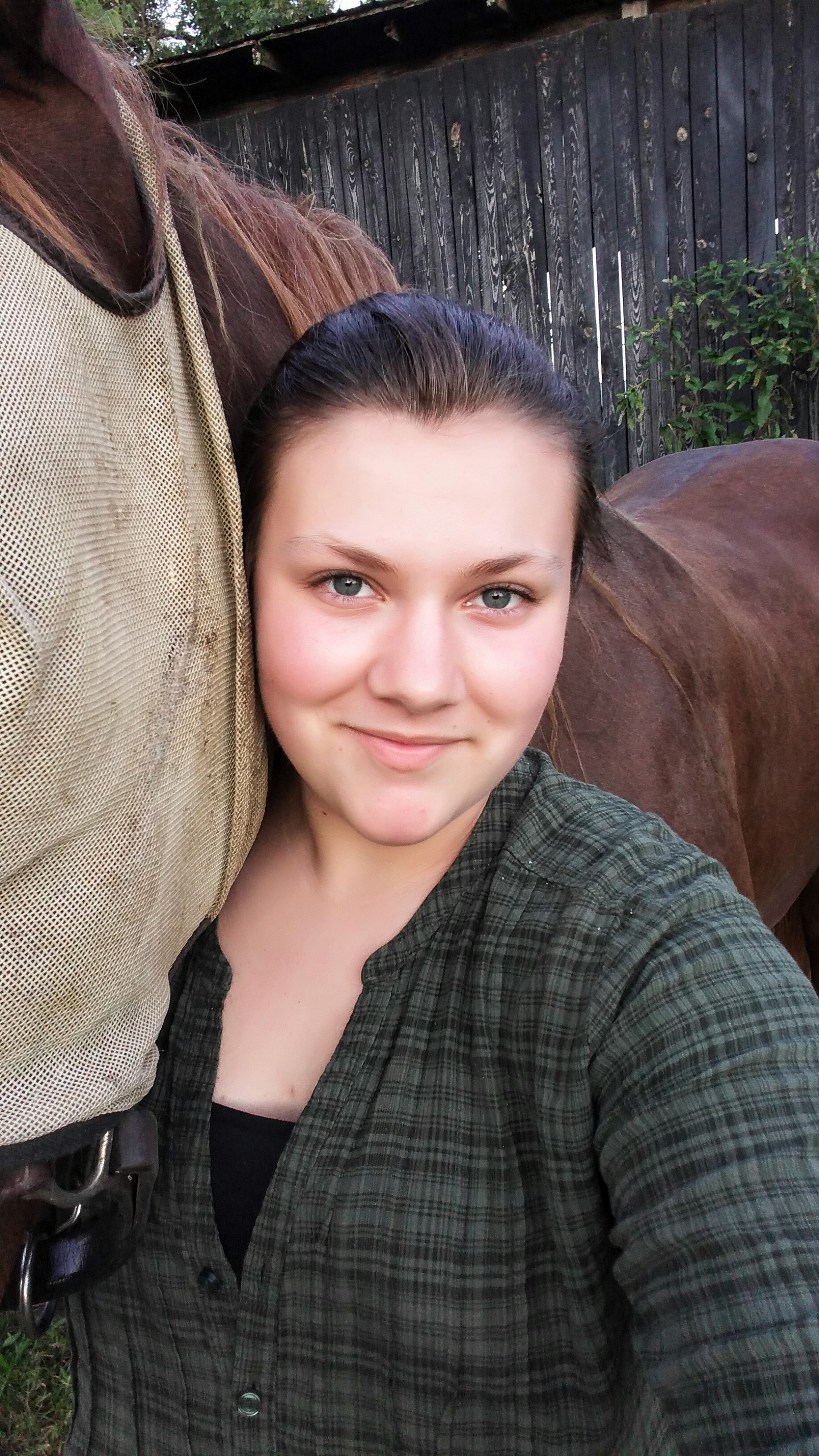
Fall 2015 & Spring 2016: Working on my High School Science project with Jessica.
Shannon Gosser

I am a BS public health major at the University of KY.
I am engaged in a research
project which brings together university faculty, graduate students, undergraduate
students, middle and high school students as well as the science teachers
in the middle and high schools in scientific dialogue.
We started this interactive project for middle school and high school
students in the state of Kentucky (USA) to interact with undergraduate
and graduate students at the University of Kentucky as a science outreaching activity
which has now grown across colleges at University of KY and internationally
with college students participating.
https://sites.google.com/site/sciencetalkworldwide/home
Keith Allen

I am a BS public health major at the University of KY.
I am engaged in a research
project which brings together university faculty, graduate students, undergraduate
students, middle and high school students as well as the science teachers
in the middle and high schools in scientific dialogue.
We started this interactive project for middle school and high school
students in the state of Kentucky (USA) to interact with undergraduate
and graduate students at the University of Kentucky as a science outreaching activity
which has now grown across colleges at University of KY and internationally
with college students participating.
https://sites.google.com/site/sciencetalkworldwide/home
Warlen Pereira Piedade

Graduate rotation student: Differences in evoked and spontaneous release. warlen.pereira@gmail.com
Angela Pallotti

I am engaged
in a research project which brings together university faculty, graduate
students, undergraduate students, middle and high school students as well
as the science teachers in the middle and high schools in scientific dialogue.
We started this interactive project for middle school and high school
students in the state of Kentucky (USA) to interact with undergraduate
and graduate students at the University of Kentucky as a science outreaching activity
which has now grown across colleges at University of KY and internationally
with college students participating.
https://sites.google.com/site/sciencetalkworldwide/home
Mike Fritz
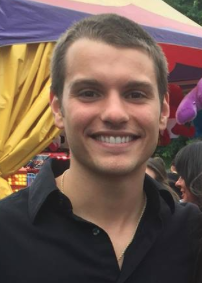
I am engaged
in a research project which brings together university faculty, graduate
students, undergraduate students, middle and high school students as well
as the science teachers in the middle and high schools in scientific dialogue.
We started this interactive project for middle school and high school
students in the state of Kentucky (USA) to interact with undergraduate
and graduate students at the University of Kentucky as a science outreaching activity
which has now grown across colleges at University of KY and internationally
with college students participating.
https://sites.google.com/site/sciencetalkworldwide/home
Zachary Perrotti

I am engaged
in a research project which brings together university faculty, graduate
students, undergraduate students, middle and high school students as well
as the science teachers in the middle and high schools in scientific dialogue.
We started this interactive project for middle school and high school
students in the state of Kentucky (USA) to interact with undergraduate
and graduate students at the University of Kentucky as a science outreaching activity
which has now grown across colleges at University of KY and internationally
with college students participating.
https://sites.google.com/site/sciencetalkworldwide/home
Amanda Spence
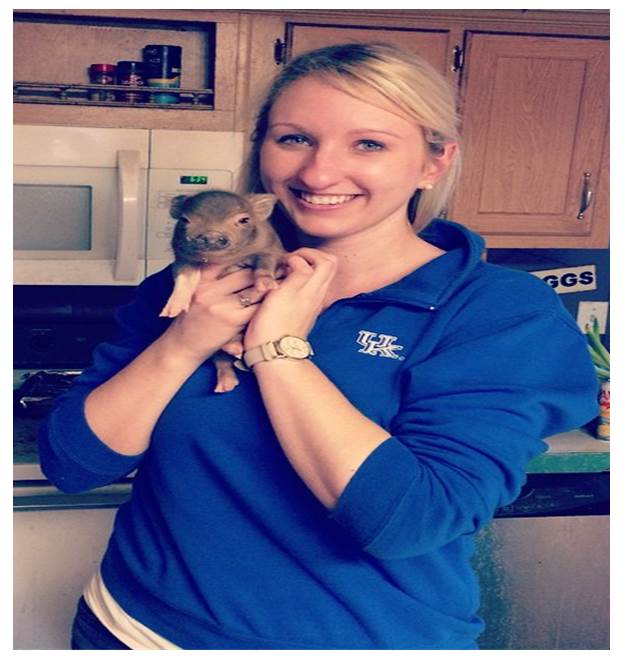
I am a senior
at UK, and I’ll be graduating with a degree in biology. I currently
work with pre-school aged kids around Lexington, but I’m working
toward being able to teach science classes in middle schools or high schools.
I am also engaged in a research project which brings together university
faculty, graduate students, undergraduate students, middle and high school
students as well as the science teachers in the middle and high schools
in scientific dialogue.
We started this interactive project for middle school and high school
students in the state of Kentucky (USA) to interact with undergraduate
and graduate students at the University of Kentucky as a science outreaching activity
which has now grown across colleges at University of KY and internationally
with college students participating.
https://sites.google.com/site/sciencetalkworldwide/home
Maddie Sanden

One of my main goals is to help develop educational materials which can be used by middle and high school science teachers as well as college teachers to bridge science teaching of math and biology in relation to real world problems in the area of stereology (3D objects viewed in 2D). The 2nd goal is to help with experimentation of synaptic transmission and set up data for analysis for the Citizen Science project on going in the lab. We are adressing the mechanisms influencing packaging of synaptic vesicles within glutamatergic motor nerve terminals and how this is related to internal pH (pHi). Additionally, the mechanistic action of low or high pHi on vesicular fusion and sensitivity to Ca2+ influx will be addressed. maddie.sanden@gmail.com
Emily Greene
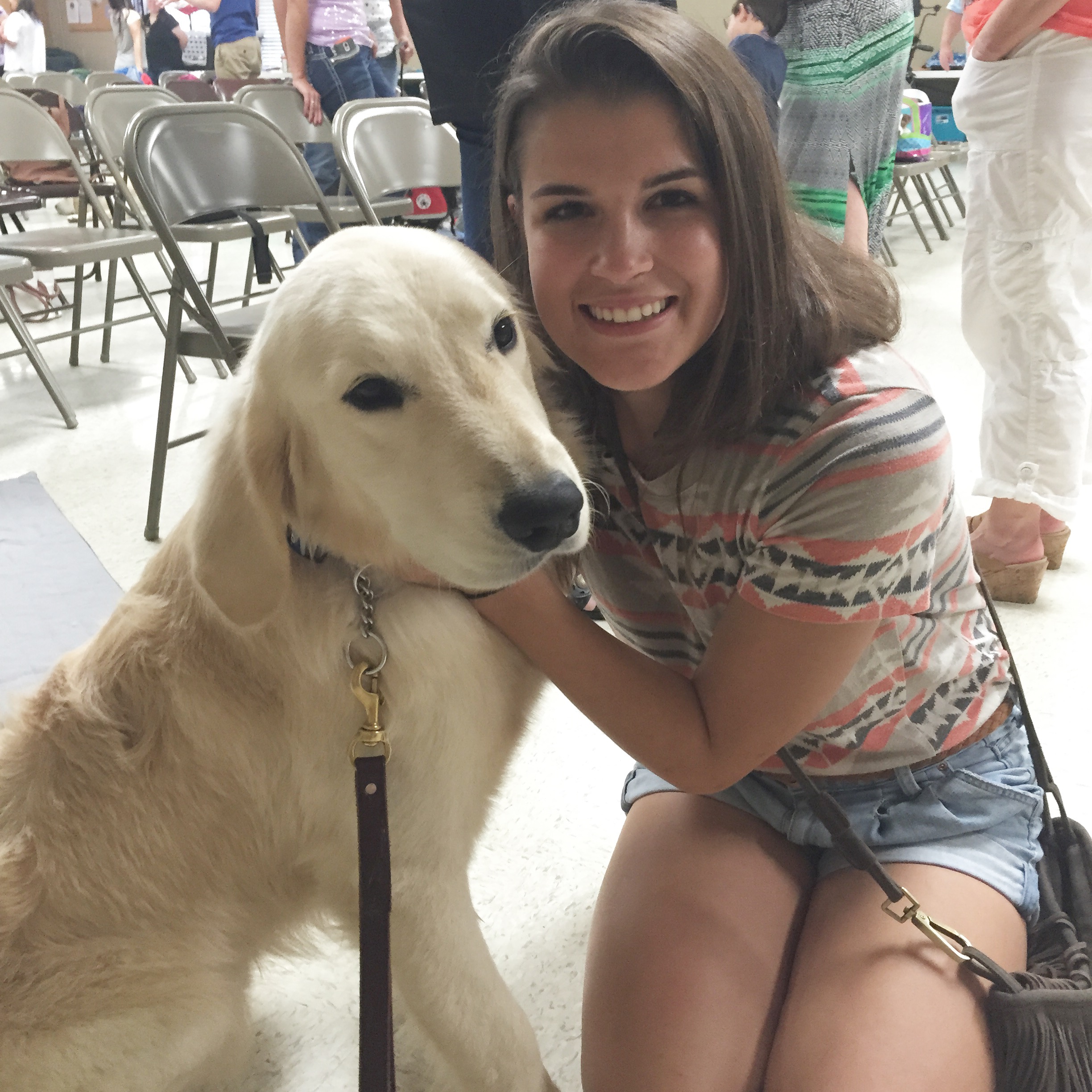 and her look a like
and her look a like
Fall 2015: I have been working on the optogenetics projects in the lab with Joshua Morgan and Zana Majeed.
Joshua Morgan

I am an electrical engineering major at UK. This project involves measuring serotonin by microelectrode recording technology second—by-second in an alive intact Drosophila larvae. This research is a collaboration with Dr. Greg Gerhardt’s group at UK Dept. of Anatomy and Neurobiology. joshuamorganusa@gmail.com
Suraj Rama
Summer and Fall 2015. I am working on how various diets alter the larval life span and how they produce alterations in the development and function of the neuromuscular junctions. I am also interested in how the developmental effects will be manifested in alterations in sensory-motor behaviors.
Angel Ho

Summer and Fall 2015, Spring 2016
I am working on how various diets alter the larval life span and how they produce alterations in the development and function of the neuromuscular junctions. I am also interested in how the developmental effects will be manifested in alterations in sensory-motor behaviors.
Felicitas Koch
Summer 2015 exchange student from Germany.
Connor English

(note: Conner started his rock collection after visiting Machu Picchu). The goal of this project is to obtain a better characterization of acetycholine (Ach) action and receptor subtypes in the Drosophila melanogaster nervous system. clenglish93@gmail.com
Jacob Sifers
Summer 2015 (KBRIN Student)
Emily Yocom
Summer 2015 (KBRIN Student)
Gaaya Veeraghavan

Summer 2015
Left to right (Robin Cooper, Jennifer Wilson, Lydia Tiller, Logan Bartley & Jennifer Kirchner)
These in service and pre service teachers have joined the lab for a time in the summer of 2015. They are here to see different aspects of research taking place and to learn some new techniques they will bring back to their classrooms for their students.
Hannah L. Harris

I am researching on the effects of diet on development of the neuromuscular junction and behavior in Drosophila. The type of experiments I will conduct are stimulating the larvae with sensory stimuli such as touches on the side of the animal and see how they respond. Olfactory assays, body wall movements and mouth hook movements will also be assayed for activity of the animals in the various diets. hannah_lynn_93@yahoo.com
Michael
Schultz
My goals are to develop educational modules that will be used in KY teacher workshops in summer 2014 and present findings at NSTA regional and national meetings to improve learning and understanding for teachers and students in issues in stereology and biological function of skeletal muscle. This will be accomplished by teachers training students to develop potential models that explain anatomical measures. The science that will be used is geometry and algebra, measures of force, building potential models to explain various disease states and the comparative anatomy with various types of skeletal muscle in various animals. I will also work with faculty members in the Department of Education at UK and in the Center of Muscle Biology in collaboration on this project.
Danielle Middleton
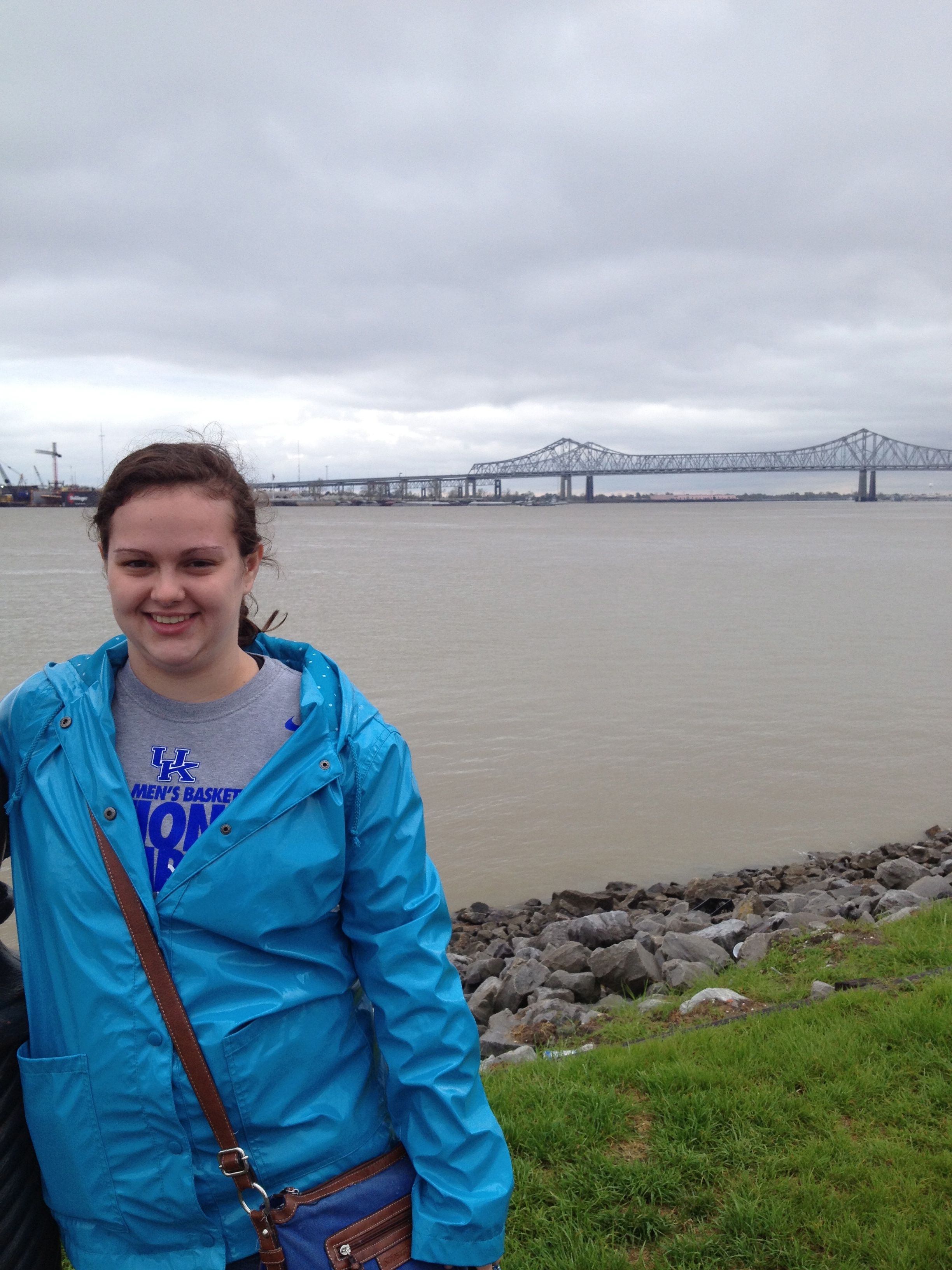
My project is to have the high school students act like scientists as they explore health problems and present findings from their classroom projects at the annual Healthy Flea. (The Healthy Flea will be a Health Fair set up at local flea markets. This will allow students to take their research findings and information directly to the locals, instead of trying to entice the locals to attend a Health Fair.) The students, teachers, and project staff and scientists will share their knowledge and leadership to enhance and support health in communities by presenting annually at a Healthy Flea showcase held in partnership with local health departments and/or health entities. The local health depts. and nursing students in nursing programs can use these events for screening the public for various health related issues and help the high school students and their teachers answer questions from the public. I will also be working with Ms. Feld (UK nursing school) and her public health class. I hope to coordinate the county health dept activities with the school teachers and their projects as well as the nursing school students for the activity of the healthy flea presentations. Scientifically I will be working with the high school students and their teachers to insure the science and resources used are legitimate and have a sound footing before public presentation. This will involve learning about various topics and reviewing the student’s research and presentations. Some of these activities I hope to cover via Skype along with Dr. Cooper and faculty within the College of Ed at UK. daniellemiddleton222@gmail.com
Dr. and Colonel Woo Young Chung
2014-2015 Research Scholar from South Korea. Funded by the Korean Military Academy. I am working on modulation of synaptic transmission at neuromuscular junctions of Drosophila and crayfish.
Nadera Dabbain
I was working on the effects of neuromodulators on the development of the Drosophila brain
Elizabeth Schwarcz
I am a high school student conducting research on the various behaviors in Drosophila throughout development. This is my 2nd year in the lab.
Douglas Potts
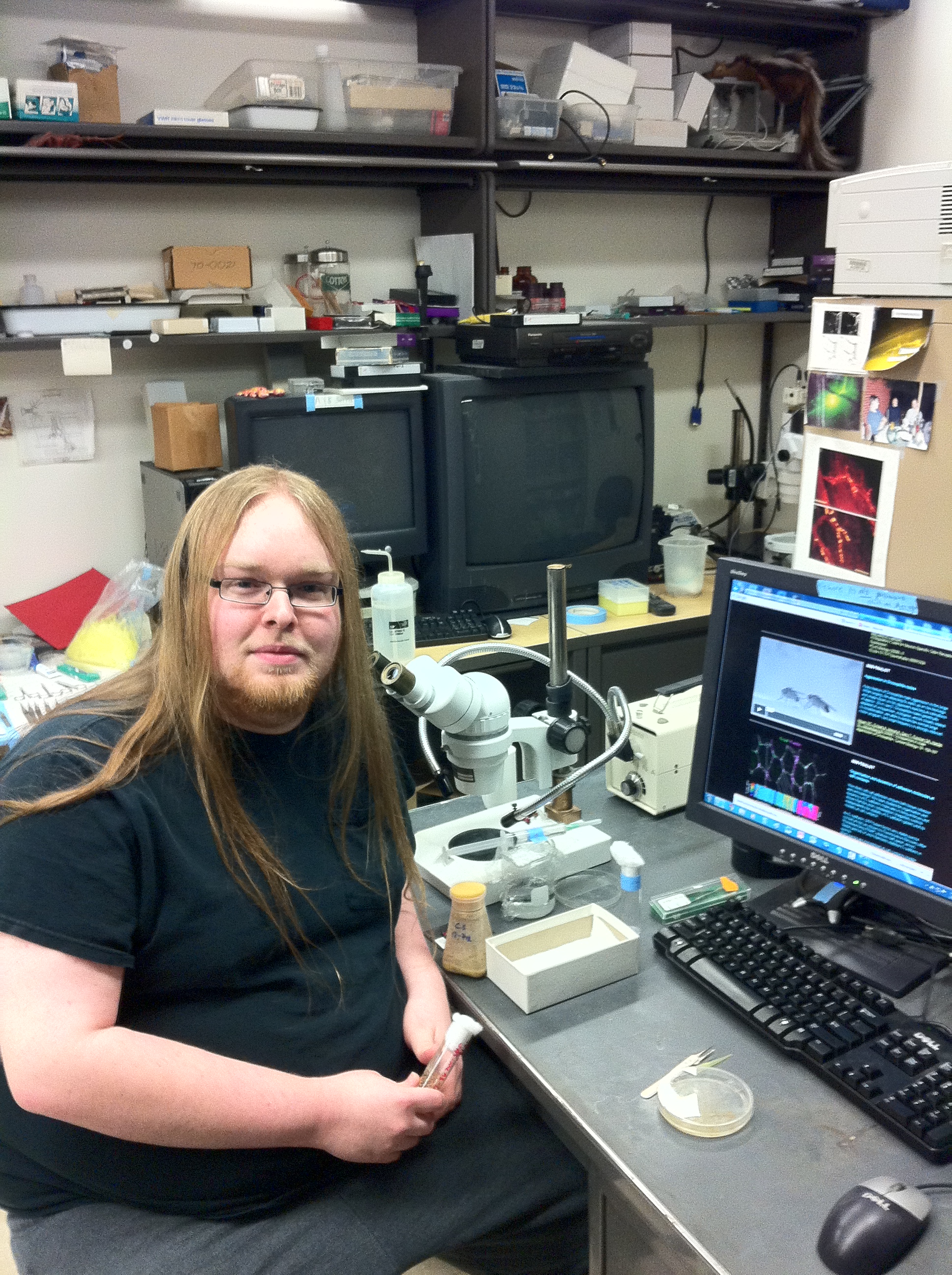
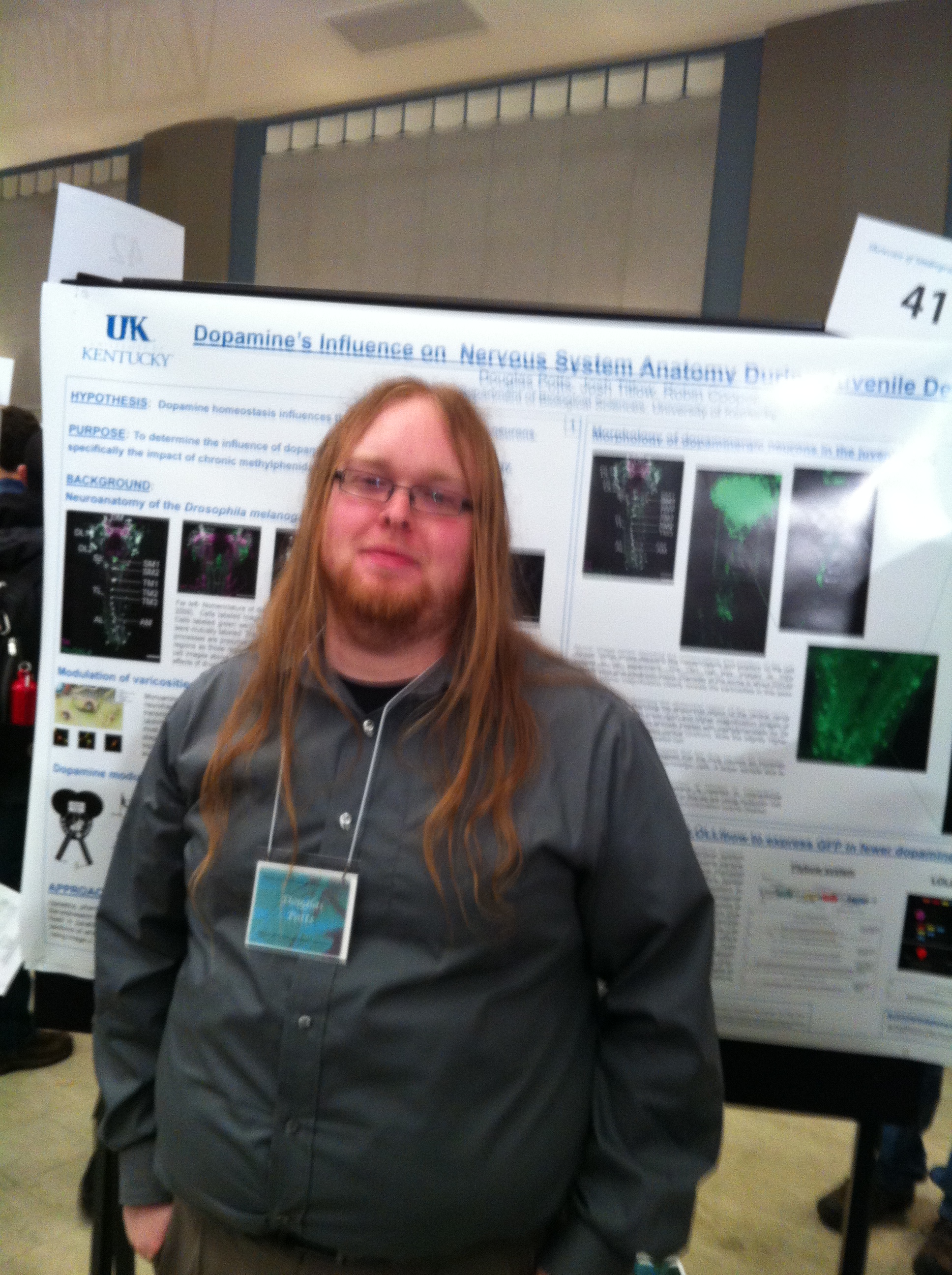
I was working with Josh Tiltow when I was an undergraduate researcher in the lab. Now, as a PhD graduate student I am continuing some of the research on the effects of dopamine in development, behavior and neural function in the fruit fly (Drosophila) model. I am also working on High School and college level teaching modules for integration on mathematics and biology.
Josh Titlow
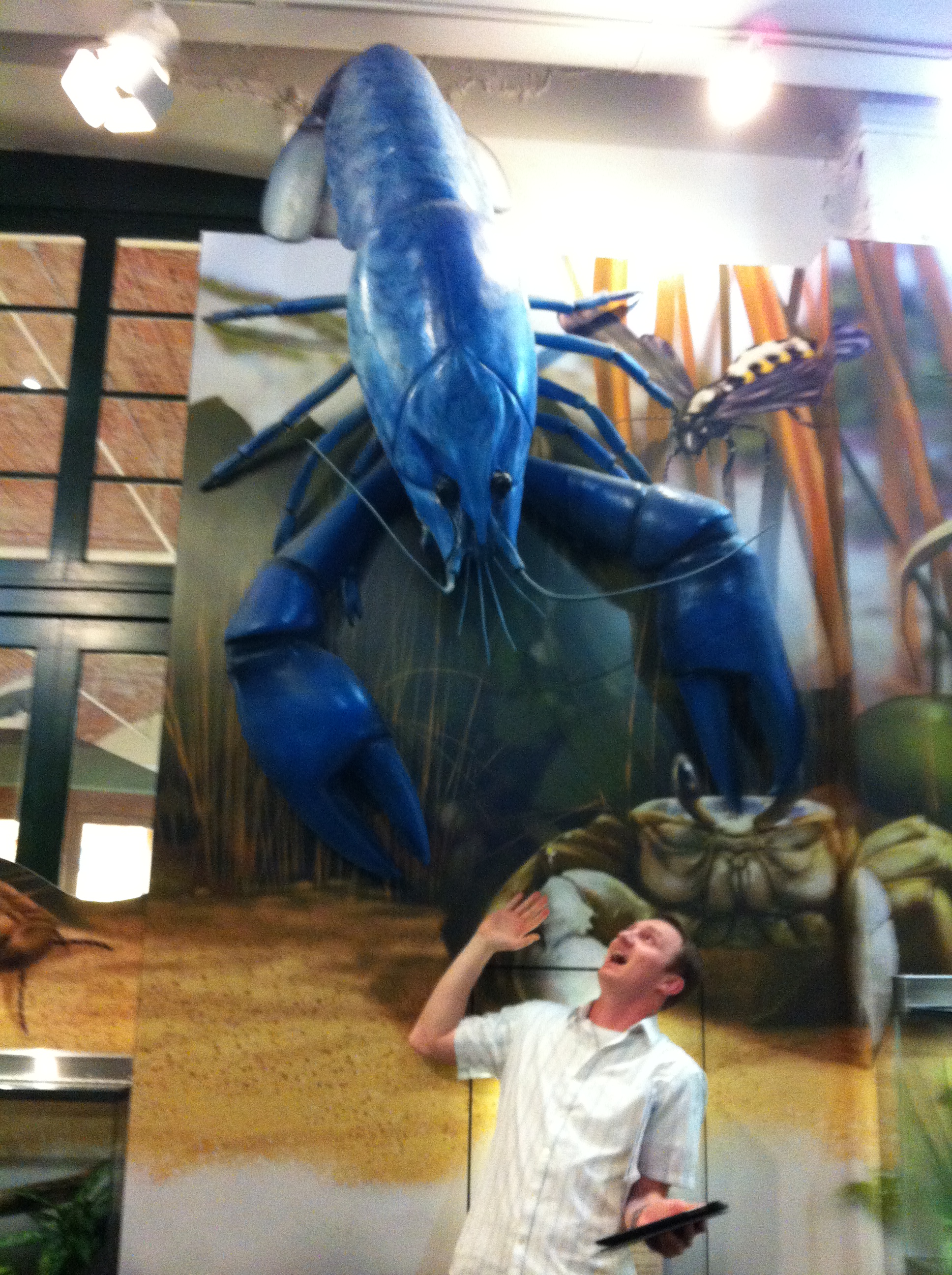
Visit my home page
I worked on a colaborative project with Drs. Rymond and Cooper related to physiology of synaptic transmission in Drosophila. Josh joined the research group of Dr. Davis at the University of Oxford (England) in the summer of 2014 for starting his postdoctoral training.
Kyle Ritter
I was an undergraduate summer research student funded by a KY-KBRIN grant. I learned about various research topics and skills. (kyle.ritter@centre.edu)
Jonathan Robinson
I was an
undergraduate summer research student funded by a KY-KBRIN grant. I learned
about various research topics and skills. (jtrobinson@moreheadstate.edu)
Sandra Blümich
I was an exchange
student from Germany and funded by the German government. I joined the
lab to learn various research skills and exchange ideas on various projects.
Audra Stacy
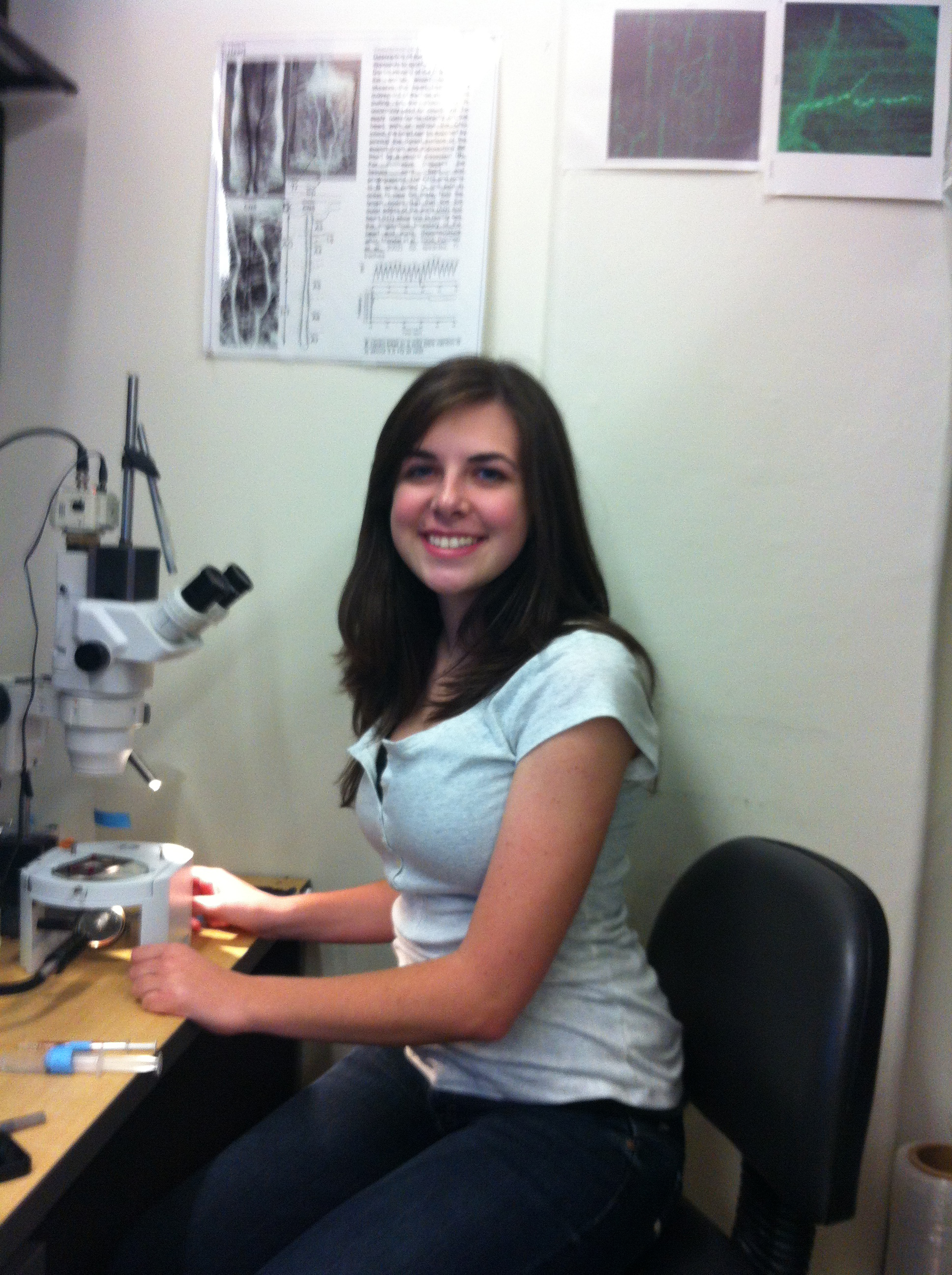
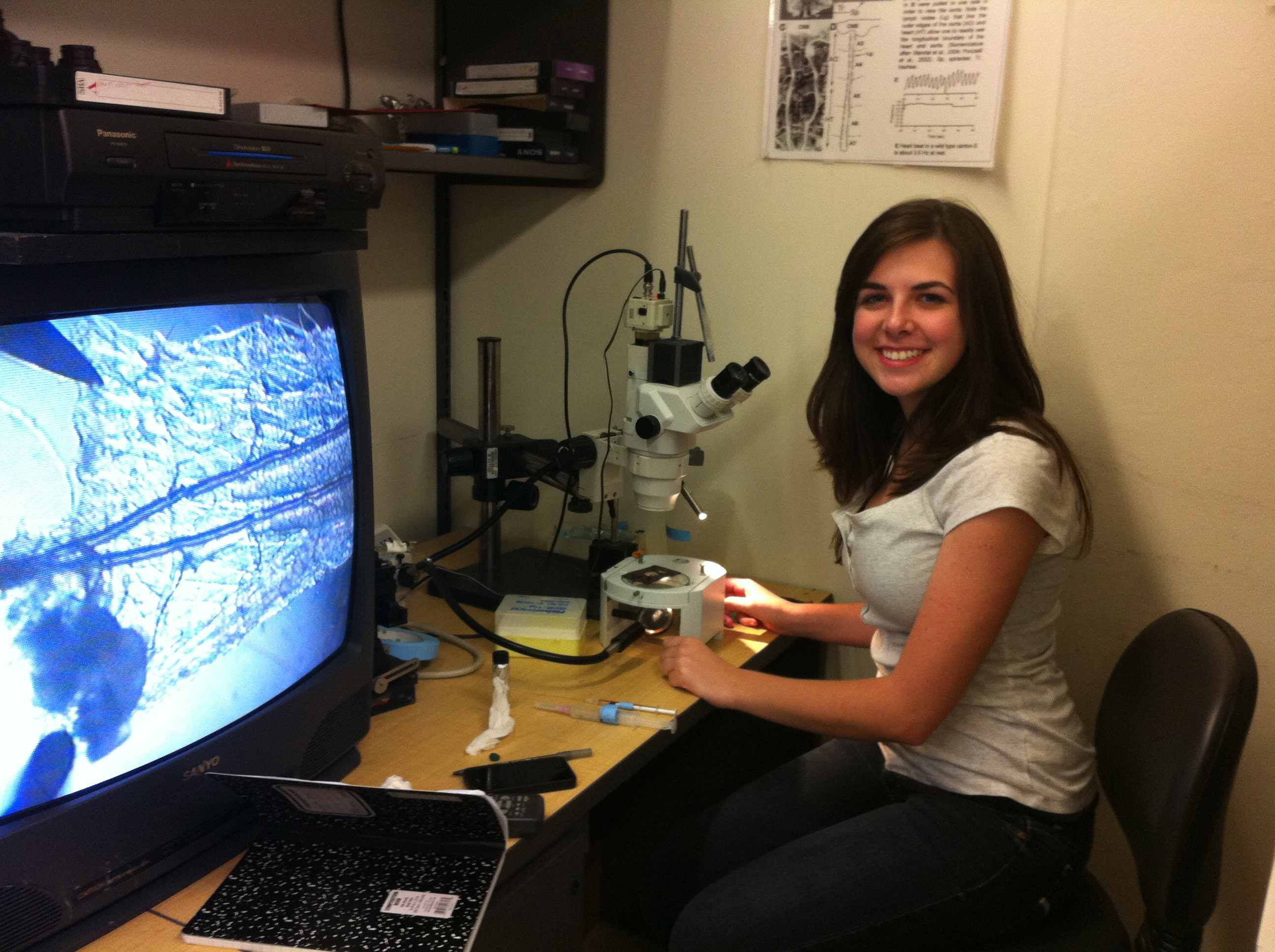
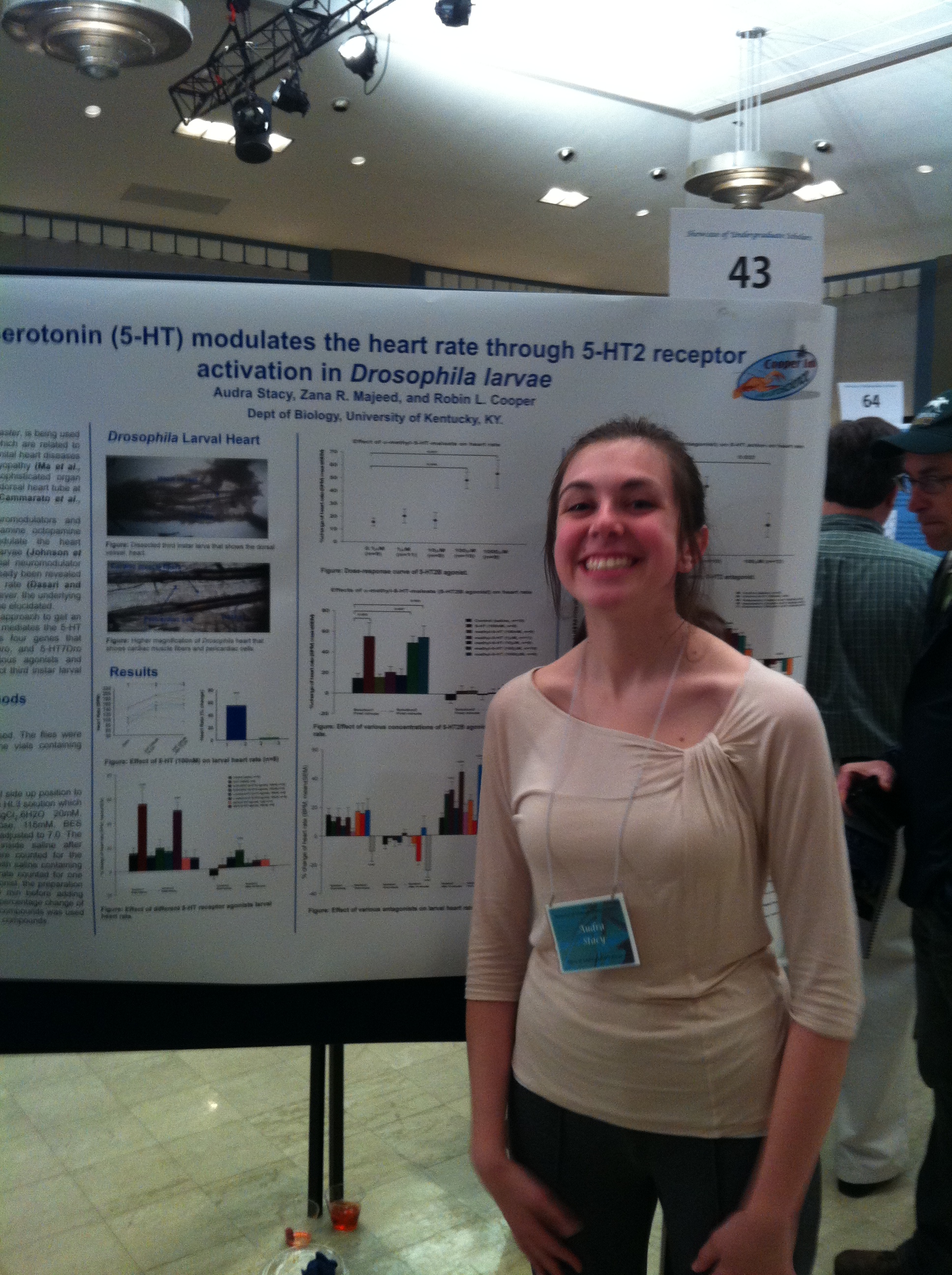
I was working on the pharmacological identification of receptor subtypes on the larval heart in Drosophila.
Ribble Fellow 2012-2013. Prestigious American Physiological Society (APS) Undergraduate Summer Research Fellowship for 2013.... read more in UK PR news (PDF)
http://uknow.uky.edu/content/biology-undergrads-receive-prestigious-fellowships-summer-research
Aubrey Bankemper
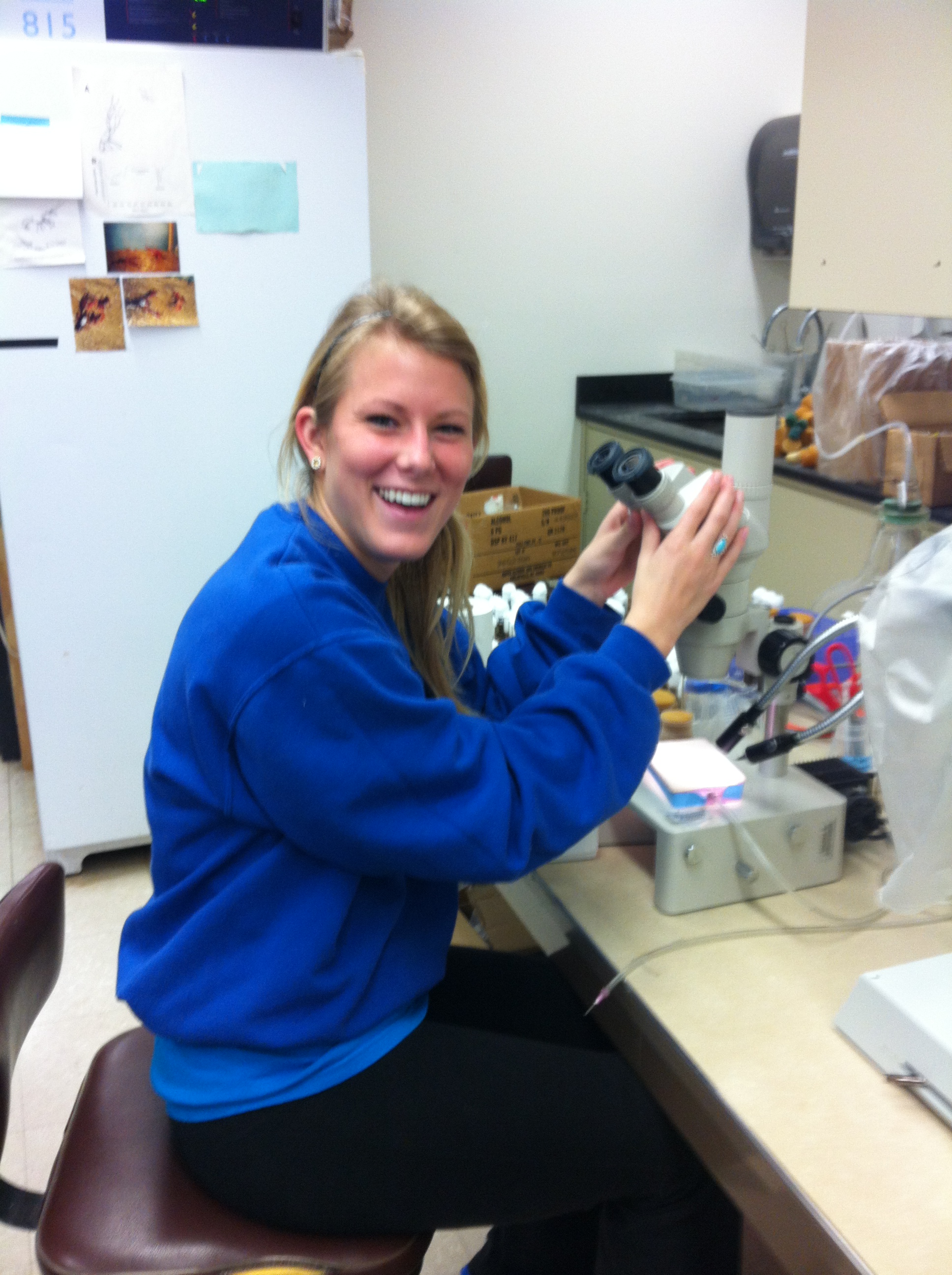
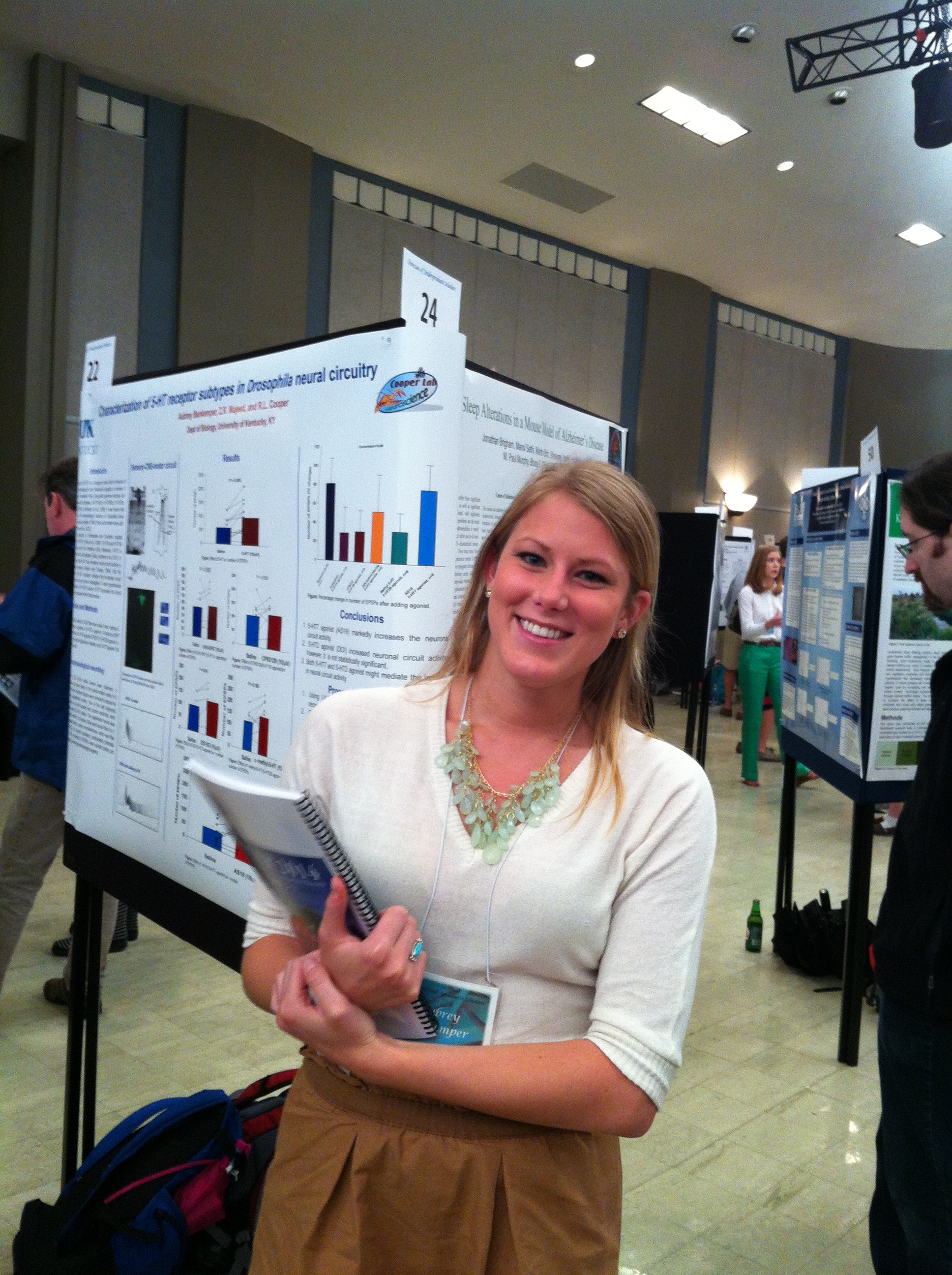
My research focused on the 5-HT receptor subtype characterization in sensory-CNS-motor circuit activity in Drosophila larvae.
Madison Vaughn
I worked on modulators that alter heart rate in larval Drosophila. Also I worked on a deep tissue injury project related to data gathering in human cases to better understand potential new treatments for skeletal muscle repair and recovery after injury.
Yan Zhu
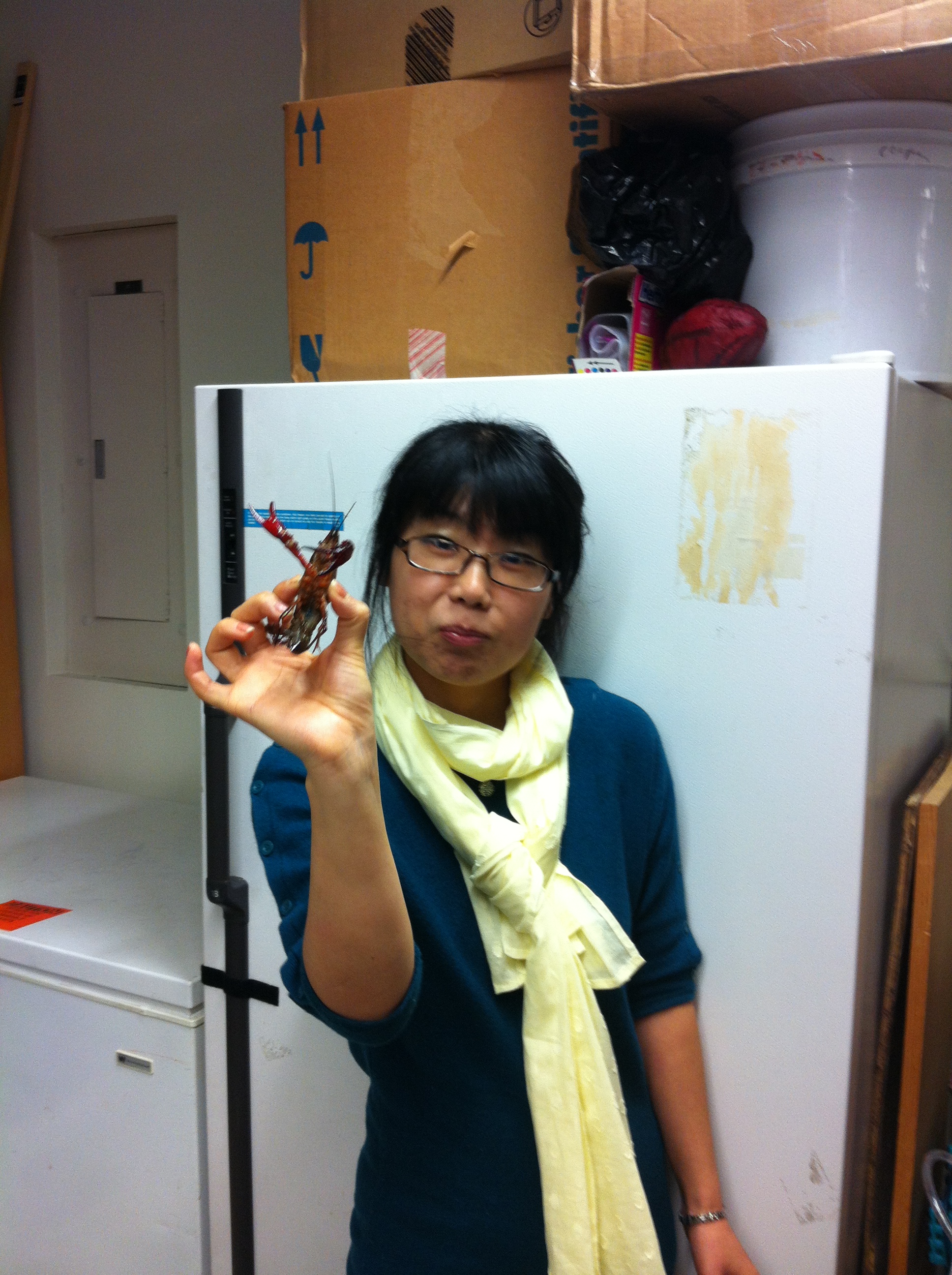
I was graduate student and completed a Masters in Biology.
Chanung Wang
I rotated in the lab for Fall 2013. I was conducting research on the Drosophila larval heart and larval CNS. ironwill820@gmail.com
Tripp Crosthwaite
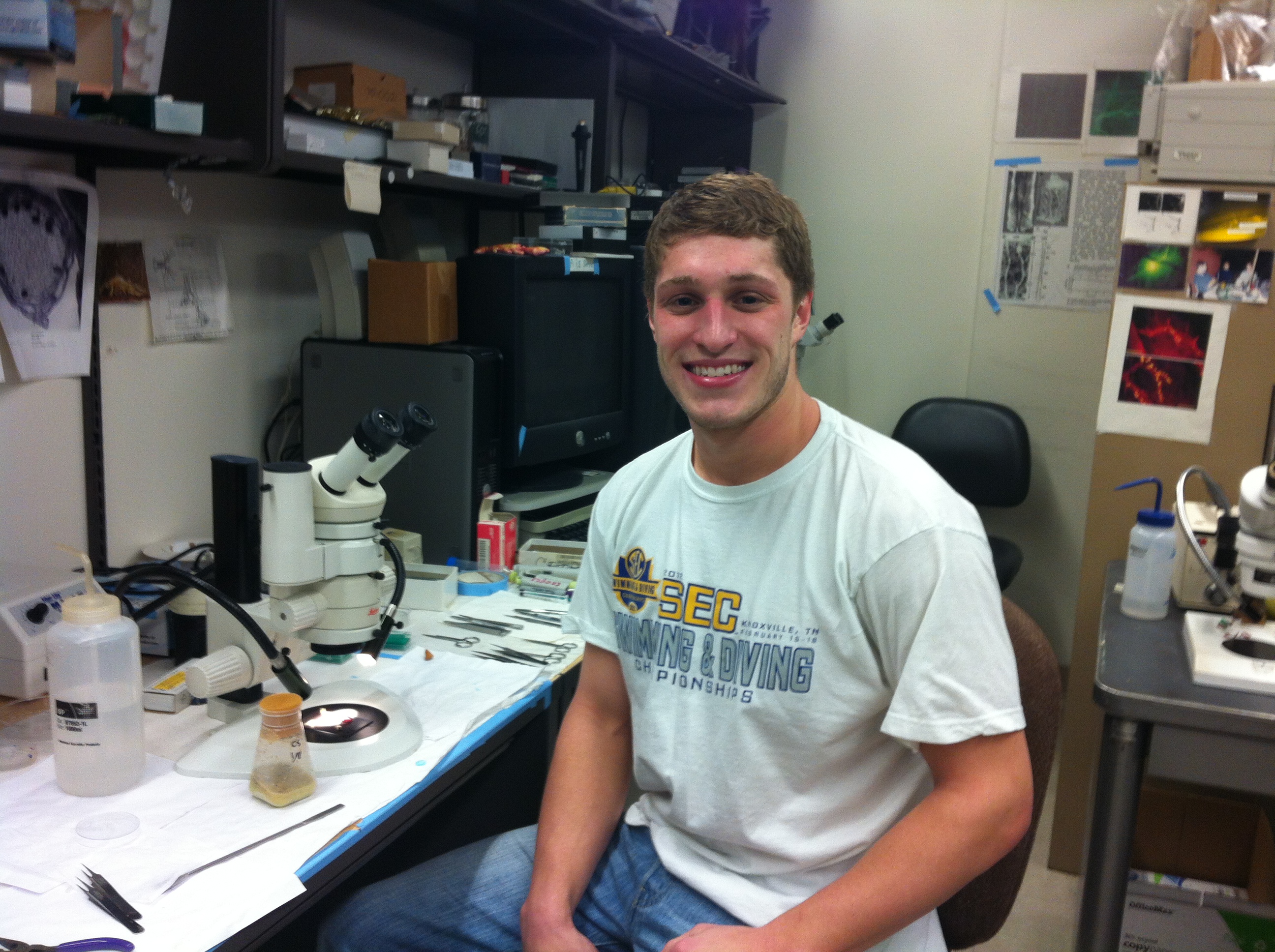
I was studying the underlying mechanism of positive chronotropic effect of 5-HT in Drosophila larval heart.
Emily Holsopple
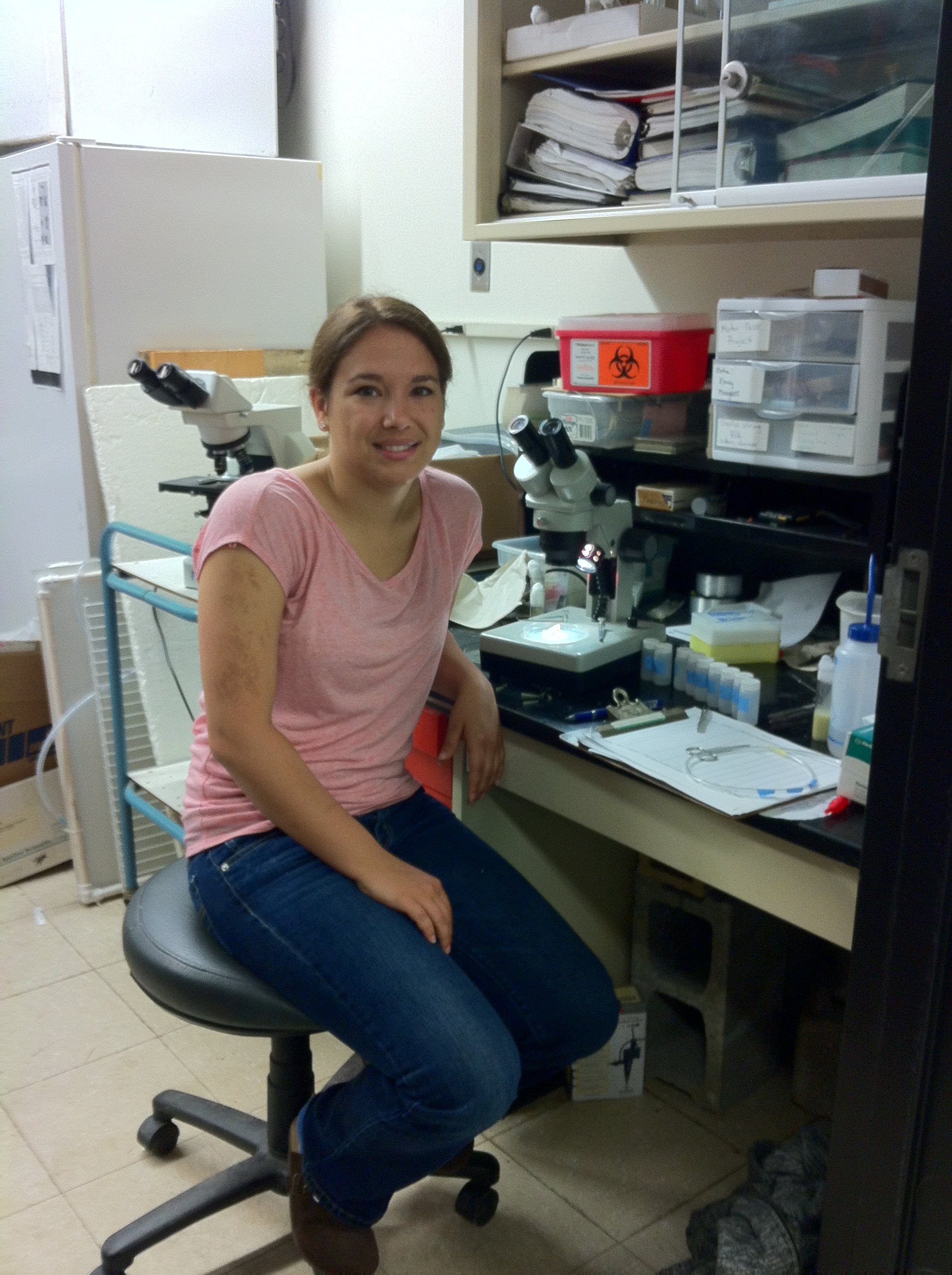
I was working with Josh Tilow (a graduate student in the lab) on the function of the dopaminergic system in Drosophila and in mutant strains.
Stephanie Biecker
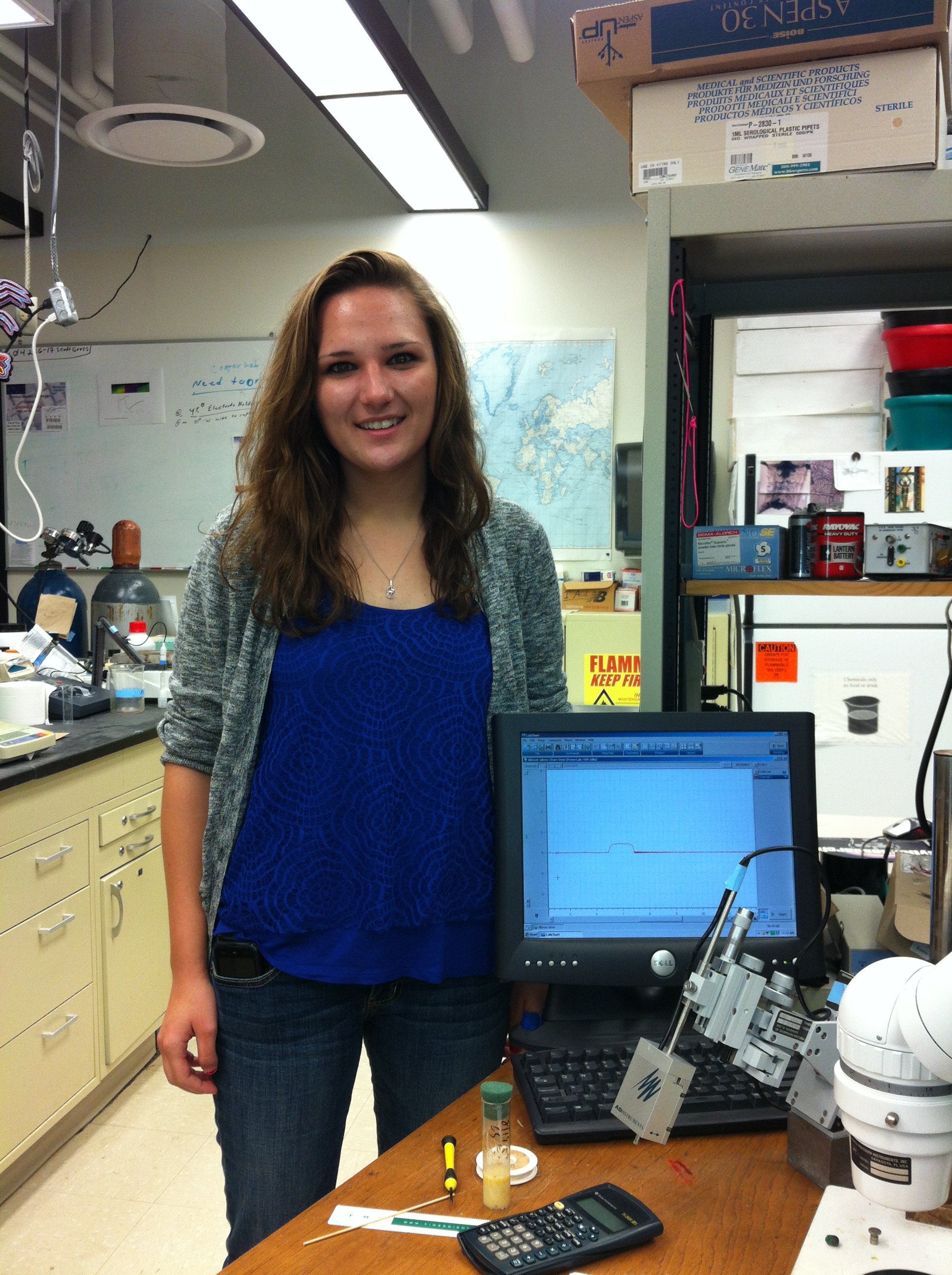
I worked with Josh Tilow (a graduate student in the lab) on the function of the dopaminergic system in Drosophila and in mutant strains.
Esraa Abdel Jaber
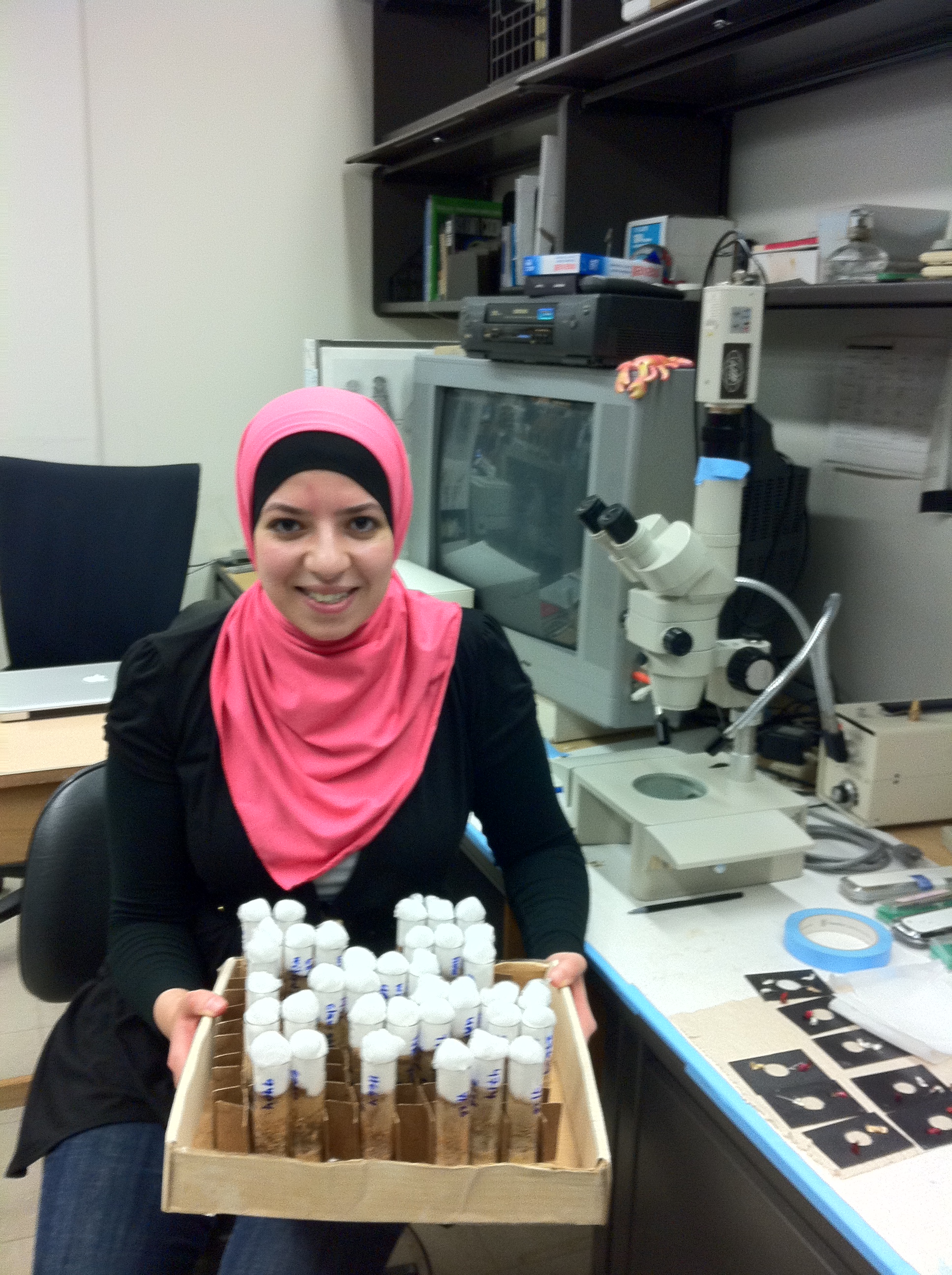
I worked with Zana Majeed (a graduate student in the lab) on the function of the serotonergic system in Drosophila and in mutant strains.
Taylor
Brown
I helpedto develop educational modules to convey stereological problems that scientists face with real life situations such as in medical imaging to reconstructing images in 3D from transmission electron microscopy. The modules make use of basic geometric and algebraic principals to solve problems mathematical problems in determining surface area and volume of structures.
Robin Swoveland
I wasa high school student conducting research on the pharmacology of 5-HT receptors on the Drosophila heart. I worked with Zana.
Shirin Bigdeliazari
I was working on deep tissue injury models in Drosophila and crayfish to better understand the role of skeletal muscle repair and recovery.
Wen-Hui
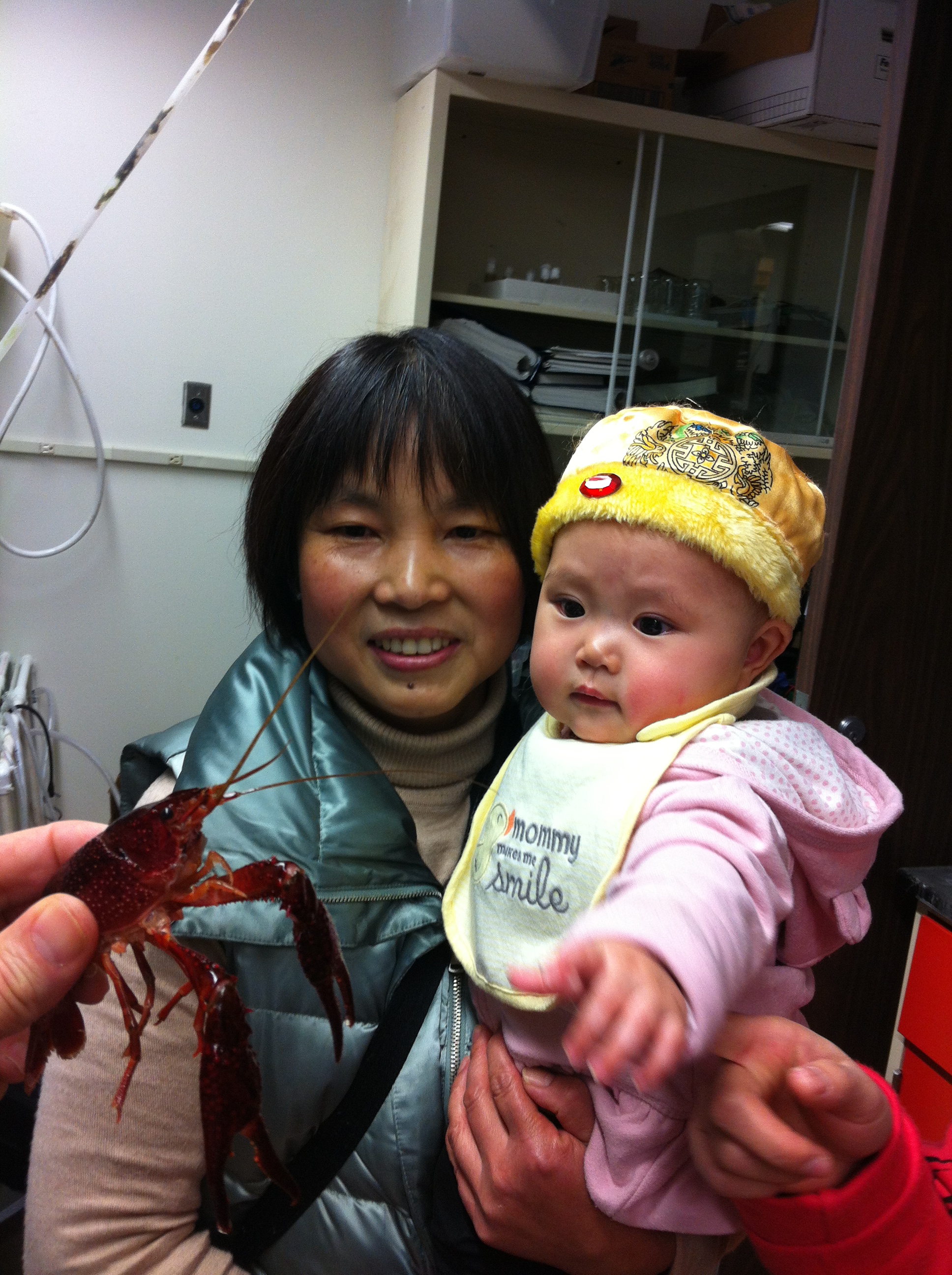
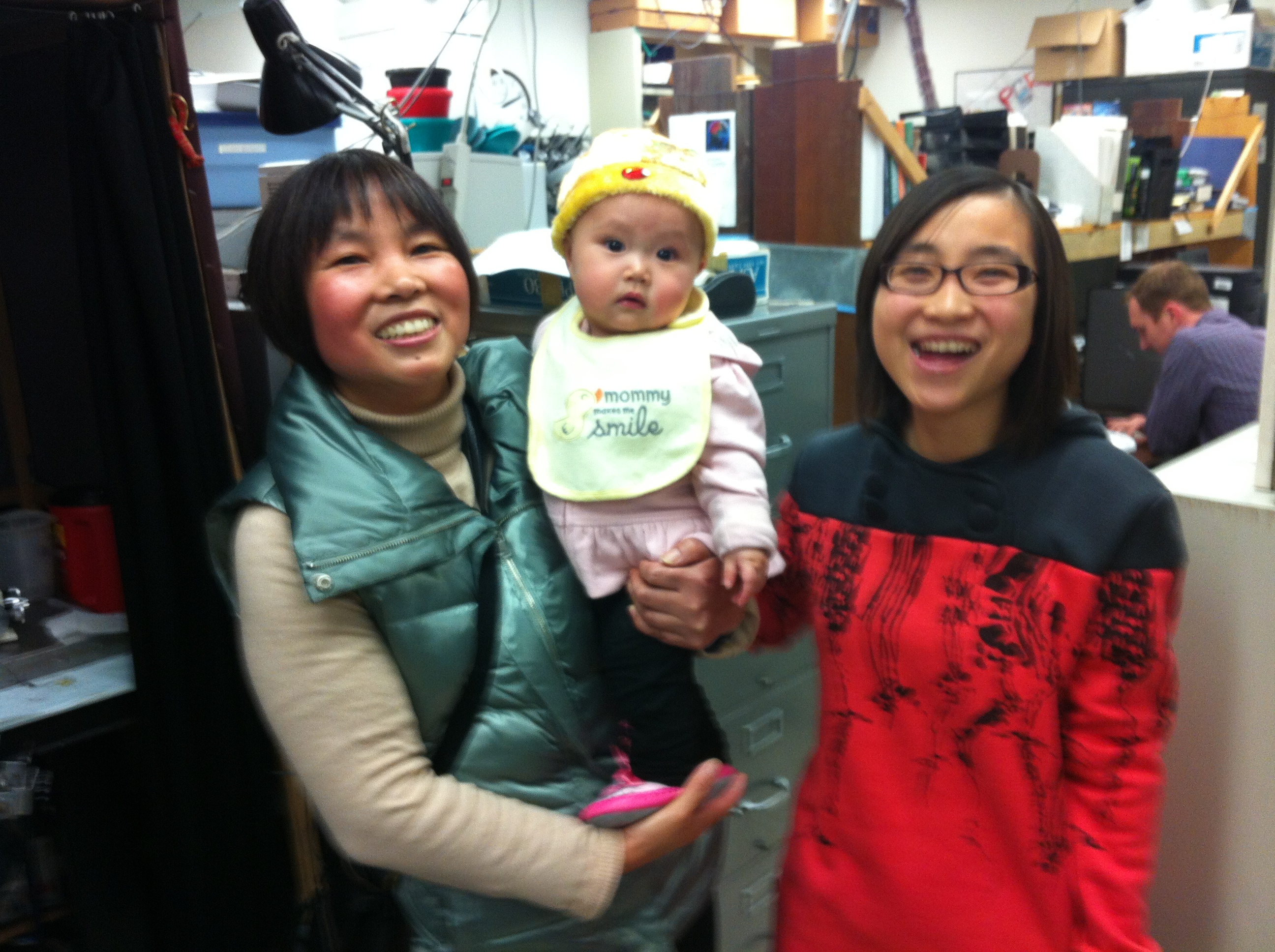
Visit my www page (Go To)
I am researching in the area of synaptic physiology and examining the recyclying of vesicles. I am a PhD student in the Dept. of Biology.
Leo deCastro
I was a high school student at Henry Clay. My research was on the effect of temperature on synaptic transmission.
Kayla King
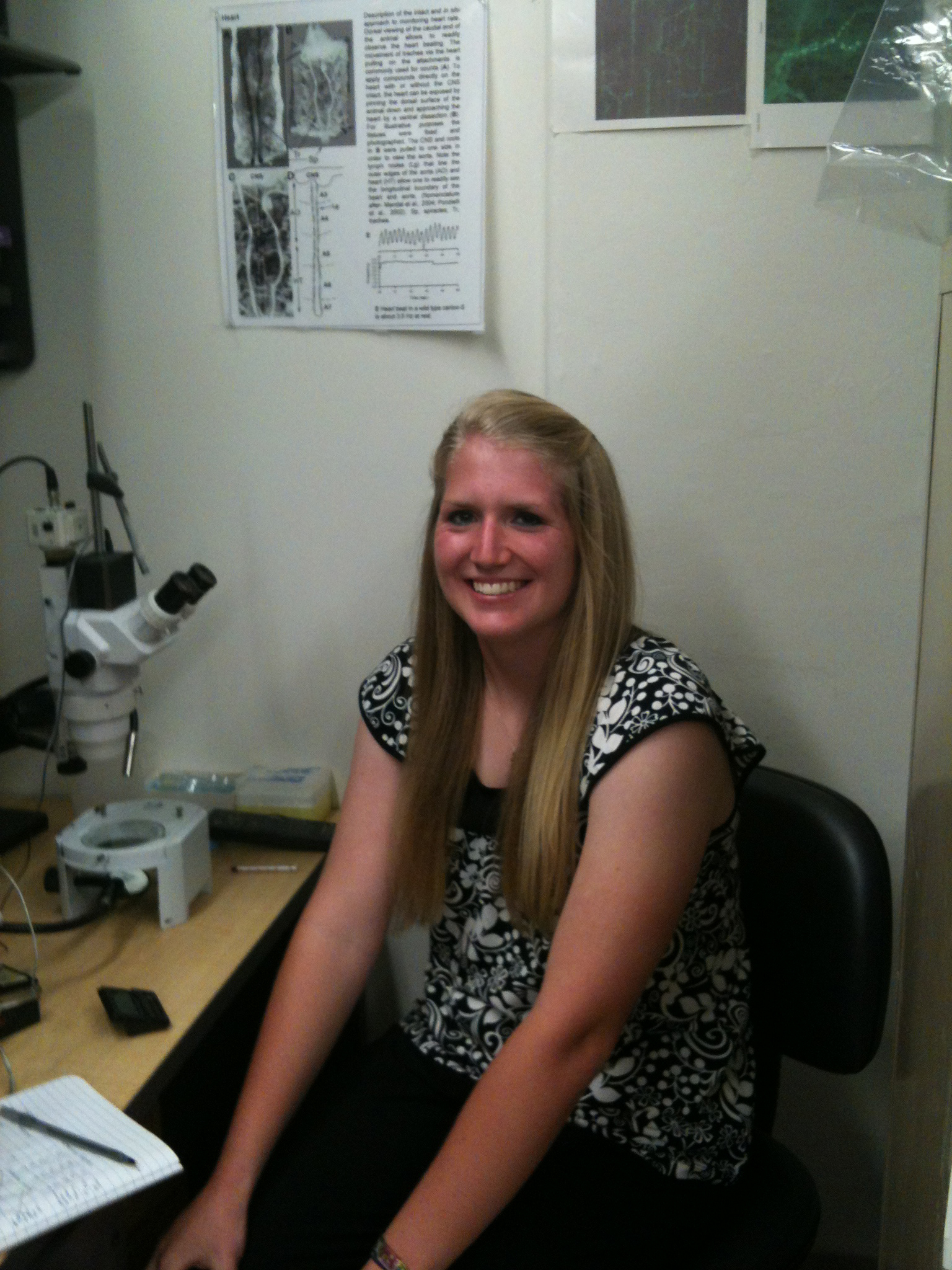

I was astudent working on projects related to synaptic transmission, regulation of heart function
and modulation of behavior related to the dopaminergic system. I was a student in Ag Biotech at UK.
Ellen Burns
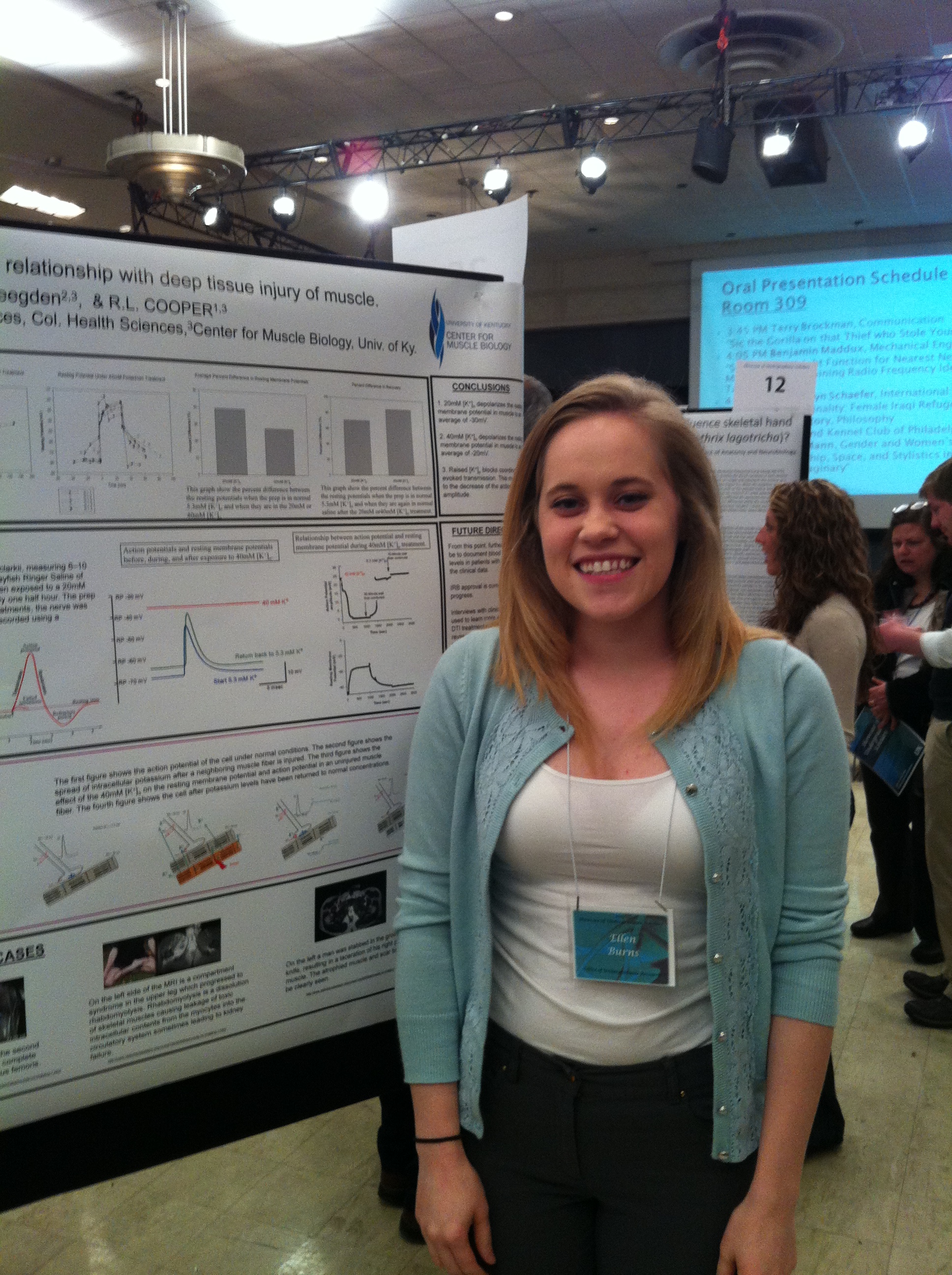
I was working on how modulators alter the contraction and rate of contraction of the intestine of crayfish.
This relates to human disorders with GI motility. Ribble Fellow 2012-2013. Currently I am working on projects realted to deep tissue injury and the effects of extracellular K+ ions on the health of skeletal muscle.
Tania Boyechko

I was working on
health related educational project with people that have COPD and treatment
with oxygen. I was working in collaboration with Dr. McNall Krall in the
Dept. of STEM Education at UK.
Kristin Cornwell
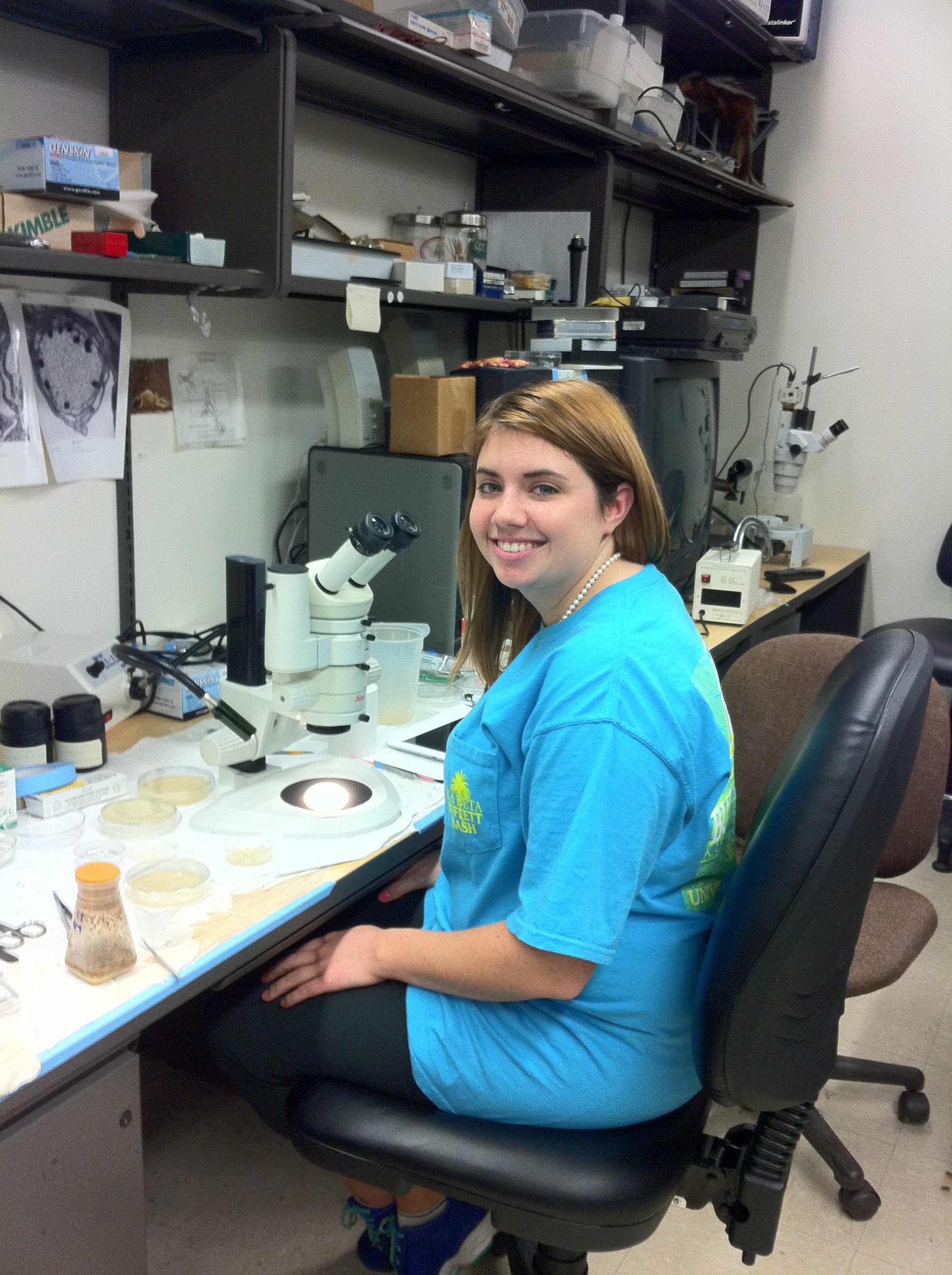
I was working with Zana Majeed (a graduate student in the lab) on the function of the 5-HT system inDrosophila and in mutant strains.
Emily Rayens
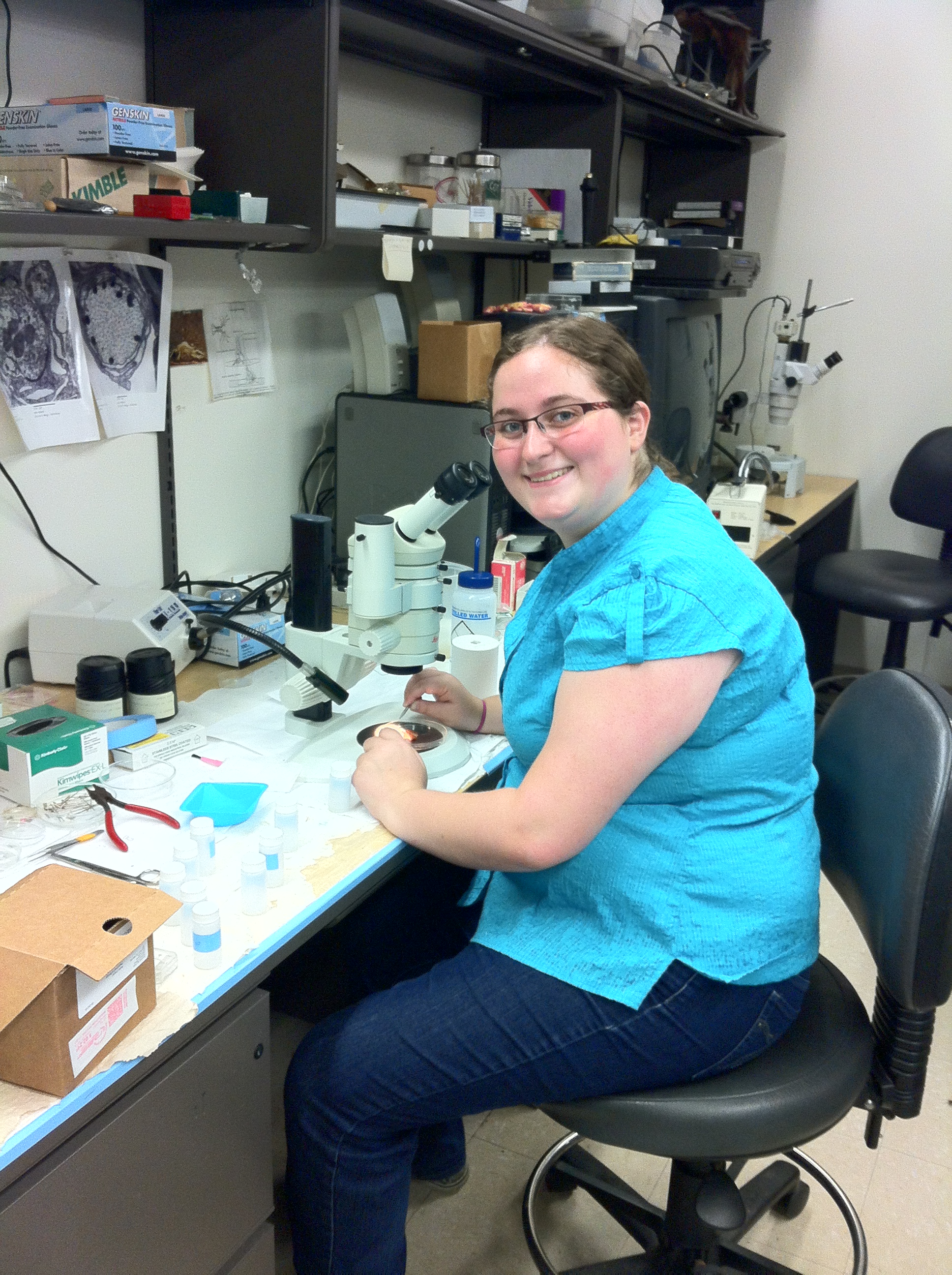
I was working with Josh Tilow (a graduate student in the
lab) on the function of the dopaminergic system in Drosophila and
in mutant strains.
Jordan Rice
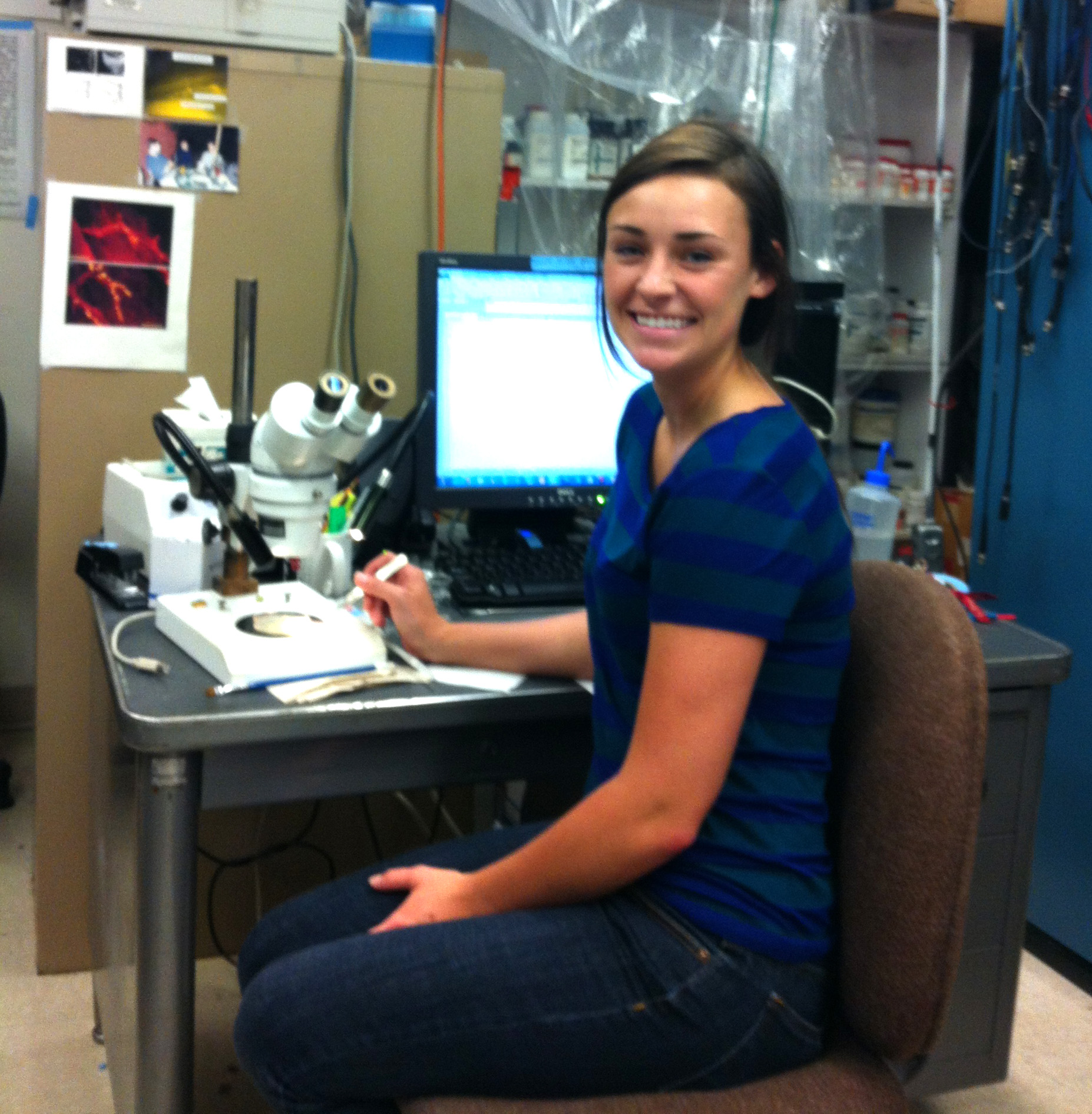
I was with the KBRIN summer 2013 program. I am developing new behavioral assays in Drosophila. This will be used to relate to modulation of CNS activity.
Justin Graff
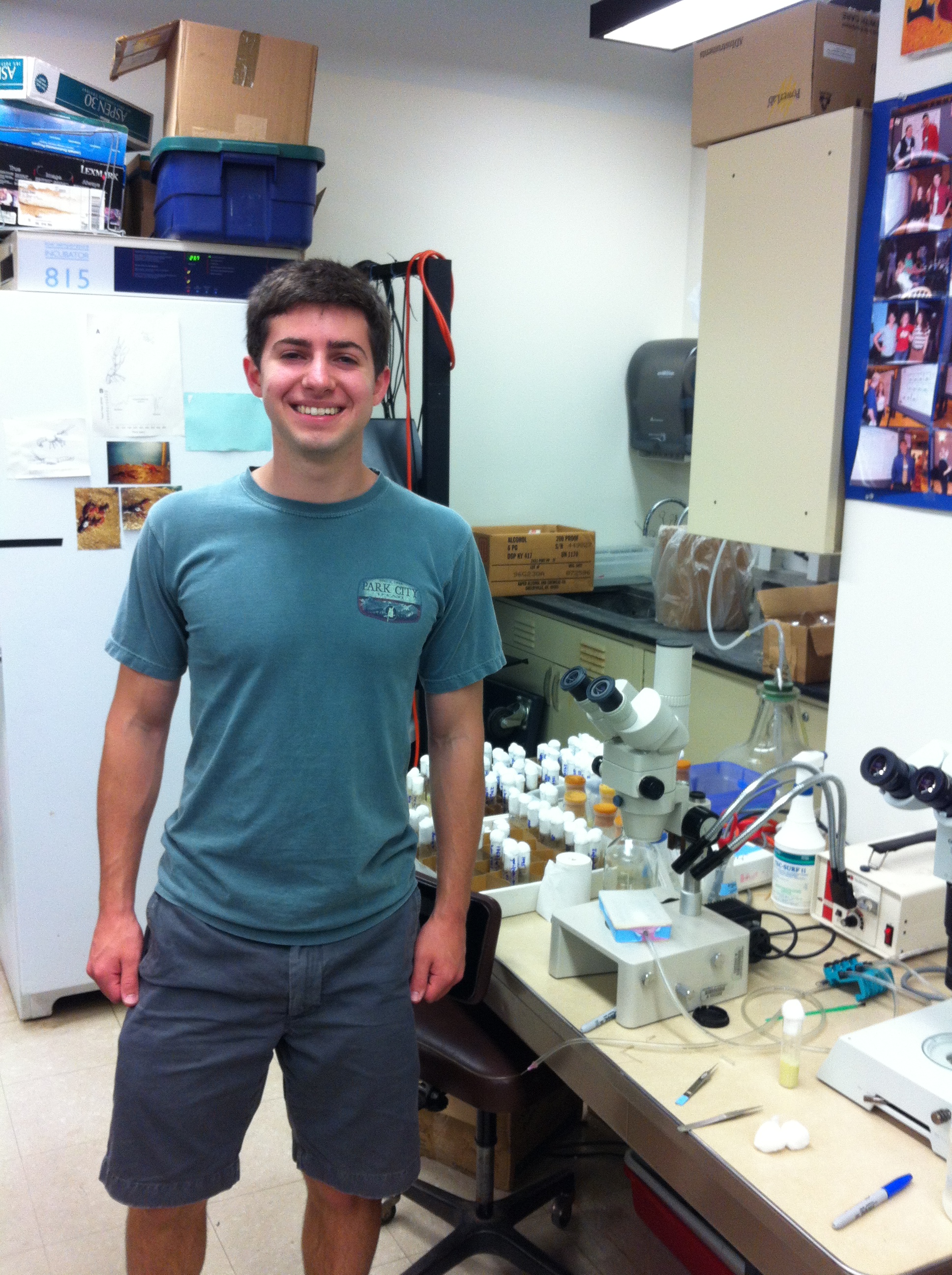
Justin is back
after spending a year as a college student at Emory University. I worked
in the lab conducting my high school science fair projects for 2 years.
Now back for the summer to follow up on the projects.
Rachel C. Holsinger
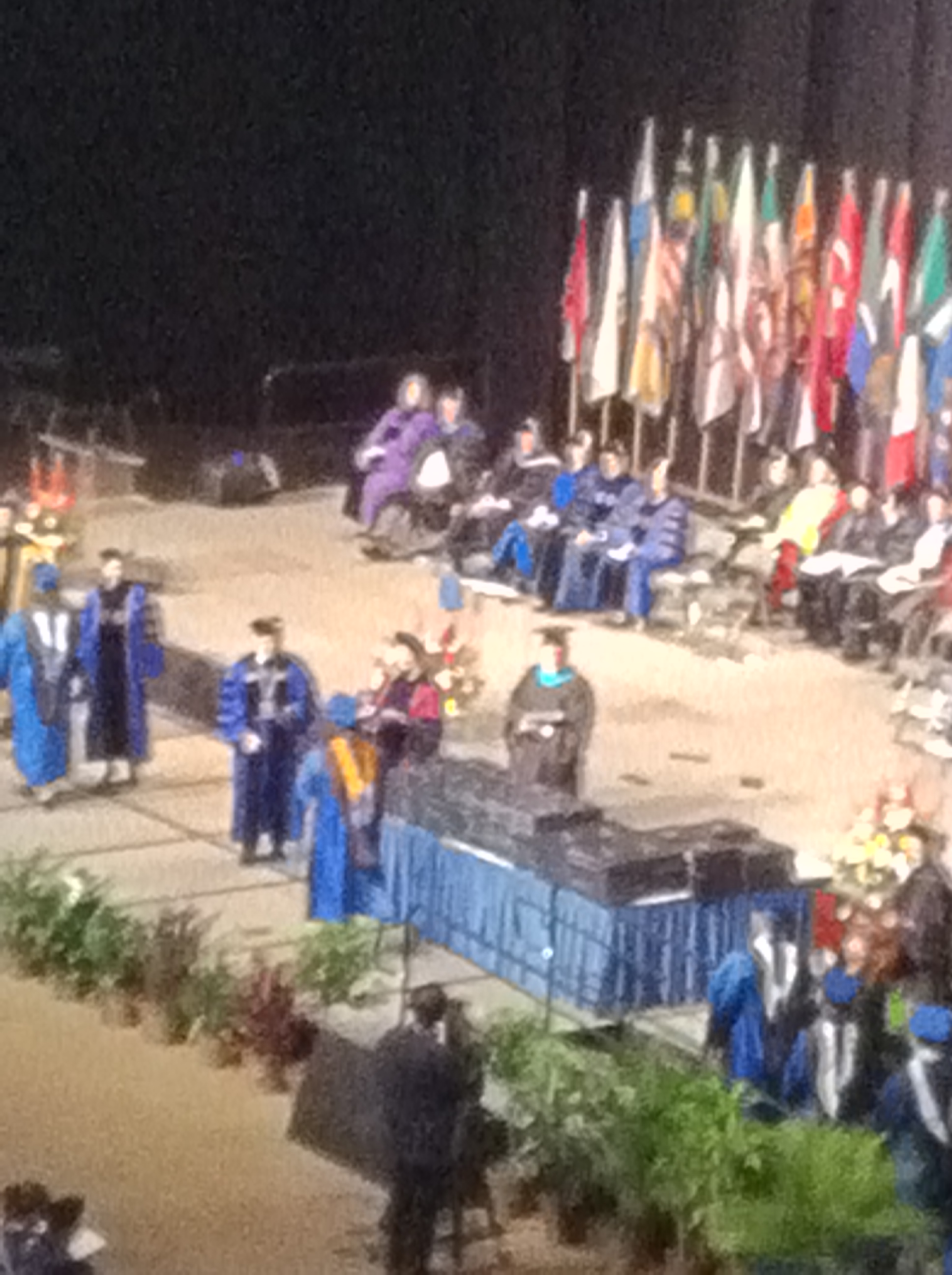

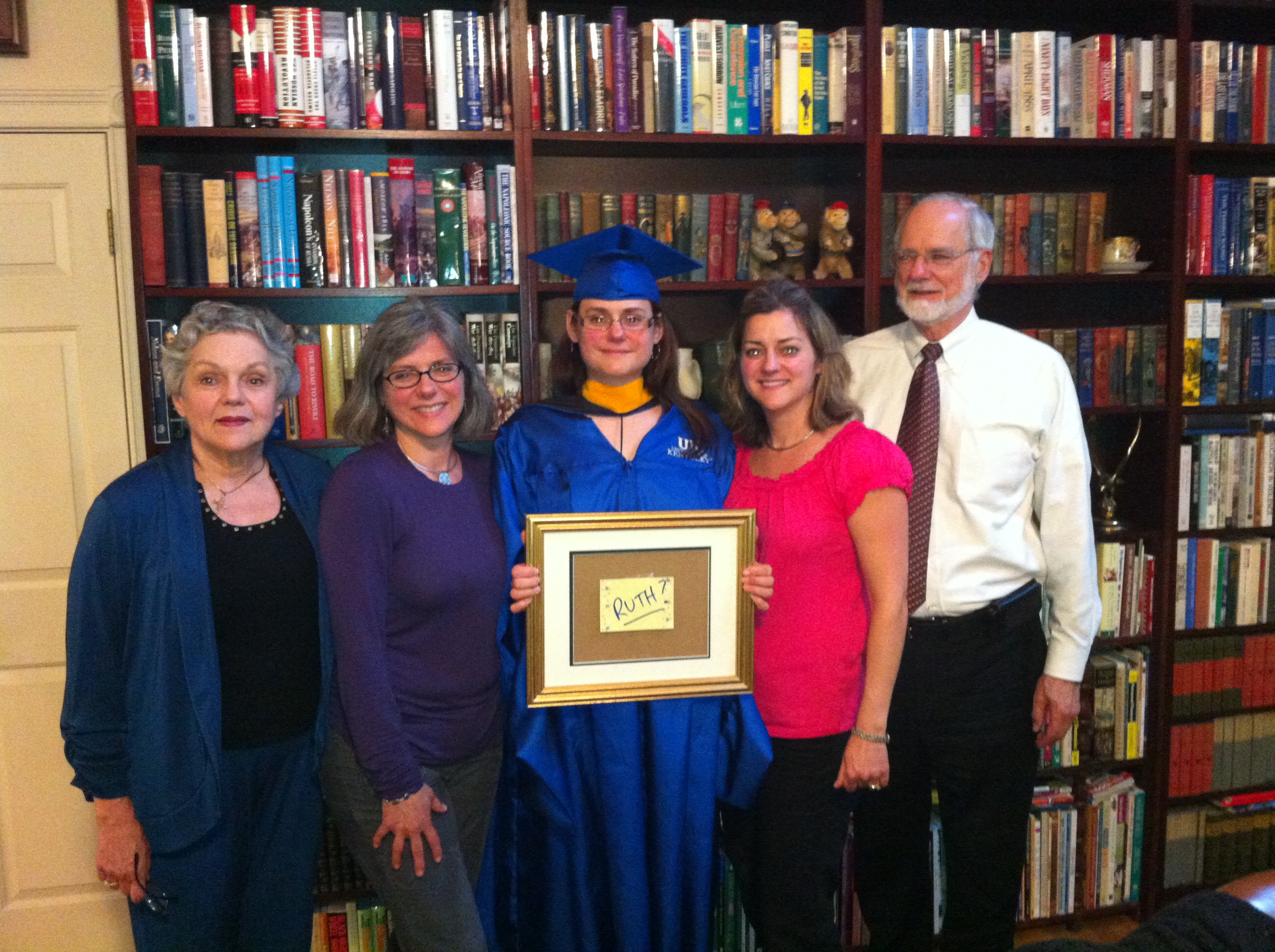
Visit my www page. (Go To)
I am finishing my graduate studies in muscle physiology.
Thesis PDF
Weikai Kong
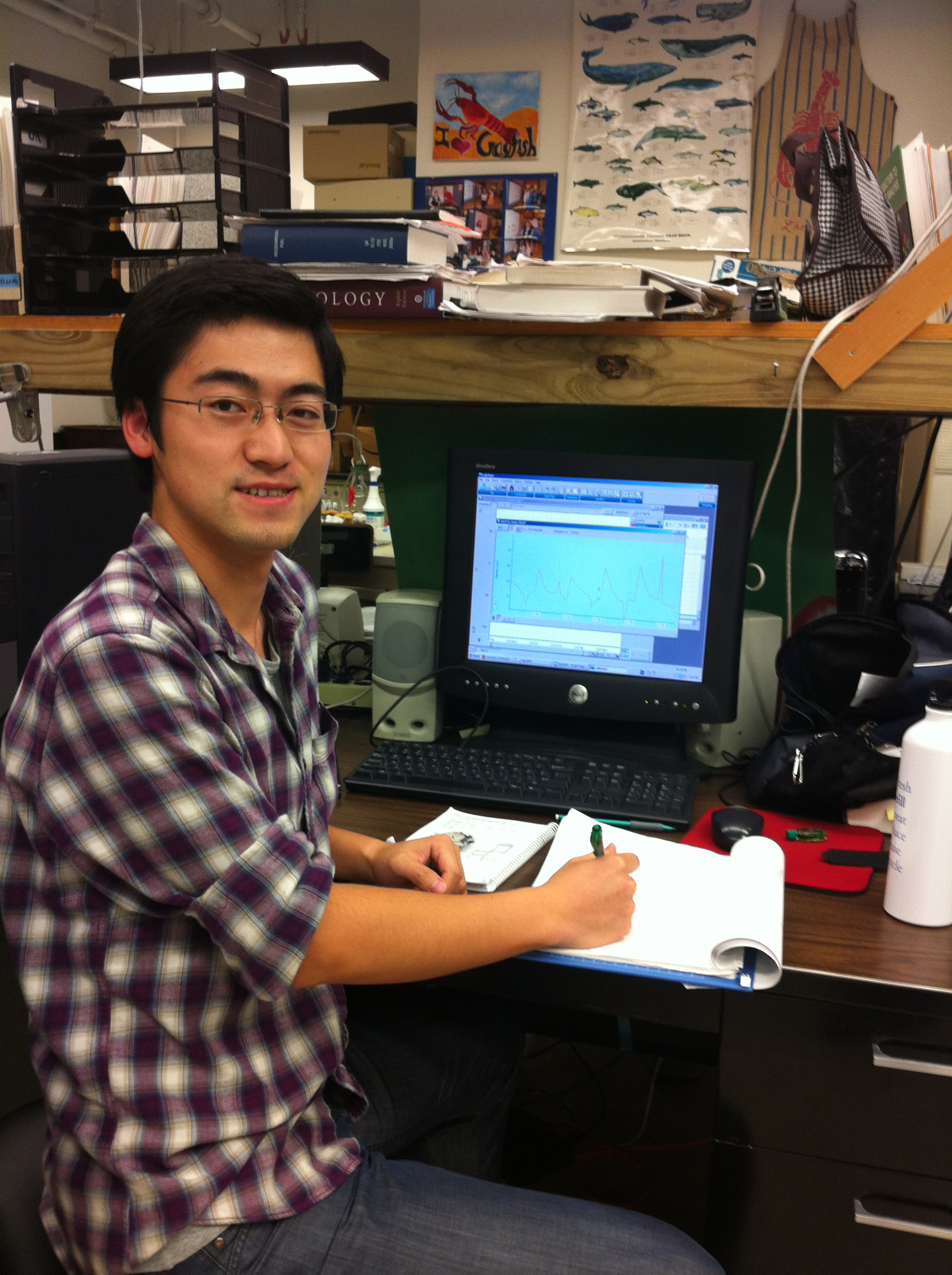
I was a graduate student (Masters student) working on synaptic depression and recruitment of vesicle pools at the neuromuscular junction.
Sarah Kenney
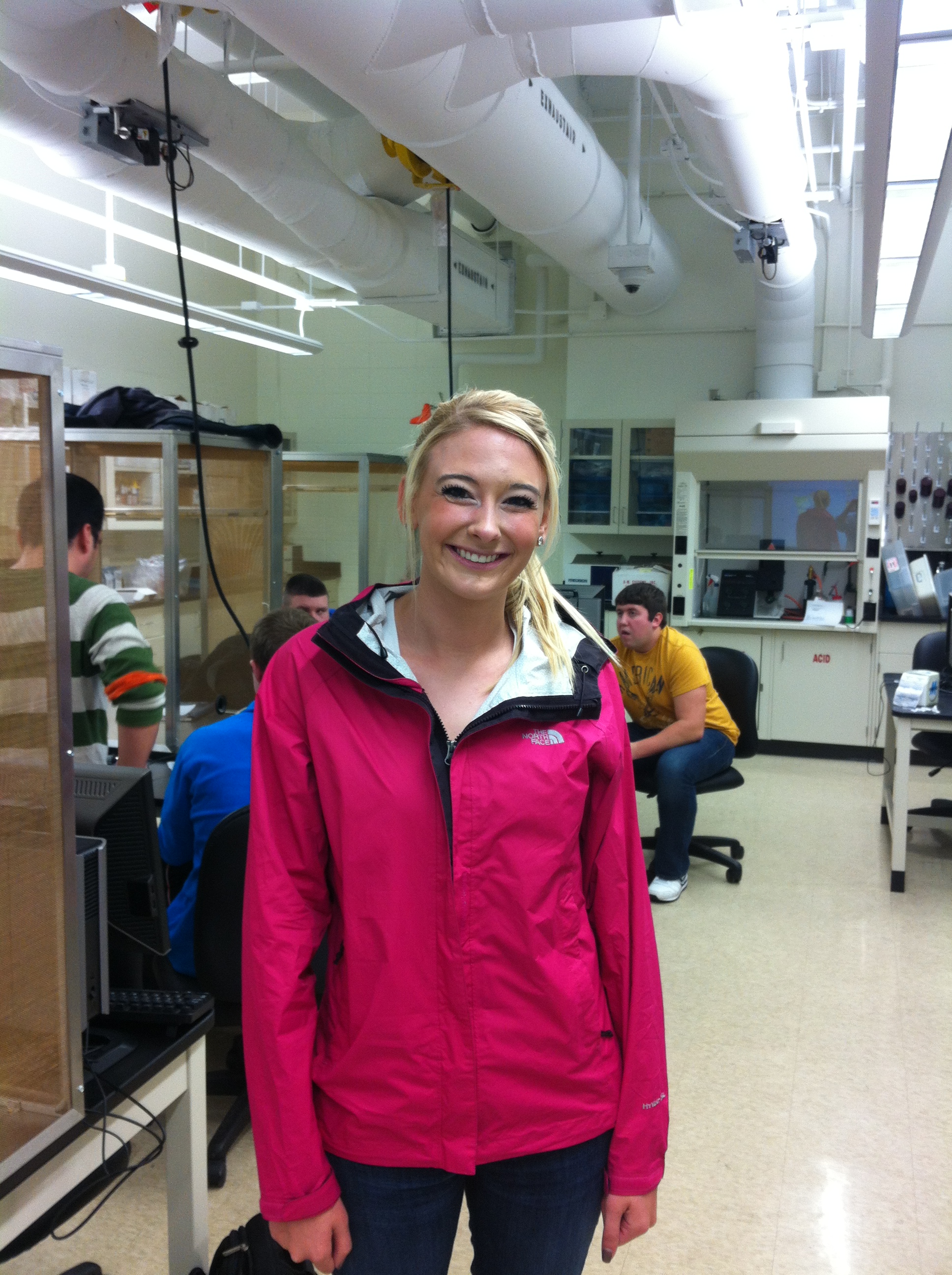
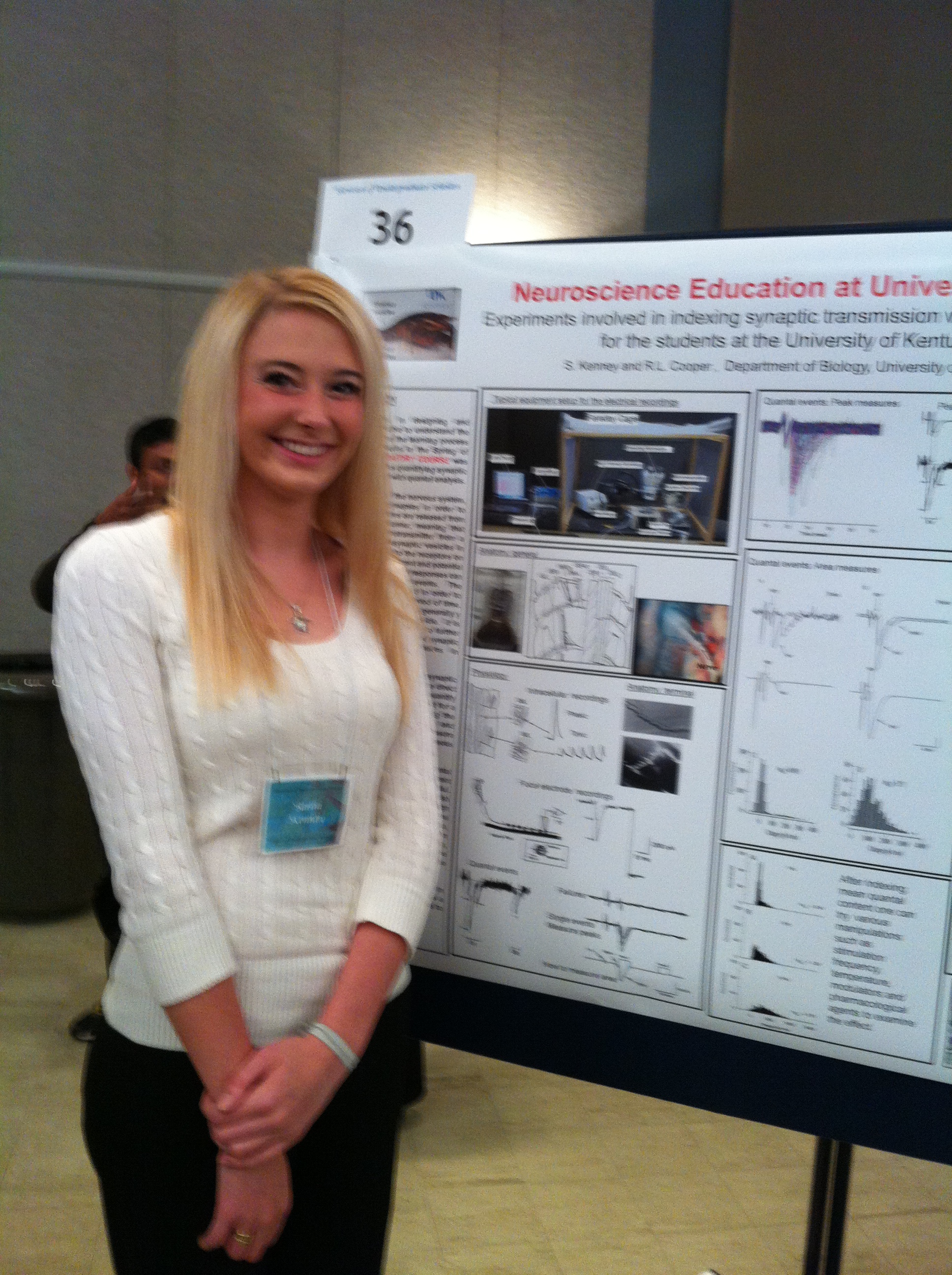
I helped to develop a teaching lab for the new Neurophysiology course in Biology. The lab protocol and movie was on quantal analysis of synaptic transmission at the NMJ in crayfish. I presented this teaching module at the UK Showcase of Scholars in April 2013.
Jessica Browne
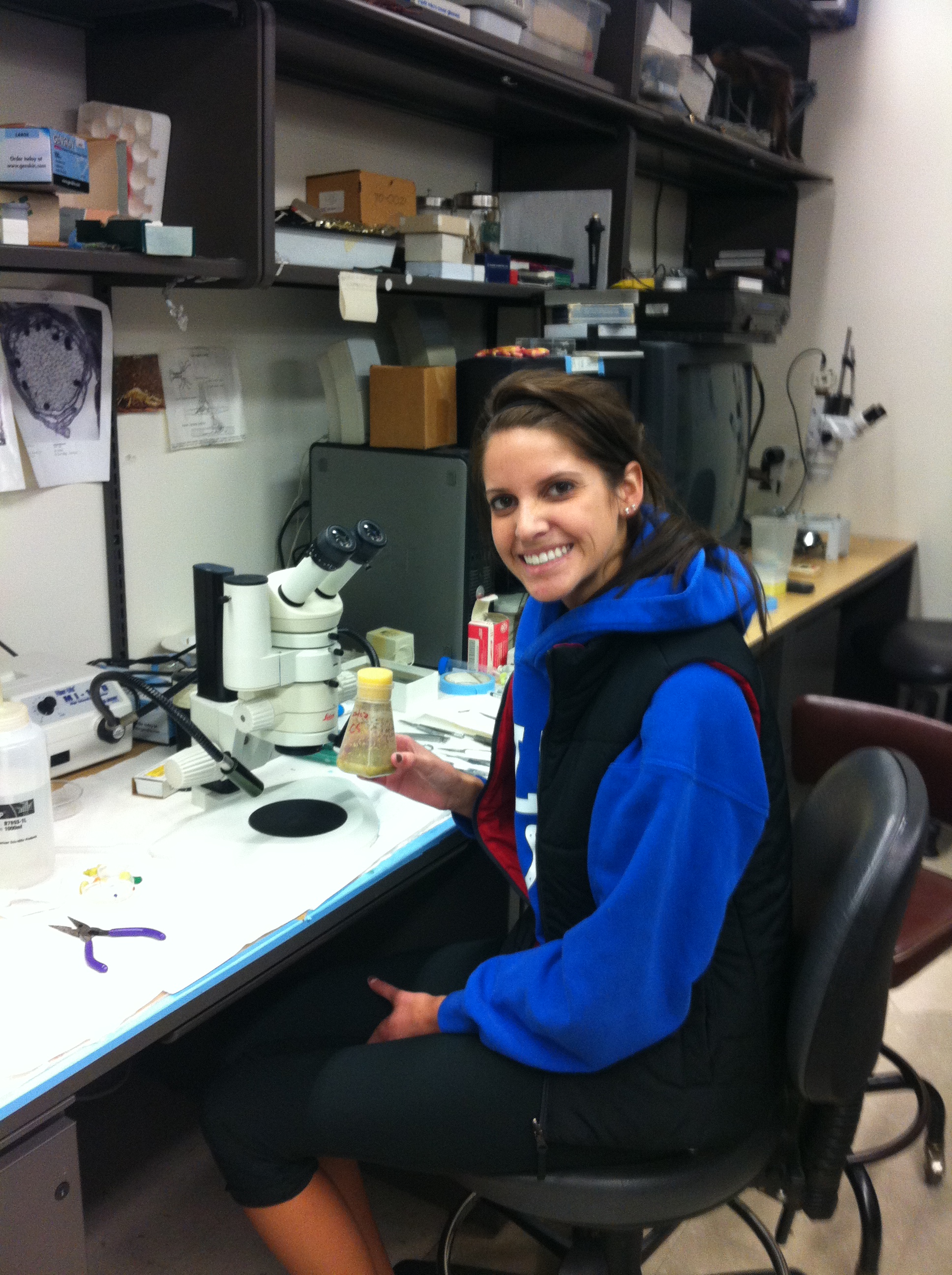
I worked with Josh Tiltow on the effects of dopamine in development, behavior and neural function in the fruit fly (Drosophila) model.
Jenna Rufer
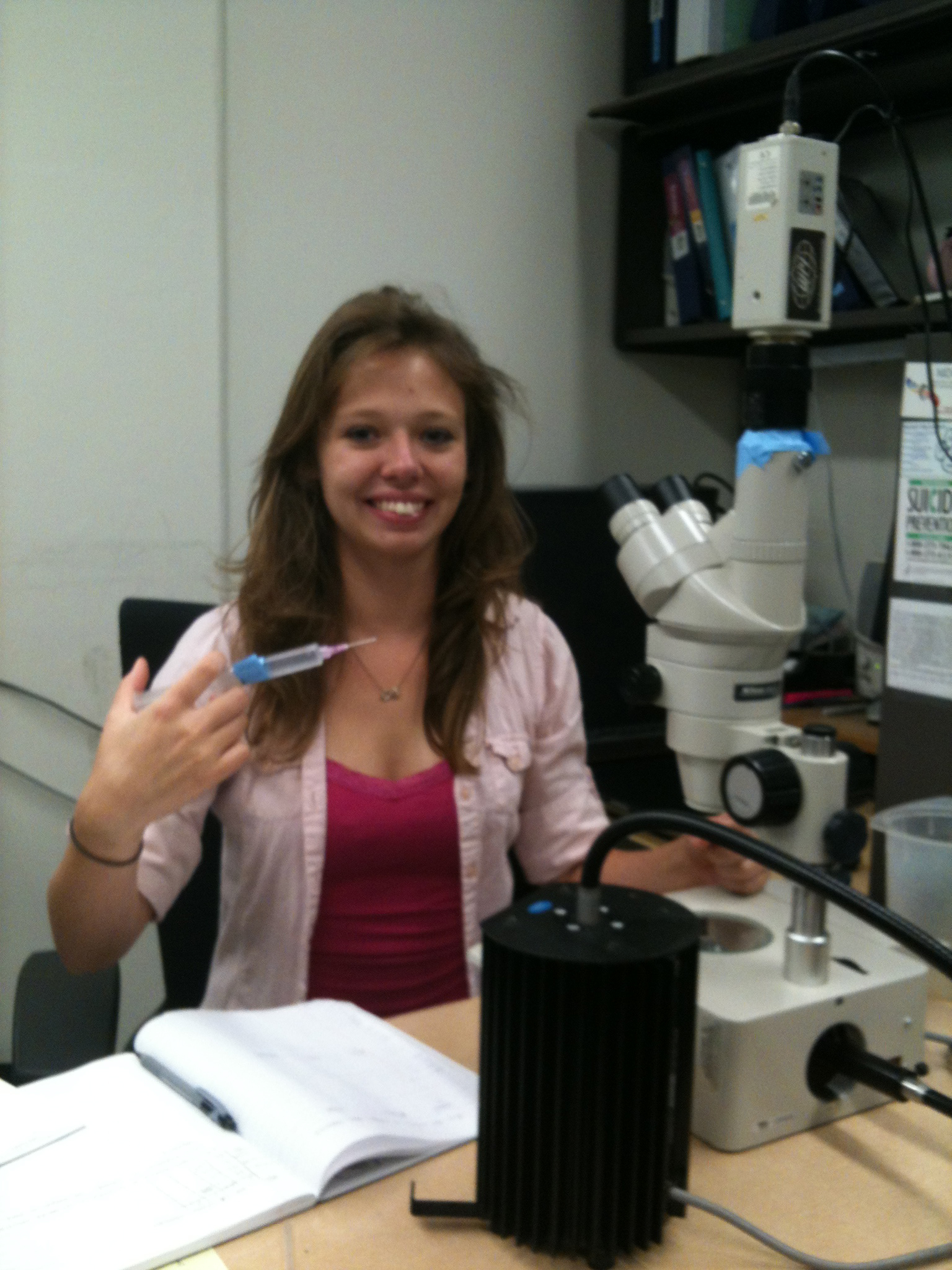
I am at student working on projects related to synaptic transmission, regulation of heart function
and modulation of behavior related to the dopaminergic system. I am a student at Berea college.
Rebekah Dixon

I am helping to develop teaching models and infomation for outreaching to the community on a cardiovascular educational project that Nathan Spitz is working on. I am also working on the educational literature for blood pH and effects of CO2 realted to human health.
Jeremy T. Keathley
..
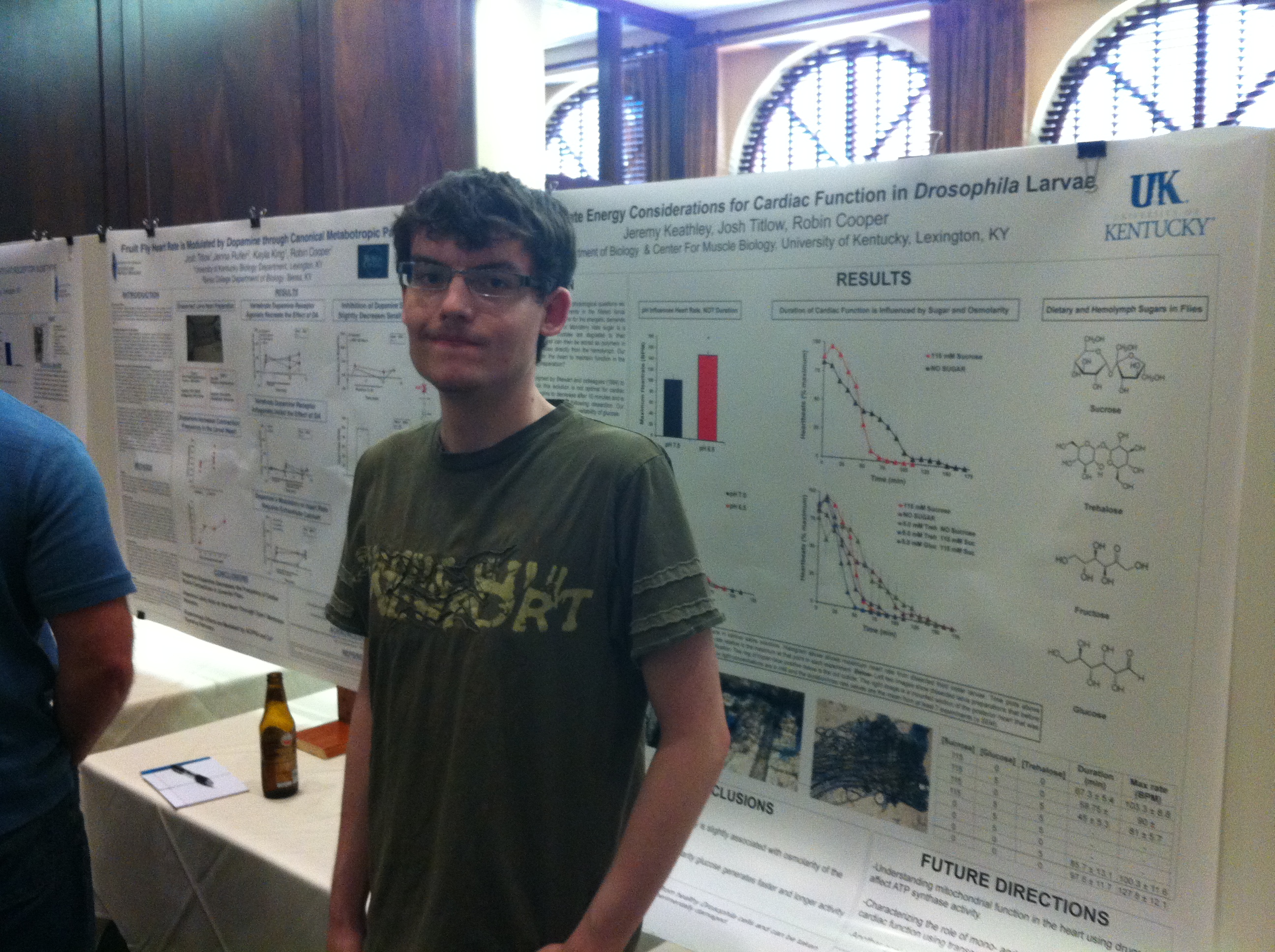
I am researching the metabolism of cardiac tissue in Drosophila.
Jessica Hill
I am back to wrap up so past projects related to heart function, development, CNS activity related to the cholinergic system.
Yoo Sun Chung
I am researching on temperature adaptations in crayfish and prawns.
Ann S. Cooper
Personal www page: GO TO , also see Topical Studies for Neuroscience www.
On the left is Ann walking a person through her poster at the annual Society for Neuroscience meeting (2008).
Ann is working on the circadian patterns of larval Drosophila.
Also she is working on nerve muscle matching at the neuromuscular junctions of crayfish.
See high school www page (go to). Now she is a Freshman at UK and turning her high school projects into manuscripts for publication.
Richard M. Cooper
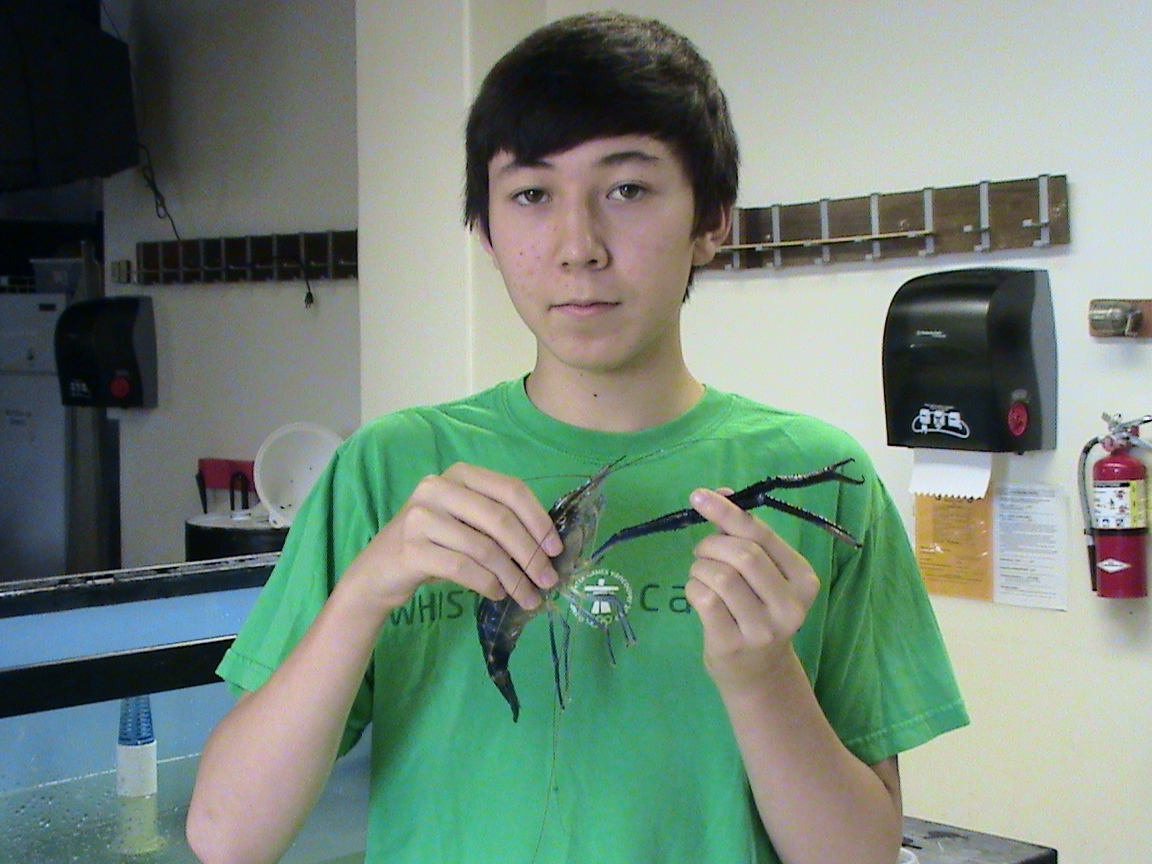
I am a
high school student at Lafayette
High School. I am working on a science fair project in the Cooper
lab.
Also I am designing experiments for high school physiology classes.
See www page for experiments designed for high school (go
to)
http://web.as.uky.edu/Biology/faculty/cooper/Prawn%20DVD/Richard%20Prawn%20Page2.htm
Ariel Robinson
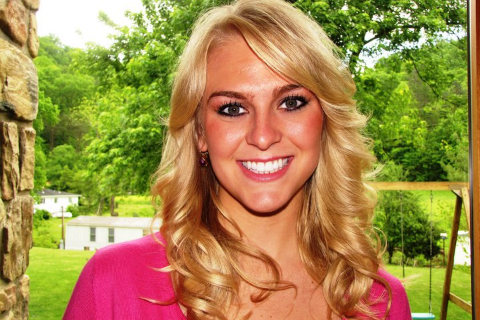
I am a UK Ag Biotech student working on electrical conduction in nerves the crayfish model.
Michael Crum
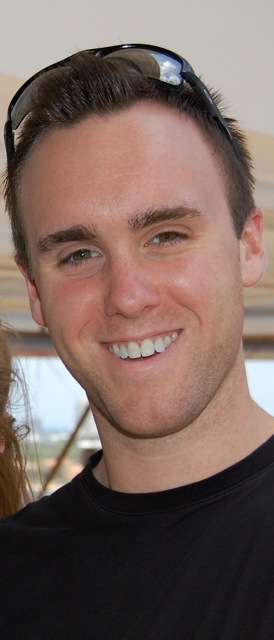

I am a Sr. Biology and Neuroscience major. I am working on the effects of dopamine on development, behavior and synaptic physiology in Drosophila.
Valerie Sarge
I am a high school student. I am working on developing salines for physiological recordings in Drosophila. I hope this will help the fruit fly researchers around the world. Since the fruit fly is used as a research model to study human disorders it is important to have good physiological salines to study physiology. See recent paper on Drosophila as a model for human studies [PDF]. My Movies of a Fly heart: AVI format (~90MB) or MPEG format (50MB). (download to your computer then play).
Nathan Spitz
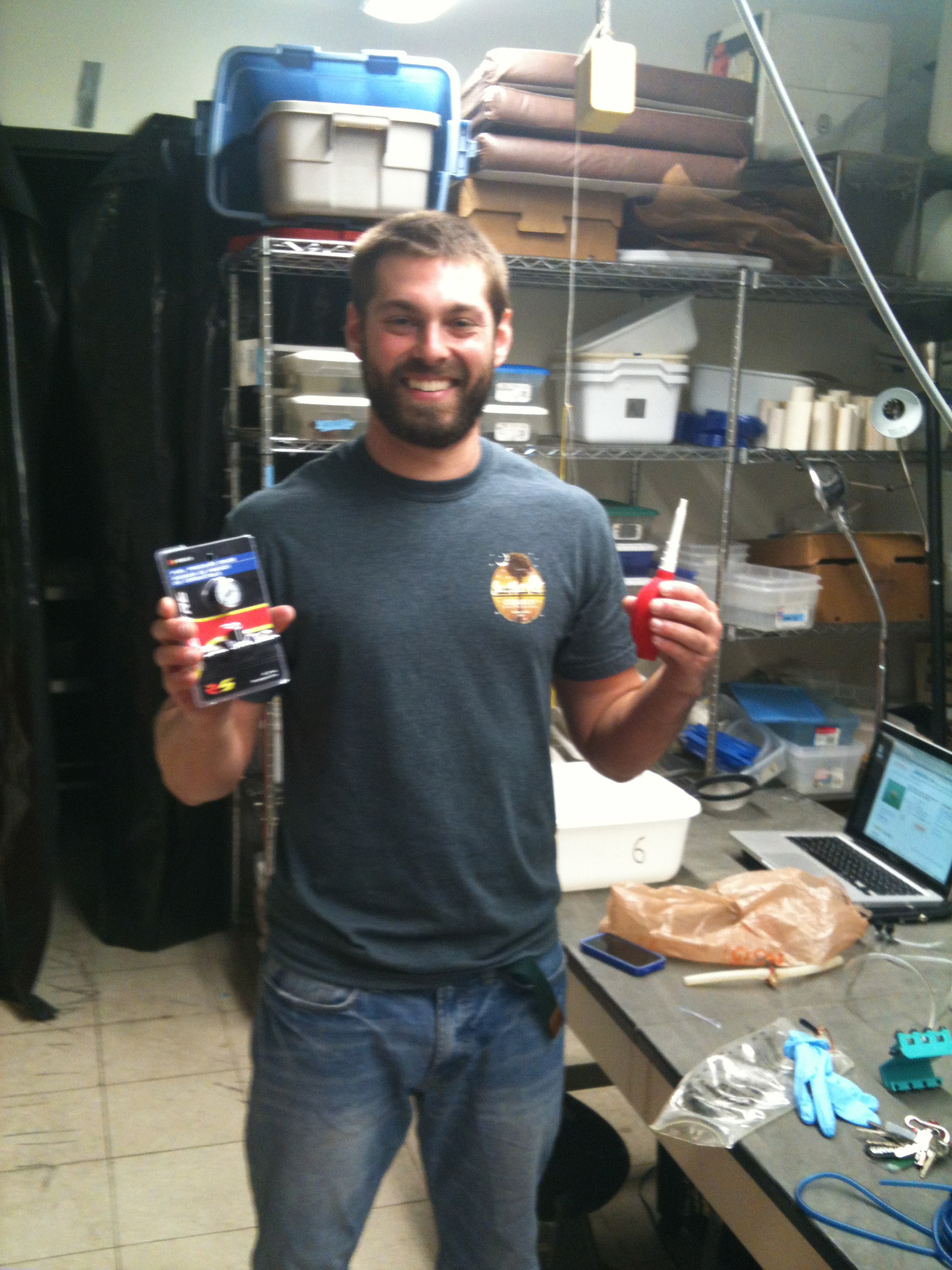
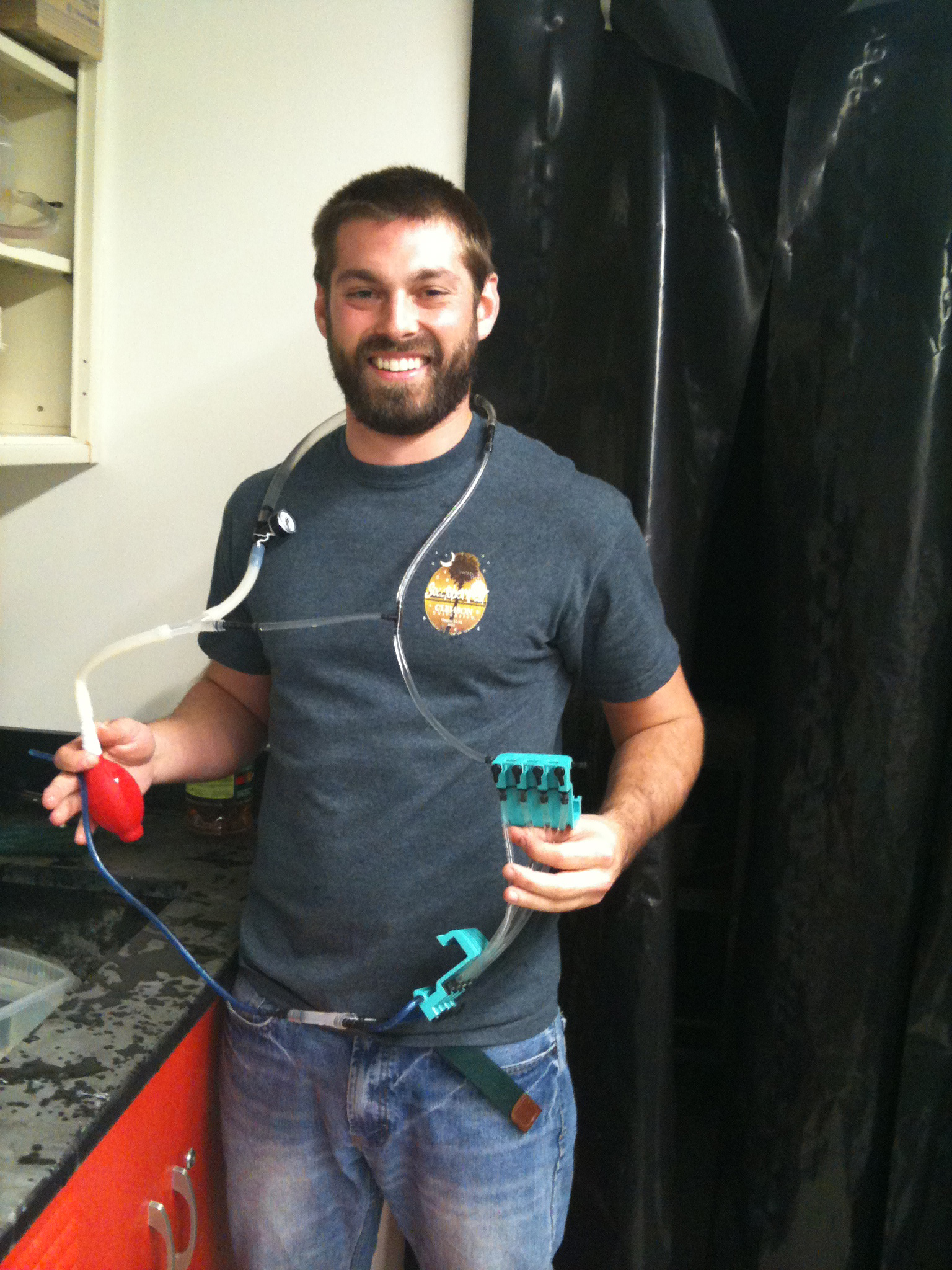
I am working on a cardiovascular educational project. Currently I am constructing a kit that can be used in various locations for people to use in order to model the effect of disease states on the cardiovasucular system.
Jensen Potenza
I was working on the neural regulation of the GI tract in the crayfish model.
Kylah Rymond
Kylah is back ! On her 18th B-day. What deadication.
Working on Drosophila and examining various behaviors that might show an alteration related to a mutation of interest.
Chioma Anosike
Emily Houston
Justin Graff
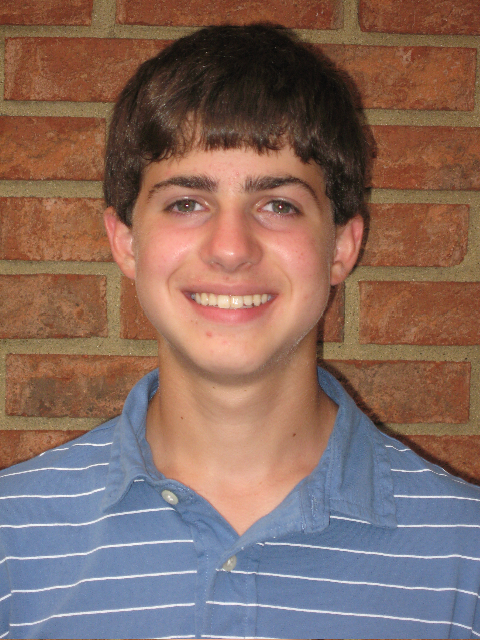
I am a high school student at Henry Clay. I was working on a science fair project in the Cooper lab.
See high school www page (go to)
MeNore Lake

MeNore Lake,
a sophomore at the University of Kentucky, seeks to become a medical doctor
and is currently majoring in Biology. This semester, she will aid in the
making of solutions to be used in Dr. Cooper's wet physiology labs. As
the semester progresses, MeNore will develop an understanding of the field
of experimental science and participate in the techniques of dissection
and photography of crayfish leg muscles. Her work will be used in publications
and presentations regarding the tonic and phasic nerve terminals exhibited
by the crayfish. She is eager to learn about this research area and is
looking forward to her experience in this research course.
Brittany Baierlein
I am helped in the bio350 course.
Bonnie Leksrisawat
I am helped in the bio350 course.
Ashley Buchanan
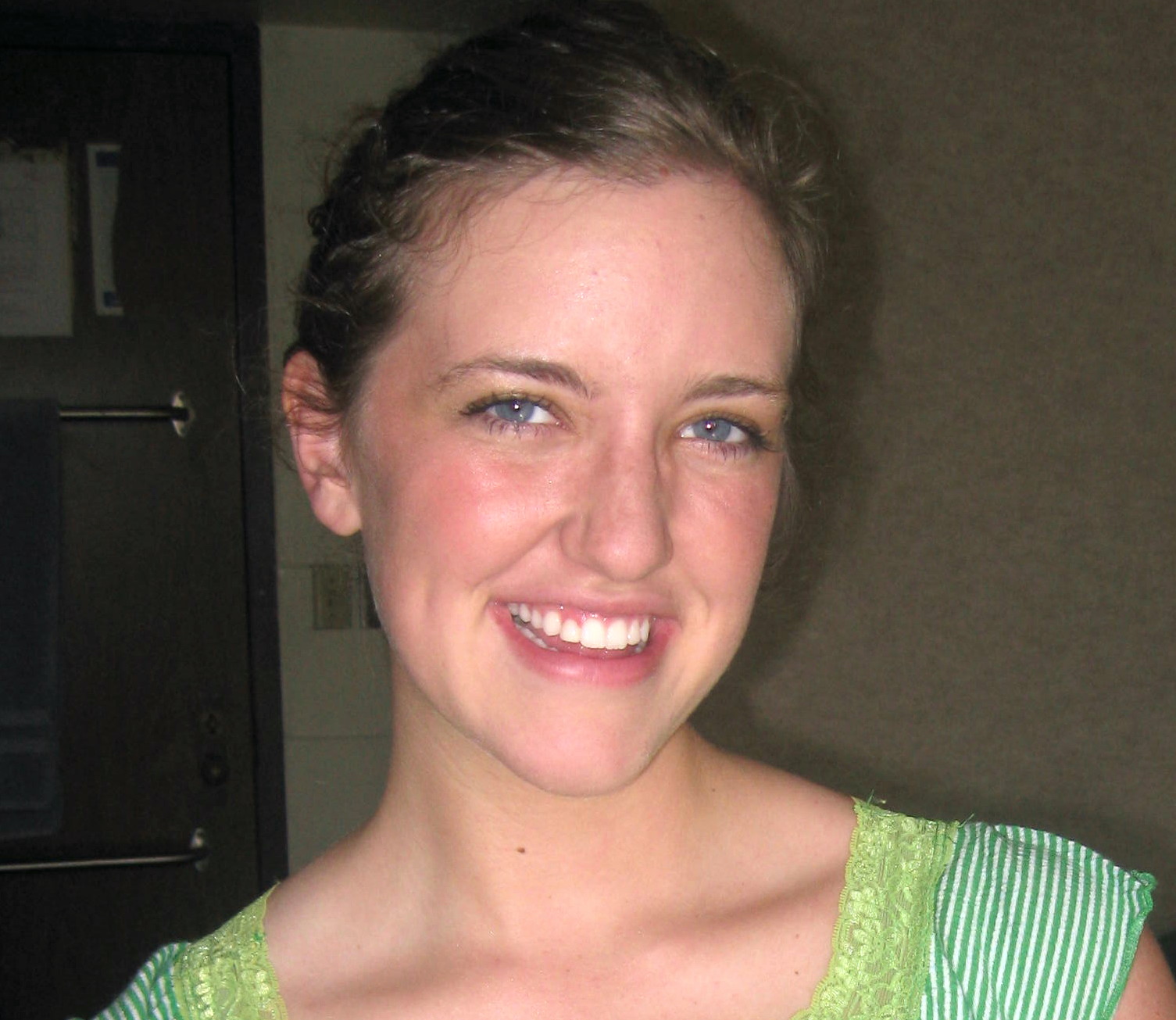
I am helped in the bio350 course
Randi
Barnett
I am helped in the bio350 course
Sarah
O'Nan
I am helped in the bio350 course.
AlisonThurow

I helped in the bio350 course
Sonya Bierbower
Visit my www page (Go To)
Spring 2010, PHD [PDF]
JOVE Movie: Crayfish Heart
Hear her talk (movie MPEG file & ppt download to your computer to view) {CO2 study}
Crayfish behaviors such as motor task learning. Also investigating physiological stressors in crayfish.
Kylah Rymond
My www page (go to)
I am a high school student at Henry Clay. I will be working on a science fair project in the Cooper lab. I am still determining what the project will be on for this year.
See high school www page (go to)
Matt Ward
I am working with Mohati on the regulation of calcium in heart activity within Drosophila.
Clay Turner
I am a 2nd year student at UK. I started working in the lab in September, 2004 as a high school student. See high school www page (go to)
The effects of an altered serotoninergic system on behavior and development in Drosophila melanogaster
ABSTARCT
Drosophila is a simple model system that provides an advantage over vertebrates to modify genetically and for electrophysiological studies on identifiable cells. In this organism the sensory-CNS-motor circuit is modulated by 5HT, OA, DA, which gives one insight that these neuromodulators are playing a role in central neuronal circuits. The role of 5HT in the behavior and development of Drosophila melanogaster larvae is being studied. p-CPA (para-chlorophenylalanine) blocks the synthesis of 5HT by blocking the enzyme tryptophan hydroxylase. The developmental and behavior differences in a 3rd instar larvae after feeding this drug for a chronic and acute period is to be observed. Alteration in the central nervous system biochemically and anatomically will also be investigated.
AIM
Address the role 5HT plays in the development of Drosophila and
changes in central nervous system physiological response due to pharmacological
manipulations (by feeding p-CPA) during the development.
Marti Robinson

 Marti.Robinson@uky.edu
Marti.Robinson@uky.edu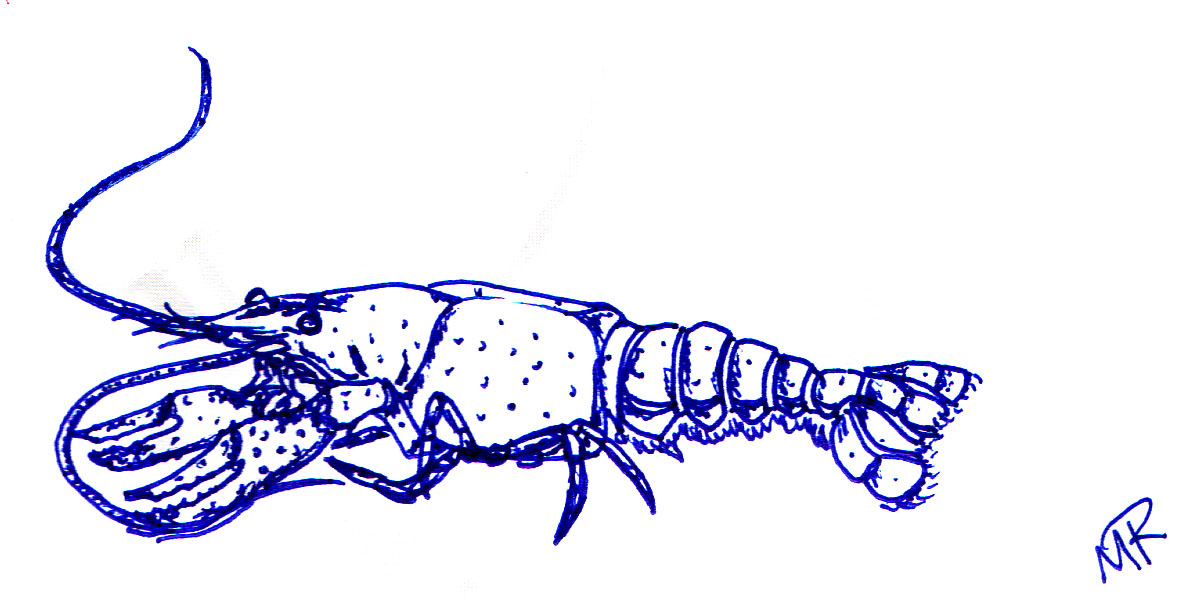 (Marti's crayfish)
(Marti's crayfish)
I am working on chemosensory studies in crayfish.
Easter Bocook
I am working on behavioral projects with crayfish in relatation to social interactions and sensory perception.
Mohati Sumant Desai
Visit my www page (Go To)
PhD [PDF]
My project revolved around chemical synaptic transmission. Within the presynaptic nerve terminal, transmitter is packaged within spheres called vesicles. When these vesicles fuse with the presynaptic membrane they release transmitter. The fusion of the vesicles with the nerve terminal is very dependent of the amount of calcium within in the terminal during stimulation. The more calcium that comes in the greater probability of a vesicle fusing with the membrane. Likewise the longer free calcium stays in the nerve terminal after a stimulation the more prolonged time for vesicular events to occur.
Captain Junyoung Lee
Visit my www page (Go To)
MS thesis- [PDF]
I am a MS student in Biology. My focus is in understanding properties of synaptic transmission using fruit flies and crayfish as model preparations. I am an active officer in the Korean Military (Seoul, South Korea).
Shelly Xu
I am working on behavioral projects with crayfish in relatation to social interactions and sensory perception. I am a high school student at Dunbar High School.
See high school www page (go to)
Madison Allen
I am working with Sonya in examining environmental factors that influence crayfish behavaiors.
Joe Mando
(Chemosensory physiology) joseph.mando@gmail.com
Becca Liberty

I am working on crayfish behavior projects. I am developing ethograms for interactions in deifferent environments.
Jessica McQuerry
- ( Ethograms ?) jessicamcquerry@uky.edu
Maddie Delgado
I am researching on the caudal photo receptors in crayfish.
See high school www page (go to)
Barbie Kelly
I am working with Sonya in examining heart rate and ventalation rate in crayfish exposed to environmental factors.
Vadim Galperin
I am working on crayfish behavior projects related to sensory perception.
Yuri Boyechko
I am working on projects related to learning and memory in crayfish.
Curtis Northcutt
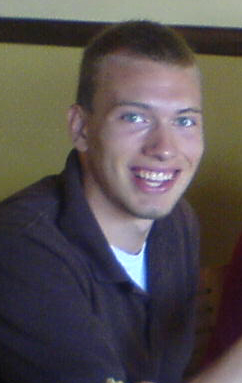
I am researching on glutamate receptors and their various kinetic states.
See high school www page (go to)
Courtney Allen
I am investigating learning and memory in crayfish.
Vinay Srinivasan
My research is related to the fundemental properties of synpatic transmission and the influence of calcium regulation within the motor nerve terminal.
Sahill Naik
I am helping with examining learning abilities in crayfish.
Jin-Young Kim
I am working with Sonya in examining behaviors in crayfish.
Joshua Eason
I am working with Sonya in examining environmental factors that influence crayfish behavaiors.
David Kerbl
I am working with Mohati on the regulation of calcium in heart activity within Drosophila.
Ray Geyer
Raymond.Geyer@uky.edu
I am working with Sonya in examining crayfish exposed to environmental factors.
Jennifer Jackson
I am helping Sonya with heart rate analysis in crayfish when the crayfish are in various behavioral states.
Antony Kariuki
I was a graduate student in Biology. I was working on research related to neural development in Drosophila melanogaster.
Keith Holmes
I am helping out on behavioral projects with crayfish
related to stressors.
MaryCatherine Wright

I was helping out on behavioral projects with crayfish related to social interactions.
Jayme C. Mitchell
I am working with Andrew on the regulation of calcium in chemical synaptic transmission and heart activity within Drosophila.
Tyler McLaurine

Tyler will be examining
physiological stressors in crayfish at the behavioral level, as well as,
the effects at the cellular level.
Tori Spence
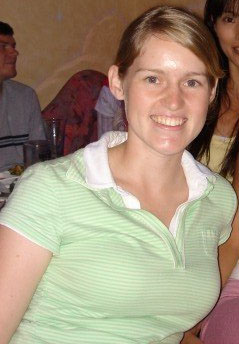
I am working on comparative studies of sensory responses to a multitude of stimuli in crayfish.
Doyle Stephens Jr.
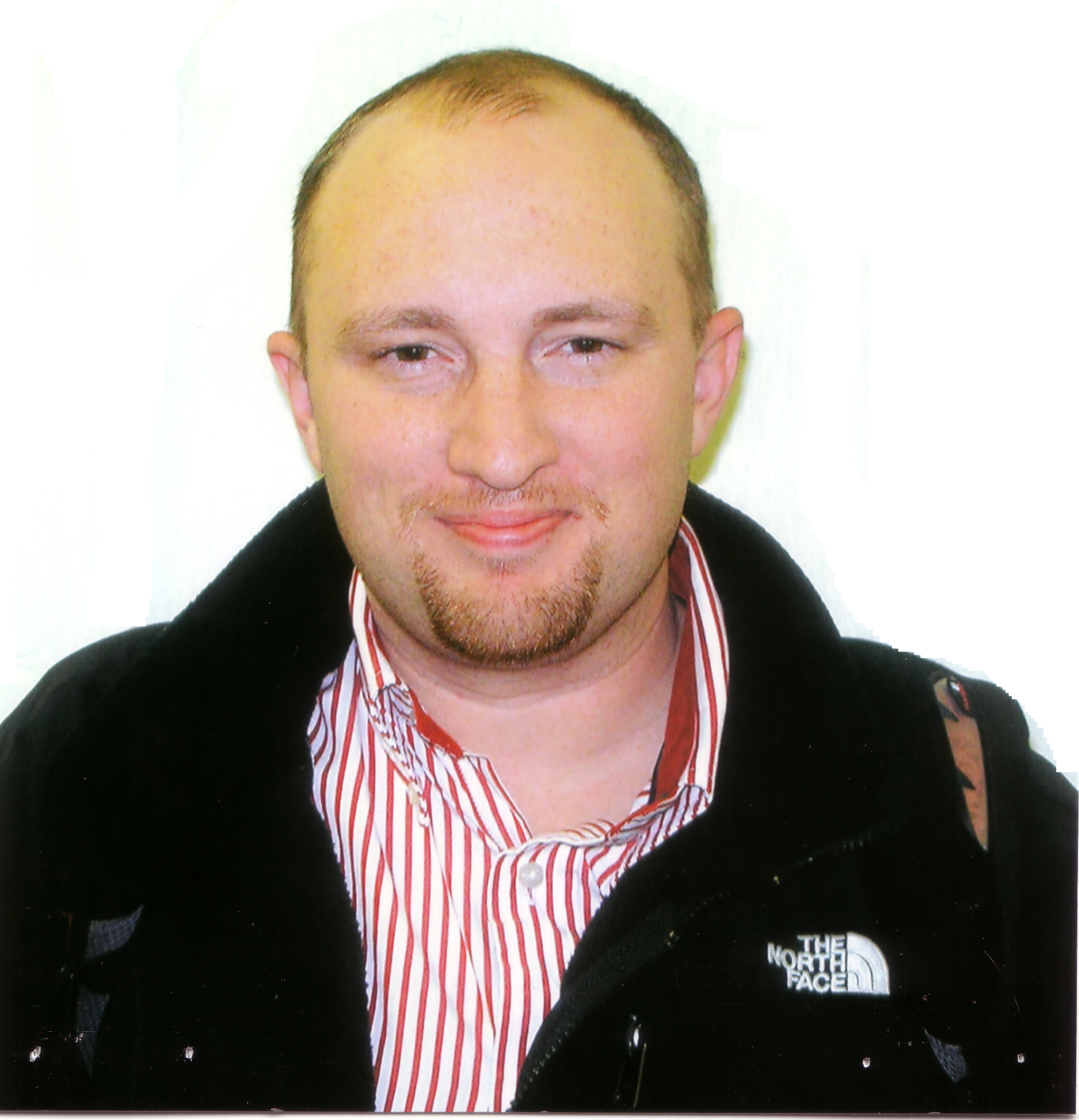
I am researching behaviors in crayfish and recording physiological parameters such as heart rate and ventilatory rate.
Andrew Papoy
My project involves the regulation of calcium in chemical synaptic transmission
and heart regulation within Drosophila.
Justin Kolasa
I was researching on behaviors in Drosophila.
Nicolas Badre
READ ALL ABOUT HIM (click on link)
http://www.uky.edu/PR/News/050426_beckman_scholars.htm
My goals are to determine the mechanisms of action by which 3,4-Methylenedioxymethamphetamine (MDMA, "Ecstasy") can enhance synaptic transmission at 5-HT sensitive synapses in the Drosophila brain. Since Sameera, in our lab, has developed an in-situ preparation to induce motor unit activity by stimulating a sensory-CNS circuit, using the 3rd instar larvae of Drosophila melanogaster, I will use this procedure to address the role that MDMA has in altering the activity and determine if the actions are mediated by 5-HT receptors. The powerful genetic manipulation in Drosophila opens many avenues for further investigations into the circuitry and cellular aspects of pattern generation and developmental issues of circuitry formation and maintenance in the model organism.
Carly or Catherine Ormerod
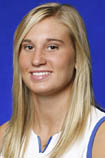
I was researching learning behaviors in Drosophila.
Summer 2007
Zachary
Warriner (Fall 2007)

I was helping out on behavioral projects on Drosophila in relation to glutamate receptors.
Garnett Coy (Fall 2007)

I was involved with biological science education. I am working with middle and high school teachers as well as Dr. Margaret Mohr at Univ of KY College of Education. I am developing education modules that can be used in the class rooms for middle and high school advanced geometry and biology classes.
Marshal
R. Detherage (Summer 2007, Spring 2008)
I was working on research related to actions of nicotine in Drosophila melanogaster. The results might be useful for human studies as well as basic studies of understanding the receptor subtypes within a model organism, the fruit fly.
Devki Bhatt

My research concerns identifying the types of glutamate receptors at the neuromuscular junction in Drosophila by various pharmacological means. I am learning how to dissect these little creatures and measure excitatory neuromuscular junctions.
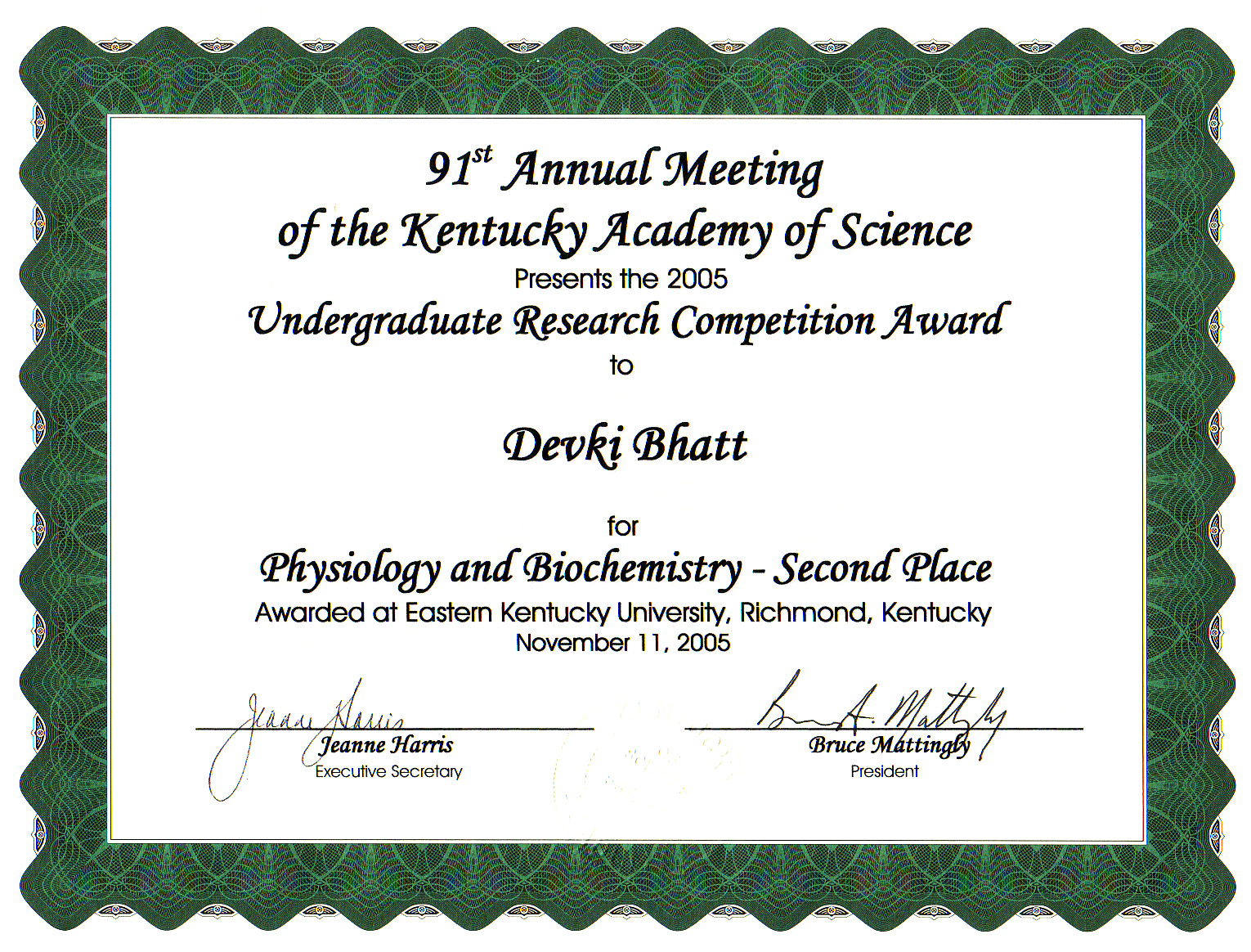
Brent Hayden

On repetitive stimulation, certain motor neuron terminals (i.e. the crayfish tonic opener motor neuron) do not rapidly depress over a period of hours for short trains of stimulation at 40Hz but can continually demonstrate STF. When a short train of pulses at a given frequency (20 pulses at 40 Hz) is applied, the excitatory postsynaptic potentials (EPSPs) may reach a plateau in their amplitude during the pulse train. This higher [Ca2+]i can activate silent synapses and result in new vesicle docking sites to be active. I hope to monitor if these new sites can be detected by differences quantal recordings. It is assumed at present that synapses might have a "quantal signature" that can be used for quantifying their activity.
Kaitlyn McClelland
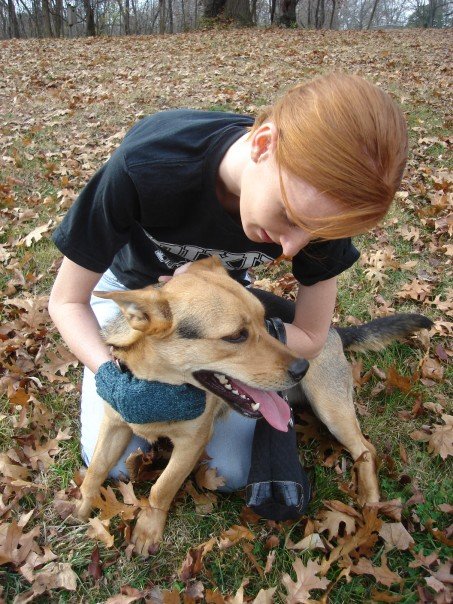
Kaitlyn is involved in modulation of Drosophila learning.
Terry Williams

Terry was involved with biological science education. He was working with middle and High school teachers as well as Dr. Margaret Mohr at Univ of KY College of Education. He developed education modules that can be used in the class rooms for middle and high school advanced geometry and biology classes.
Hyoseok Chae
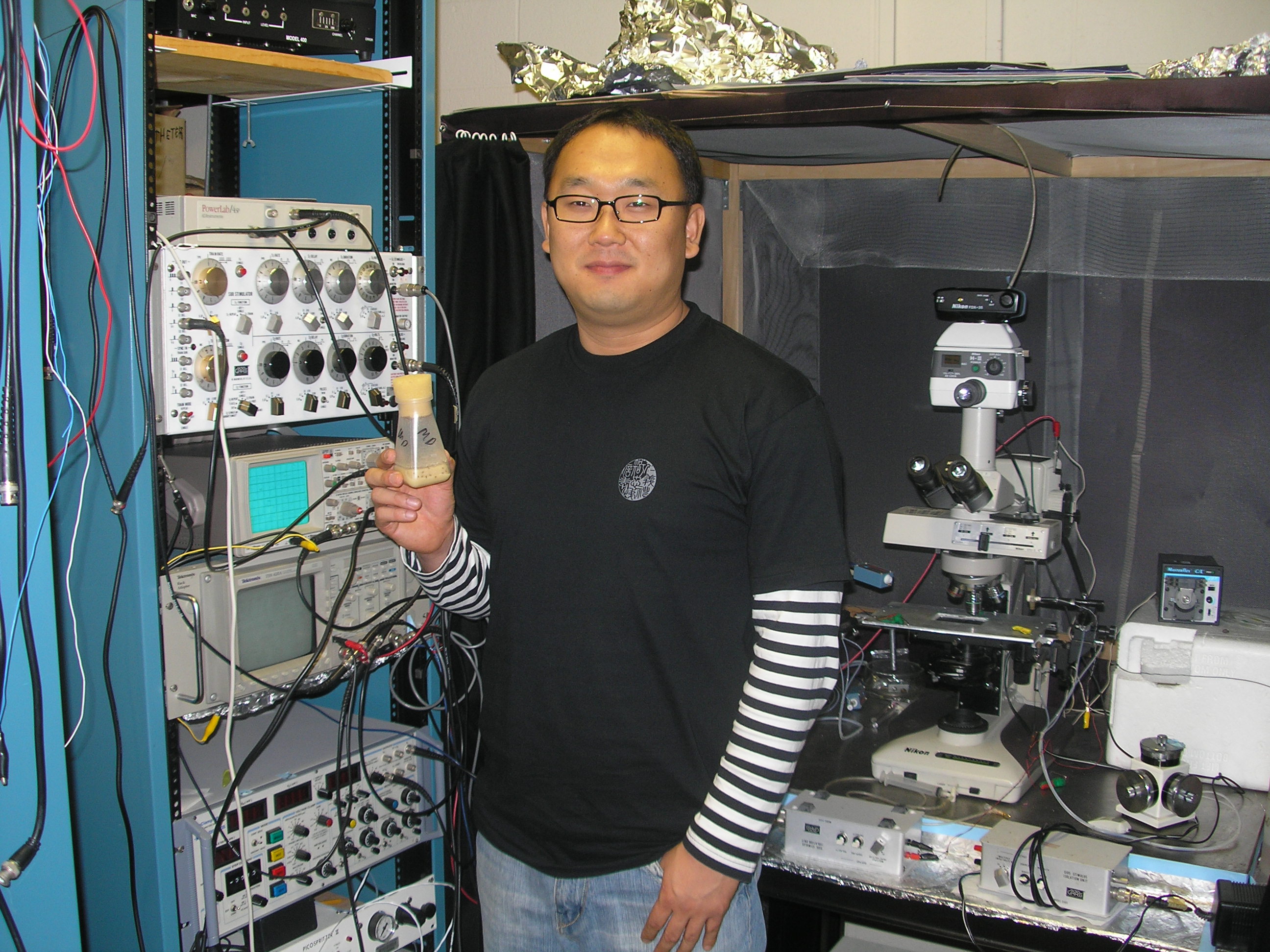
VISIT HIS WWW PAGE (GO TO)
I am a visiting graduate student from Chonnam National University, Gwangju, Korea. My PhD mentor is Dr. Chang Kim at Chonnam National University. I am researching on sensory neurons in Drosophila larvae. Electrophysiological recordings from primary sensory neurons is my focus.
Thomas Cunningham
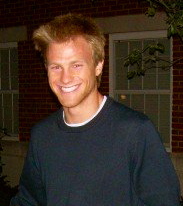
He examined physiological stressors in crayfish.
Meagan Griffin
The quality and quantity of food is very important to development of animals. Not only is this necessary for life but for the reproduction of the species for fertility. More subtle effects of diet can also be seen in relation to learning and memory. Such general phenomena not only apply to humans but to all animals. Thus studying such topics in model organisms like fruit flies may allow one to gain a better understanding of the consequences in humans related to these topics. The basic features of growth and development of Drosophila have been studied in the laboratory for many years. The animals used for these experiments are small organisms, easy to rear and to count, with a short life cycle. Females tend to lay eggs for only about 5 days and then taper off. Many variables affect the population dynamics of growth. This investigation will deal with variation in density of females, composition of food sources, and in environmental factors such a temperature and light. Other factors can also be considered and pursued. However I plan to focus on how the quality of food affects development and fecundity. In addition, I plan to examine learning in larvae as well as adults based quality of food.
Andy
Johnstone, PhD (2006)

Visit my www page (Go To)
PhD [PDF]
I obtained a BS in Biology from EKU in Richmond, KY (Go Colonels!) and decided to go to graduate school at the University of Kentucky in Neuroscience. I investigated the structure pre-synaptic nerve terminals and its relation to neurotransmitter release. I did so utilizing the macropatch recording technique and transmission electron microscopy (TEM). To know more please download my Ph.D. project: {PDF}
The crayfish tonic opener muscle offers the advantage of being able to
record quantal events at specific visually identified release sites, thus
allowing measurement of the physiological parameters of vesicle release
which can be used to directly correlate synaptic structure.
These
experiments take advantage of a vital dye (4-Di-2-Asp), which highlights
nerve terminals allowing visualization of individual low output varicosities
(sites of neurotransmitter release). Once one is located it may be "bookmarked"
by the use of polystyrene beads, which are both fluorescent and election
dense. Electrophysiology may then be performed and the site marked for
structural analysis. By labeling the nerve terminal recorded, it is possible
to serially thin section the exact area and visualize it by TEM. These
electron micrographs may then be reconstructed into a three-dimensional
representation of the area recorded and the ultrastructure may then be
compared to different aspects of physiology for a direct structure/function
assessment. Release sites on synapses known as active zones may then be
identified and their number and spacing revealed.
.................My 1st TEM !! 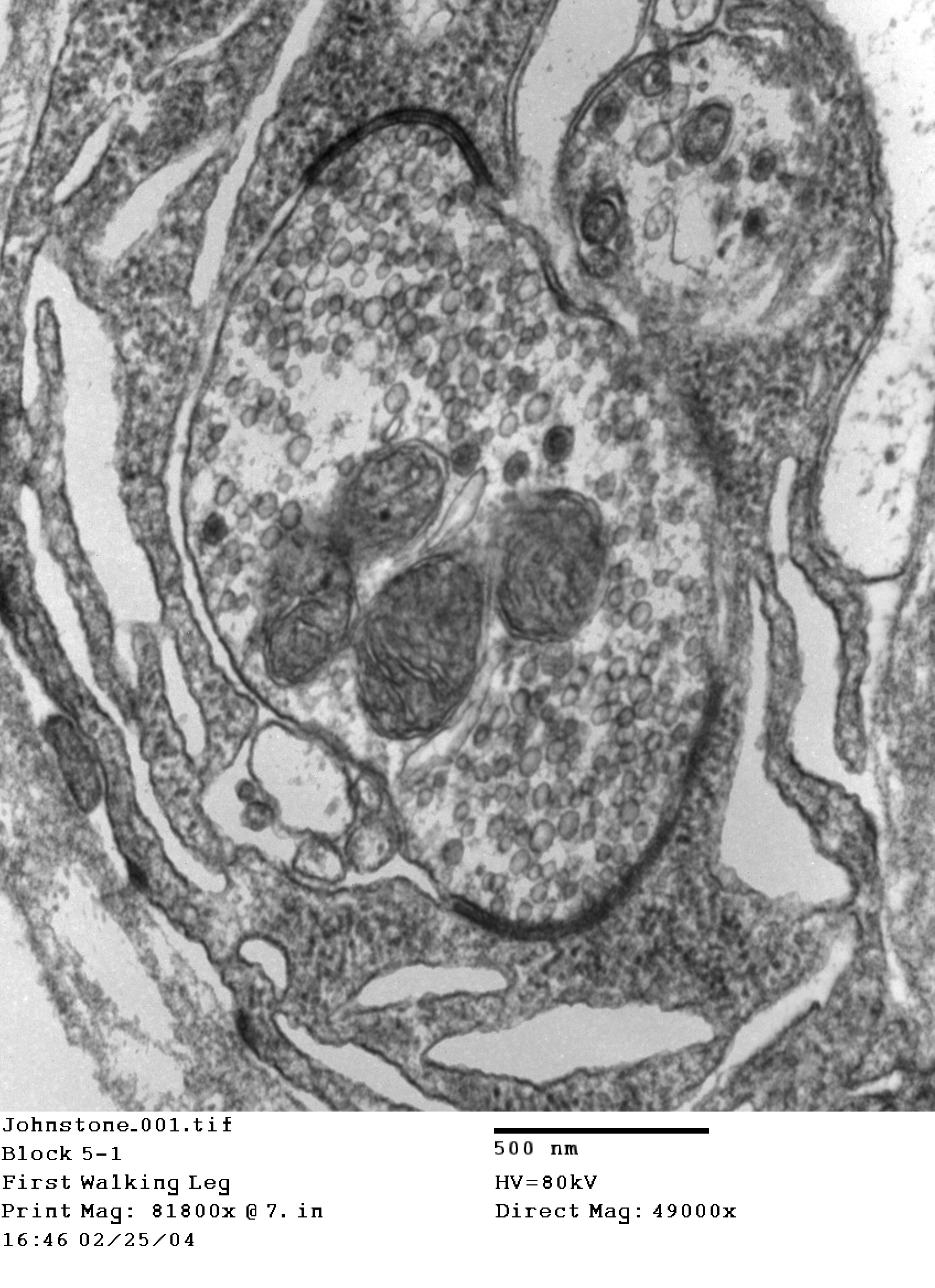
Sameera
Dasari, PhD (2006)
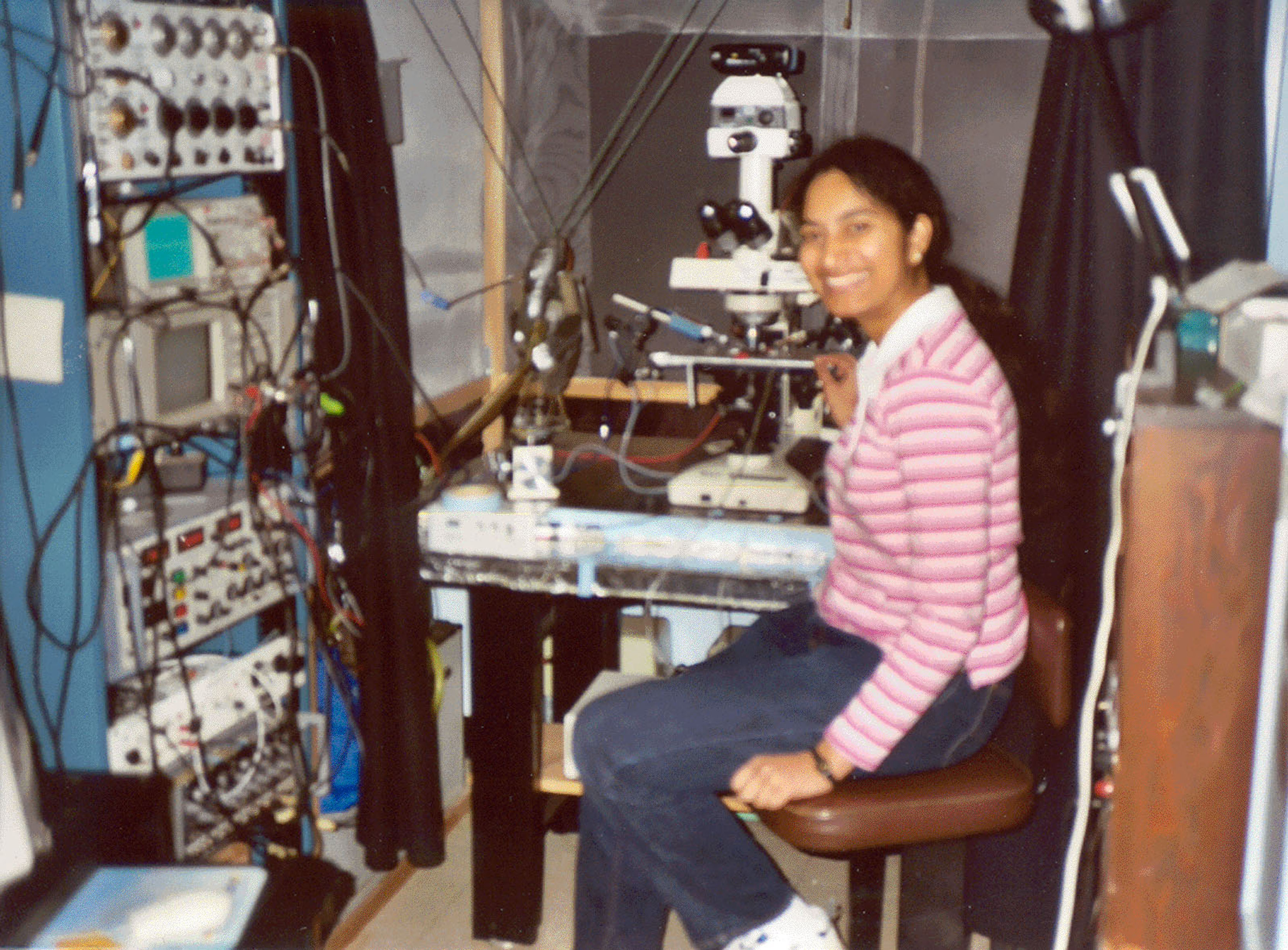
Visit
my www page (Go To)
PhD [PDF]
I am from southern India and joined the lab in January 2003. My projects involved pharmacological assessment of the central and peripheral receptors to various neuromodulators in Drosophila (fruit flies).
The ability to combine a genetically favorable system and pharmacological studies is opening new horizons in regulation of development, regeneration and repair of central neural circuits. In addition, neuromodulators provide a rapid way in which animals can tune up or down activity within a neural circuit and may be responsible for rapid changes in behavior, as recently examined for aggressive behavior in Drosophila. I am assessing three common neuromodulators of interest in arthropod neurobiology: serotonin (5-HT), octopamine (OA), and dopamine (DA). There is a precedence of 5-HT, DA, and OA to have central effects in the Drosophila brain.
To know more please download my Ph.D. project: {PDF}
Jong Hoon Lee
I am visiting the
Univ of KY during the summer of 2006.
My home school is Yeungnam University in Daegu, South Korea.
I am learning
neurophysiology and animal behavior related with Fruit Flies (Drosophila).
Jessica Hill
She worked on research related to actions of nicotine in Drosophila melanogaster. If I can demonstrate in either larvae or in adults that known antagonist to nicotine receptors can block addictive nicotine behavior it could be used to aid vertebrate studies on the subject. The results might be useful for human studies as well as basic studies of understanding the receptor subtypes within a model organism, the fruit fly.
Stephanie Logsdon
(Fall 2003 & Spring 2004-Ribble Scholar Dept of Biology. Summer 2004- Undergraduate Research, Research and Creativity grant for $ 2,500).
BECKMAN SCHOLAR- RESEARCH FELLOW - see write up (go to)
I am currently a junior Biology major looking forward to knowing more about neurobiology. I plan to start working on projects involved on synaptic homeostasis in crayfish muscles which compliments other studies on going in the lab with the Drosophila NMJs.
The advantage of studying synaptic transmission at the crayfish neuromuscular junction is that the sites of synaptic contact can be studied directly. The neuromuscular preparations in the crayfish offer many advantages as compared to vertebrates neuromuscular junctions (NMJs), since one to only a few excitatory motor neurons innervate a muscle, and the neurons are identifiable from preparation to preparation. In addition, the excitatory neurotransmitter is glutamate and the excitatory postsynaptic potentials (EPSP) are graded; thus, the biophysical properties of graded events are analogous to the dendrites of neurons within the CNS of vertebrates, but the quantal currents can be monitored at the postsynaptic sites in the crayfish NMJ.
Deval Bhatt
I am working on projects related to synaptic transmission at the Drosophila (fruit flies) neuromuscular junction.
Chalice White
(nick name JW)
I am following up on research started by my husband Joe (see below under past students). Learning is a complex task for animals since it involves various neural circuits and environmental context during a learning period. In addition researchers have broken down learning into various forms. A simple form of learning is associative learning. A well known example is Pavlov with dogs. Dogs were trained to associate a bell or a light with food. Since a intact functional nervous system is essential for learning, it is not surprising that the behavioral state of an animal is important in the ability to learn. Likewise if the neural circuits are modulated by substances either that are endogenous to the animal or introduced exogenously learning can be impaired or even enhanced . Since it has already been demonstrated that 5-HT (serotonin) can alter electrical activity of the larval brain then any alteration in its levels might also effect associative learning. Amazingly enough even insects, such as adults and larval Drosophila, demonstrate associative learning.
Joseph White
Learning is a complex task for animals since it involves various neural circuits and environmental context during a learning period. In addition researchers have broken down learning into various forms. A simple form of learning is associative learning. A well known example is Pavlov with dogs. Dogs were trained to associate a bell or a light with food. Since a intact functional nervous system is essential for learning, it is not surprising that the behavioral state of an animal is important in the ability to learn. Likewise if the neural circuits are modulated by substances either that are endogenous to the animal or introduced exogenously learning can be impaired or even enhanced . Since it has already been demonstrated that 5-HT (serotonin) can alter electrical activity of the larval brain then any alteration in its levels might also effect associative learning. Amazingly enough even insects, such as adults and larval Drosophila, demonstrate associative learning.
Forrest Harrison
I am working on projects related to development of Drosophila (fruit flies) and the effects of neuromodulators. I am also testing the role of neuromodulators in altering the animal's ability to learn as larvae and adults.
Danielle Goulding

I am examining the CNS activity to known 5-HT receptor agonists used in vertebrates. Known antagonists will also be used to see which ones can block the effects to exposure of 5-HT. These same agonists & antagonists will also be used on the larval heart to test their effects. These studies will aid in pharmacologically identifying the 5-HT receptor subtypes and their localization.
Blaire W. Cullman-Clark
I am working on projects related to synaptic transmission in the Drosophila (fruit flies) which are involved with pharmacological assessment of the central and peripheral receptors to various neuromodulators & neurotransmitters.
Megan Adami

Justin L. Blackburn

I am working on projects related to addictive behaviors of Drosophila (fruit flies).
Maurice-Pierre
Pagé
Maurice-Pierre is now a 2nd yr Medical Student (MD program) at UK, but we are still working on some projects.
I am a displaced French Canadian and somehow ended up at UK for my undergraduate studies. Next year I will be attending UK's medical school. Over the last year I have been working on how novelty stress and reproductive state alters responsiveness to sensory stimuli and 5-HT neuromodulation
Stress in animals induced by environmental stimuli may arise in several forms. One such stress is novelty induced stress by exposing animals to stressors that they are not normally provided in their natural environment. Environmental stressors can also be induced as stimuli but of intense levels to what are found within their natural setting such as light or noise. In examining how animals react to additional stimuli when stressed allows one an insight into the physiological status of the animal. It is well known that pharmacological agents show varied responses in animals which in some cases is due to the behavioral status such as in a hyper excited or relaxed state.
Garrett Sparks
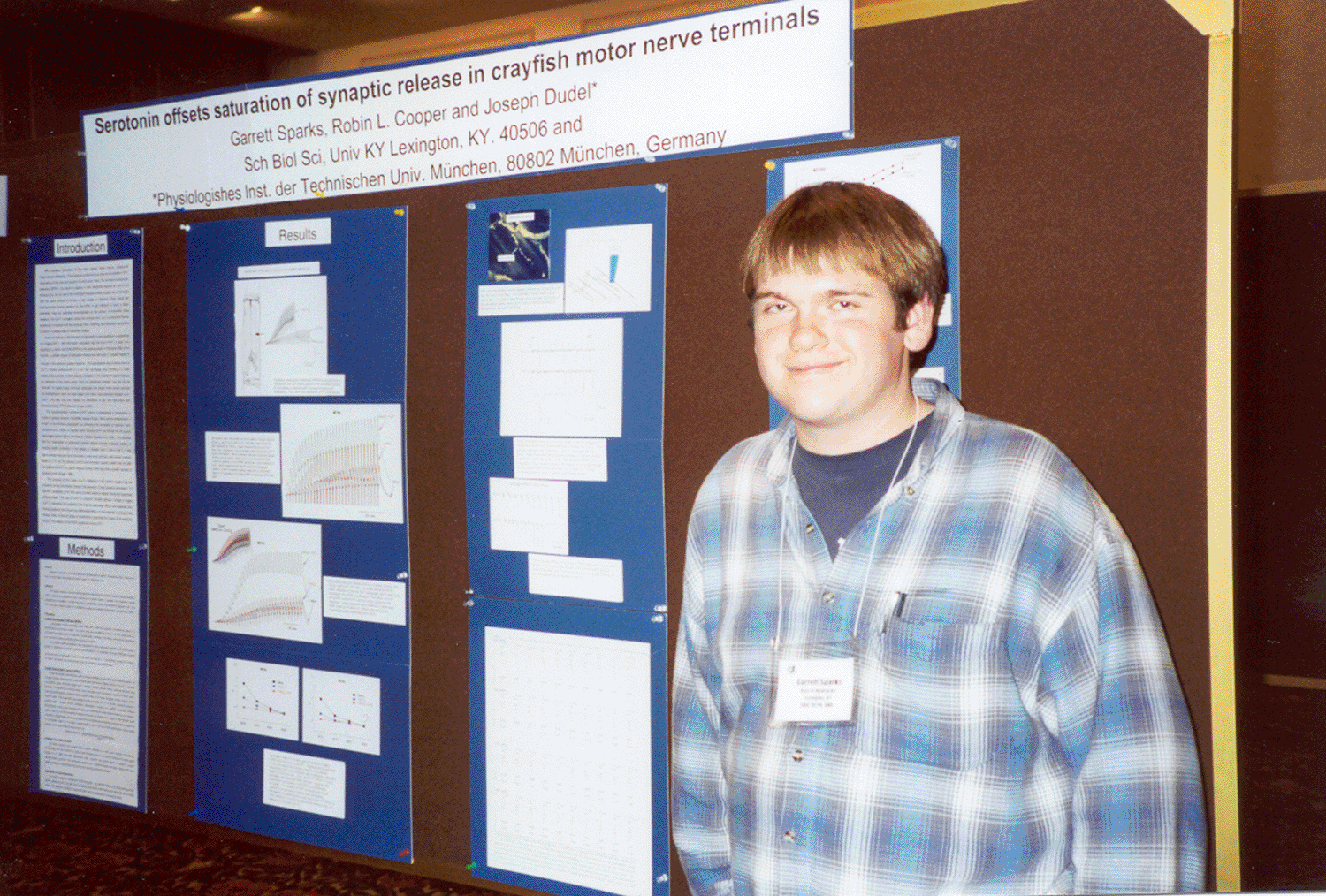
Garrett has now moved on to the Univ. of Mich. Medical School (MD program), but we are still working on some projects.
I
have been in the Cooper lab since the beginning of time. I am originally
from Kentucky and have found UK a convenient place to pursue an undergraduate
education. With a Beckman fellowship I have been able to live off a good
stipend for the last year in order to spend time learning about research.
I am looking forward to going on to medical school next year and I plan
to continue with research throughout medical school training and in subsequent
years.
My
project revolved around chemical synaptic transmission. Within the presynaptic
nerve terminal, transmitter is packaged within spheres called vesicles.
When these vesicles fuse with the presynaptic membrane they release transmitter.
The fusion of the vesicles with the nerve terminal is very dependent of
the amount of calcium within in the terminal during stimulation. The more
calcium that comes in the greater probability of a vesicle fusing with
the membrane. Likewise the longer free calcium stays in the nerve terminal
after a stimulation the more prolonged time for vesicular events to occur.
The purpose of my studies is to determine if the release process maybe saturated during the plateau phase in the presence of high frequency stimulation when further increases in stimulation frequency failed to enhance transmission significantly. To test this possibility, serotonin (5-HT) was used to further enhance release during this maximized plateau phase. 5-HT is a endogenous neuromodulator in the crustacean model that I am using to investigate these principles. The use of 5-HT to promote synaptic efficacy, instead of higher [Ca2+]o , prevented the resetting of the Na-Ca exchanger and displacing ionic driving gradients which would have differential effects on the potential recruiting of new release sites. A second series of experiments examined the impact of off-setting the Na-Ca exchanger on the plateau of the EPSP amplitudes during STF.
Dexter V. Reneer
I am a senior biology major at Centre College in Danville, KY working in Dr. Cooper's lab for the month of January. My work is centered around synaptic transmission and neuroelectrophysiology in crayfish. After graduation in May, I hope to go on to graduate and medical schools. My biggest interest lie in neurodegenerative disease and in examining the brain during the process of aging. I would like to, one day, do both research and practice medicine.
Hyun Sik Yang
I am a premedical student at Seoul National University, Seoul, South Korea. I am working in the laboratory from January to late February 2004 to learn neurophysiology techniques related to measures of ephaptic communication between neurons. The project consists of intracellular recordings from motor neurons and investigating the influence of electrical activity of one axon on a closely associated neighboring neuron enclosed in the same glial sheath. Ephaptic effects occur since axons are confined by restricted extracellular volume in the same space enclosed by a glial sheath. Large extracellular voltage changes as a result of electrical activity in the form of action potentials can result in ephaptic excitation in another neuron or cell. This is the foundation of the spread of epileptic activity and sensory pain due to muscle or motor nerve damage in humans.
Mark Lancaster (PhD-2007 in Statistics)
My PhD research in the Statistics department has centered around writing
software and analysis of synaptic function by quantal analysis. Investigating
the function of individual synapses is essential to understanding the
mechanisms that influence the efficacy of chemical synaptic transmission.
The known simplicity of the synaptic structure at the crayfish neuromuscular
junction and its quantal nature of release allow an assessment of discrete
synapses within the motor nerve terminals. My goal is to investigate the
effect of the stimulation frequency on the number of active release sites
(n) and the probability of release (p) at those active sites. Because
methods based on direct counts often provide unstable joint estimates
of (n) and (p) and underestimates n, we base our analysis on mixture modeling.
In particular, the mixture modeling approach is used to estimate (n) and
(p) for stimulation frequencies of 1Hz, 2Hz, and 3Hz. Our results indicate
that as the stimulation frequency increases, new sites are recruited (thus
increasing n) and the probability of release (p) increases. The increase
in (n) and (p) are not as well reflected by estimates obtained by direct
counting procedures and binomial distributions. Funded by NSF grants IBN-9808631,
NSF-ILI-DUE 9850907, NSF-DMS-9971954, and NSF-IBN-0131459.
